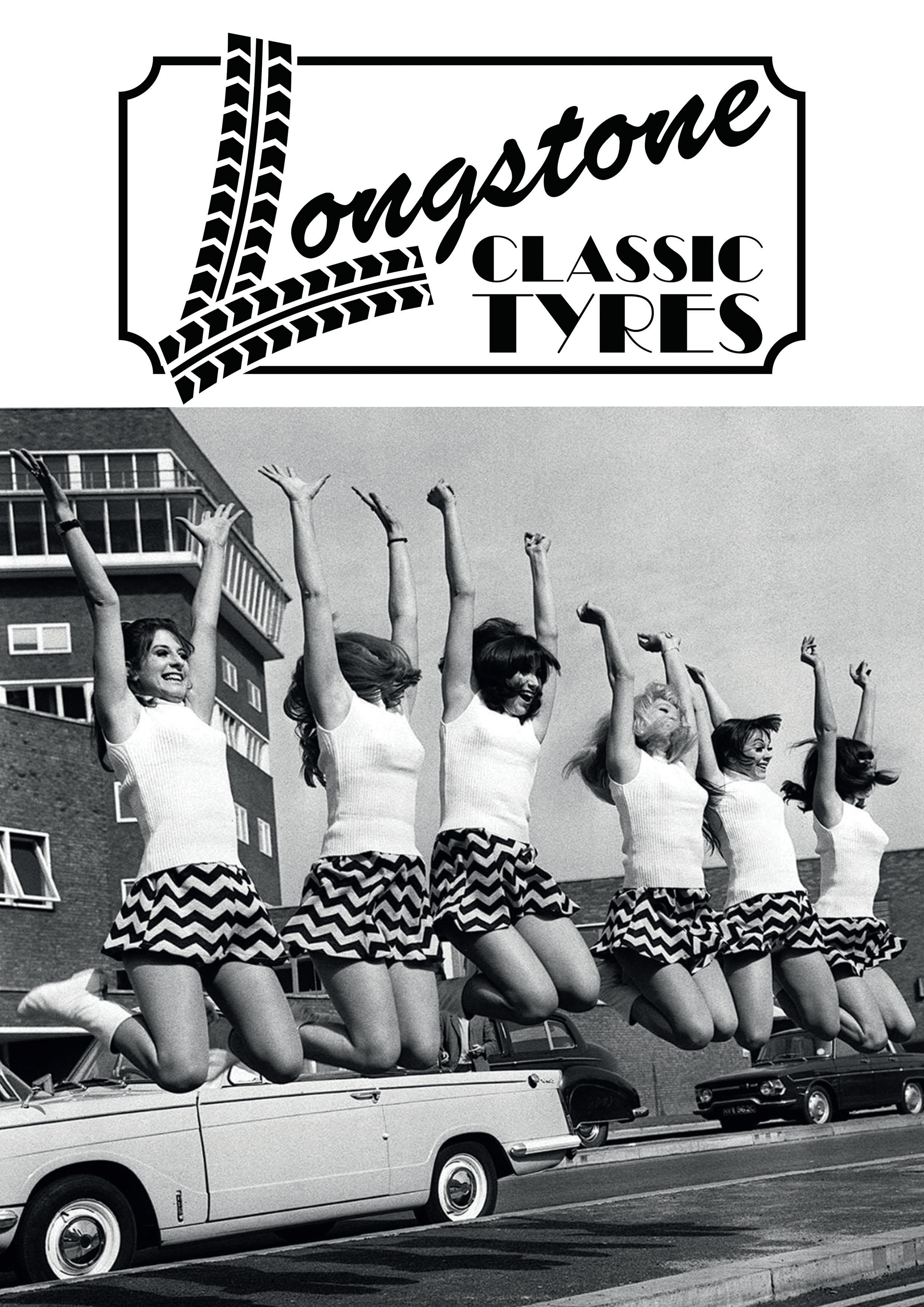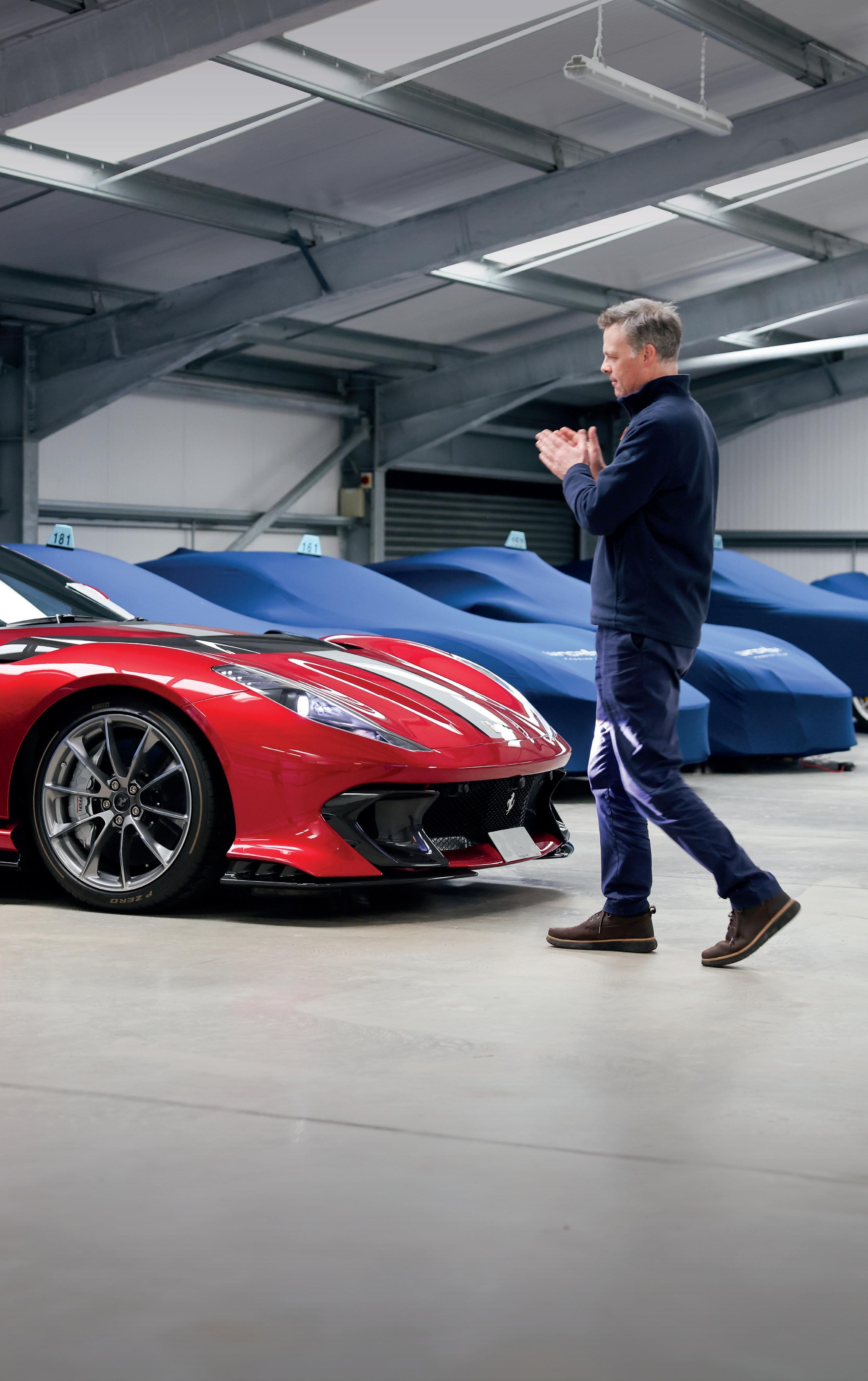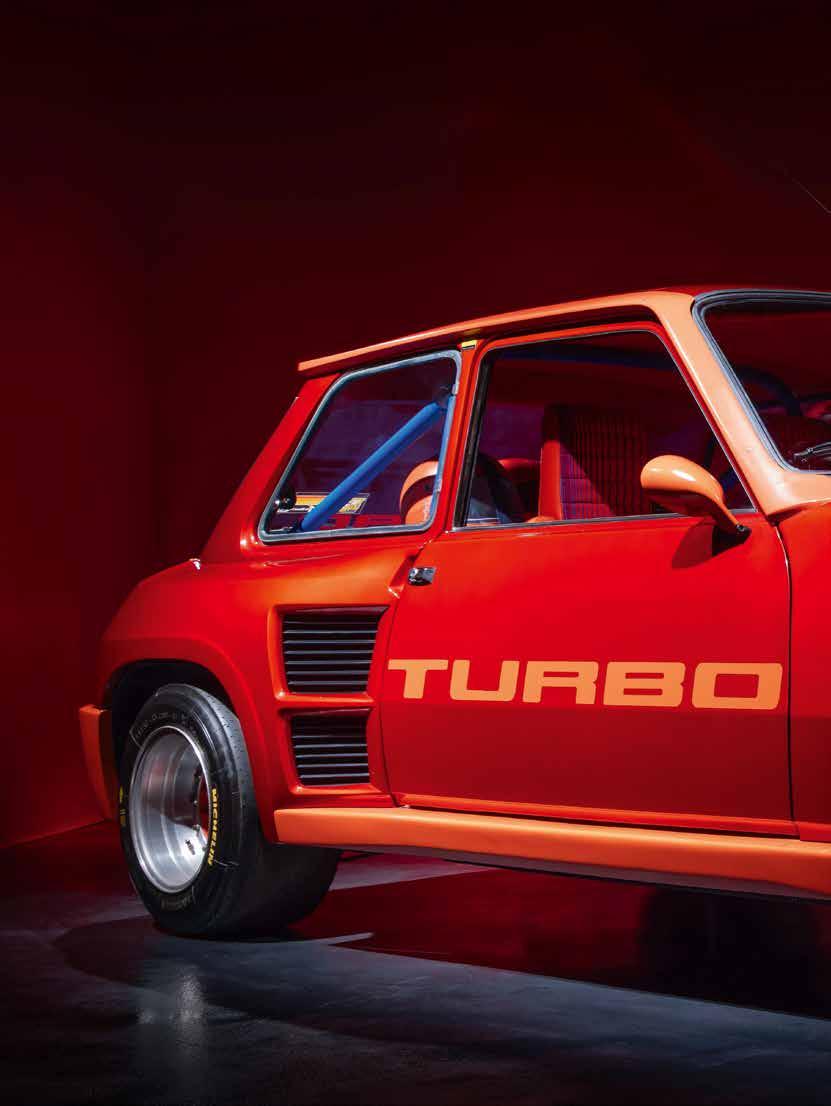

DRIVERS CLUB
High five
The story behind Renault’s mad mid-engined 5 Turbo
Allen Millyard on his V10 motorbike & more
Hagerty Drivers Club members get discount at clubmotul.co.uk with code HDC15
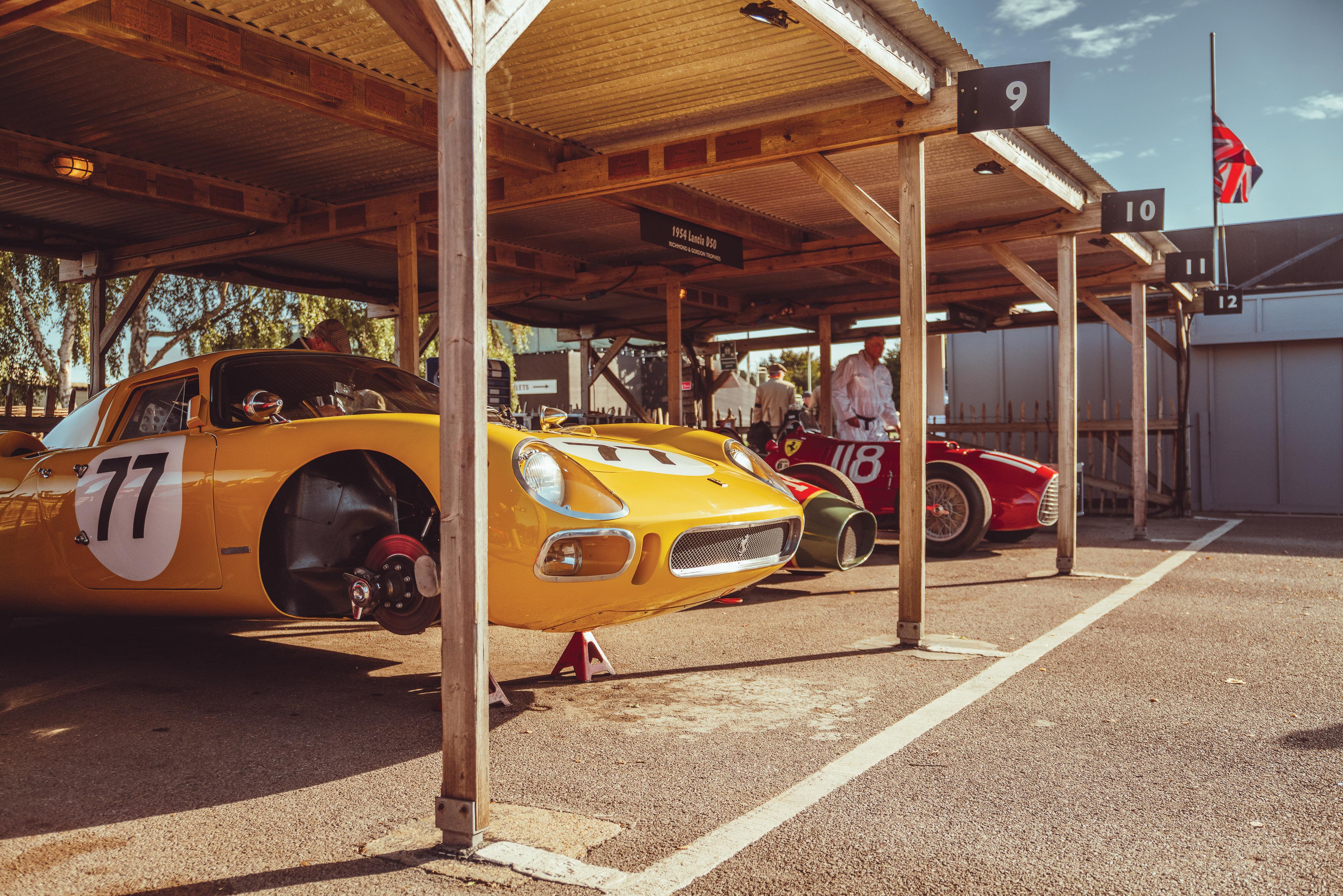
WELCOME
ISSUE #3 I SUMMER 2025
Classic bikes and cars make you feel good
From events to messing around in the shed, we know that classics make us happy
By Mark Roper
IT’S EASY TO OVERLOOK JUST HOW important our classic hobby is, but I was reminded of it one weekend recently. A fellow enthusiast was talking about cars, and he revealed that it’s his classic that keeps his mental health in check; whether driving it, visiting an event or just chatting to friends about it over a coffee.
I think we can all relate to that in some way, even if it’s just about the ability to relax for a couple of hours. Classic car and bike events are a great place to socialise, which is good for all of us – but even that little escape from everyday life while polishing, fixing, upgrading or simply researching a few facts or looking for parts makes a difference.
By coincidence, there is plenty in this issue of the magazine that’s relevant to this subject. Most obviously, you will find an article up front on Takona, which is now a Hagerty Drivers Club partner, and how it uses classic events as a way of allowing people to open up about their feelings.
We saw exactly how well car enthusiasts get on at the recent HDC Goes North tour,
with a group of strangers quickly becoming friends and bonding over the widest variety of vehicles we could have hoped for. Great weather and stunning roads just added to the mix. Hagerty ambassadors John Mayhead and Charlotte Vowden describe their experiences on the event perfectly within these pages.
If you find respite in the garage or shed, though, we have the ultimate ‘tinkerer’ for you: engineer Allen Millyard, who’s best known for his Dodge Viper V10-engined motorcycle and for his appearances on The Motorbike Show with host Henry Cole. If nothing else, his outlandish creations will make you smile. You’ll find an interview with Allen further on in this issue.
Personally, two of the events I enjoy the most are at opposite ends of the classic spectrum: the Goodwood Revival and our very own Festival of the Unexceptional. I would urge you to attend one or both of these amazing events if you can. It’s only the lucky few who get to race at the Revival, but you can turn up in any pre-1966 classic and become a part of it all.
The Classic Choices feature in the back section of this issue might provide you with a bit of inspiration, almost regardless of budget. We have seen a group of friends turning up in a relatively cheap Austin Westminster, dressed in period clothing, and having a whale of a time.
And as for Festival of the Unexceptional... well, you know that we love it, so we’ve selected a few of the best FOTU cars here.
Even if you don’t have appropriate machinery for either, just come along, grab a coffee, have a chat, enjoy what’s going on. You know you’ll feel better for it.

WHO TO CONTACT
HAGERTY DRIVERS CLUB
MEMBERSHIP
hdc@hagerty.co.uk
www.hagerty.co.uk/drivers-club 0333 323 1138
REV UP YOUR REWARDS
Scan the QR code to track an interaction!

EDITORIAL ENQUIRIES
David Lillywhite david@hothousemedia.co.uk
ADVERTISING ENQUIRIES
Sue Farrow sue@flyingspace.co.uk
Rob Schulp rob@flyingspace.co.uk
ADVERTISING PRODUCTION
Elaine Briggs elaine@hothousemedia.co.uk
ACCOUNTS
Jonathan Ellis accounts@hothousemedia.co.uk
PRODUCED BY Hothouse Media on behalf of Hagerty Drivers Club
PUBLISHING DIRECTOR Geoff Love
EDITORIAL DIRECTOR David Lillywhite
MANAGING EDITOR Sarah Bradley
CREATIVE DIRECTOR Peter Allen
DESIGN Mal Bailey
PRINTING Buxton Press
© Hothouse Publishing Ltd. Hagerty Drivers Club and associated logos are registered trademarks of Hagerty. All rights reserved. All material in this magazine, whether in whole or in part, may not be reproduced, transmitted or distributed in any form without the written permission of Hagerty Inc and Hothouse Publishing Ltd.
MARK ROPER Managing director of Hagerty International and chairman of the Historic and Classic Vehicles Alliance.
The Hagerty Drivers Club UK magazine is published four times a year by Hothouse Publishing Ltd on behalf of Hagerty. Great care has been taken throughout the magazine to be accurate, but the publisher cannot accept any responsibility for any errors or omissions that might occur. The editors and publishers of this magazine give no warranties, guarantees or assurances, and make no representations regarding any goods or services advertised in this edition.

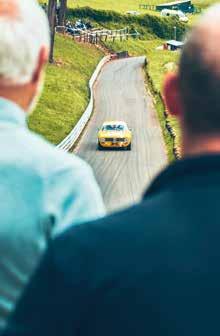
Paul Cowland bigs up the bland at the Festival of the Unexceptional
Derek Bell relates tales of his Le Mans adventures to Charlotte Vowden
Henry Catchpole drives an iconic race recreation, and ponders yin and yang
The (un)magnificent seven of the ‘greatest’ unexceptional FOTU
52 Hard driving in Grinnall’s mid-engined Scorpion III three-wheeler
58 1000 miles, three venues, five days: Hagerty on tour in a classic Porsche 944
Top-down motoring in a Mazda MX-5 as the HDC Goes North
Motorcycle engineer and TV star Allen Millyard: the ultimate man in a shed
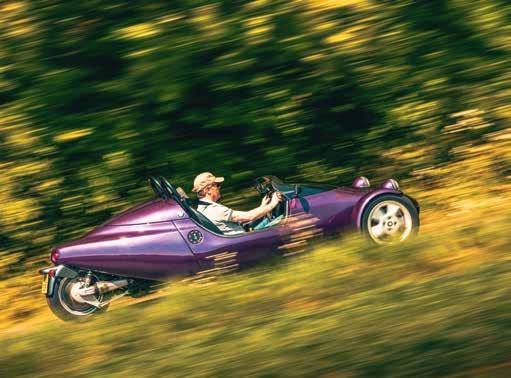
88 Buying a Lancia Delta Integrale – what to look for and what to avoid
Events from Hagerty and others. Grab your car keys and let’s get going
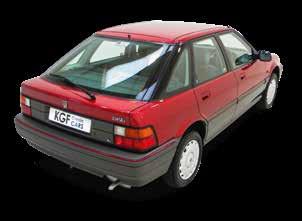
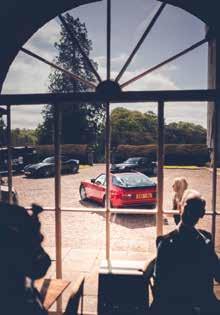
How to stand out in the famous Goodwood Revival pre-1966 car park
Mini or MINI? Hagerty staffer has a life-long love of the diminutive classic
CEO McKeel Hagerty on solving the industry’s looming skills gap

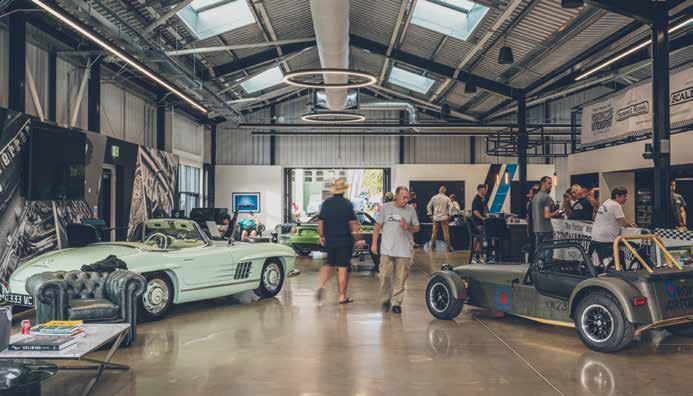
Tell Hagerty Drivers Club your stories
We want to hear about your classic vehicles, and show them off in future issues of the magazine
‘CLUB’ IS A WORD THAT’S OFTEN misused, but we really do want the Hagerty Drivers Club to embrace all that’s good about clubs – that is community, sharing of information and telling of great stories.
On the subject of stories, please do send in details of your classic car and motorbike (or any other classic vehicle), because we would love to feature them in the magazine and on the HDC website.
You’ll see HDC member Mark Herbert’s E-type in the pages of this issue. Mark emailed us, and we sent a photographer to his house to snap the Jaguar, while a writer contacted Mark to find out more about the car. It’s a simple as that – and your pride and joy will be featured in
print. Don’t assume that the vehicle in question is not good enough or worthy of the magazine. If it’s yours and you love it, then there’s a place for it. Please just email us at hdc@hagerty.co.uk.
What else you can do:
● Tell us what you think of the club, of the discounts and of the magazine. Use the feedback form on the HDC website (scan the QR code below with your phone). Filling in the form counts as one interaction for your Rev Up Your Rewards programme.
● Use the Ask Hagerty questions and answers service. You can ask anything related to the classic car or bike world, and we’ll put your question to an expert. Each submission adds to Rev Up Your Rewards.
● Visit the Hagerty Drivers Club Members’ Area at any Hagerty event for a comfortable spot to rest, to chat with fellow members or simply to grab a drink.
● If you’re a Gran Turismo 7 fan, then make use of your exclusive access to a Hagerty Legend car.
● Come along to a Hagerty Hangout event. They are just £15 for you and a car-load of friends – and they’re great fun.
● Attend our HDC member-only events.
● Make use of the exclusive discounts.
● The more you engage, the more Rev Up Your Rewards points you gain. Four interactions in 12 months result in a reward.

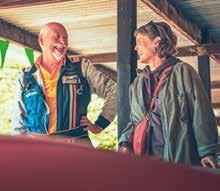


Scan here to Ask Hagerty anything to do with the classic car and bike world.
Scan here to give us your HDC feedback – what you love and what you don’t.









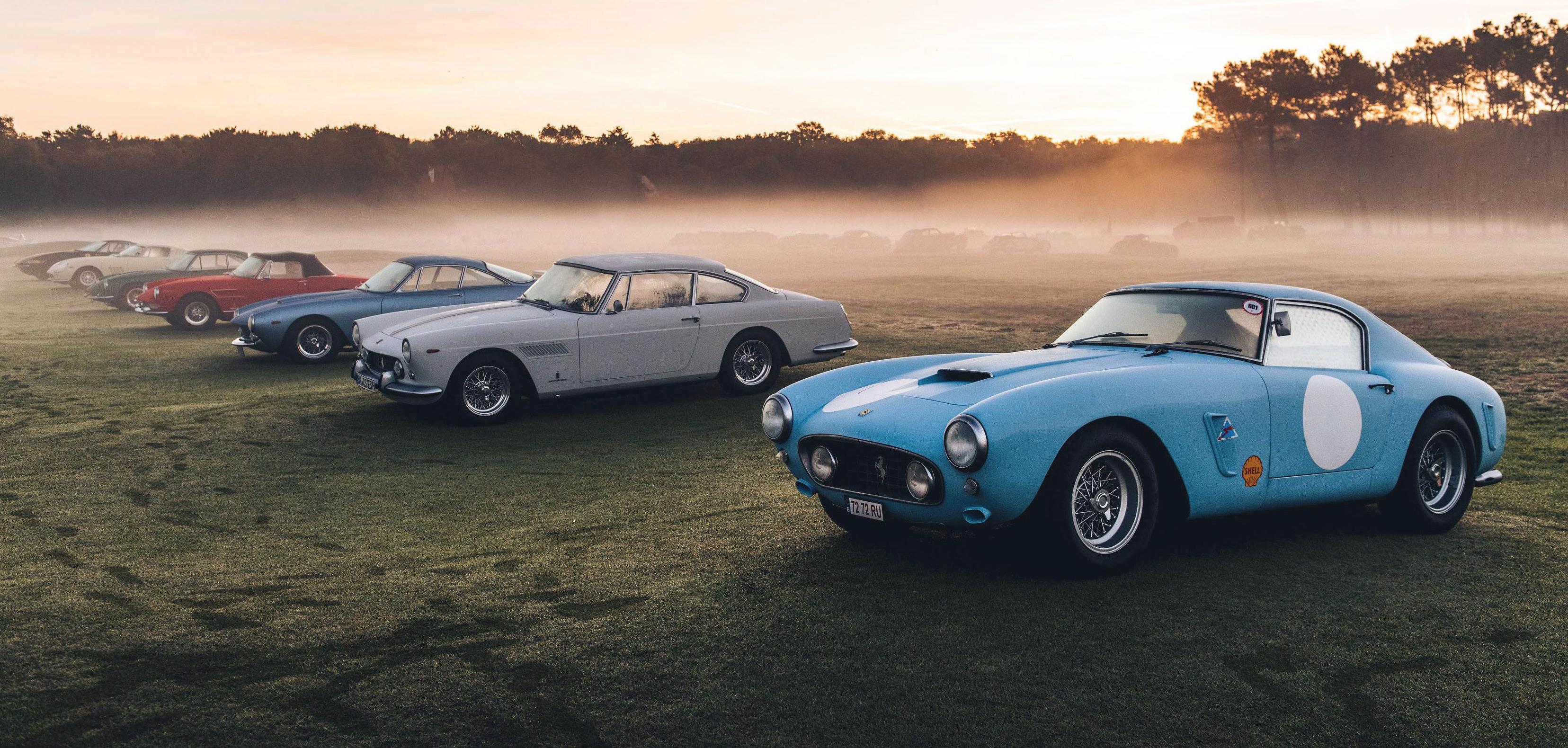















ZOUTE CONCOURS AUCTION


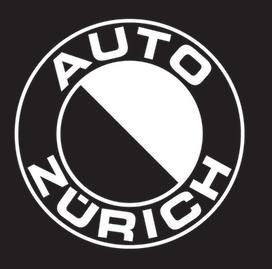
10 OCTOBER 2025 | APPROACH GOLF - KNOKKE-HEIST, BELGIUM
THE Z Ü RICH AUCTION
1 NOVEMBER 2025 | THE DOLDER GRAND - Z Ü RICH, SWITZERLAND


Unlock the full-spec of your membership




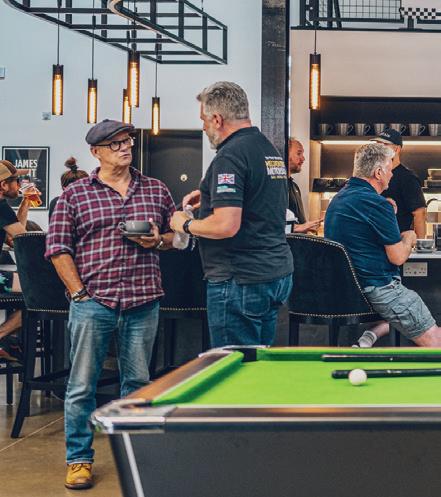



tapped into all the exclusive benefits waiting for you? Activate your portal login today and take advantage of incredible savings, competitions, and community events designed just for you!



to drive home in this classic car.



Enter for your chance Airbnb Motul Carburettor Coffee Dodo Juice


• – 6% off your next stay
• – 15% off premium car care products

• – 15% off your favourite drinks
• Dodo Juice – 15% off car detailing essentials

• – save 10% on food & drink


• Hagerty Shop - 50% off clothing & accessories

The Piston Club Hagerty Shop ...and many more!

As an HDC member, you’re part of a passionate, growing community of car lovers. Here’s how you can get involved:
• Free entry to Hagerty Hangouts - Meet fellow enthusiasts in an intimate setting!*
*Limited to the first 15 sign-ups per event.
• 25% off Hagerty Events - Don’t miss out on the Festival of the Unexceptional, RADwood and other amazing gatherings
• 25% off drinks at the Hagerty Clubhouse
More than just perks connect with the HDC community


Activate your HDC portal login today!











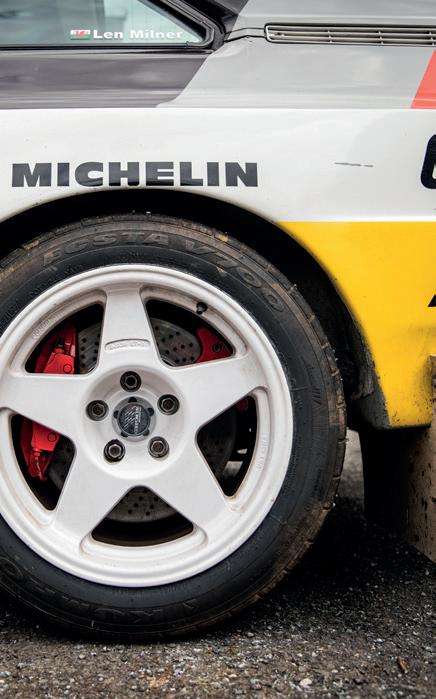

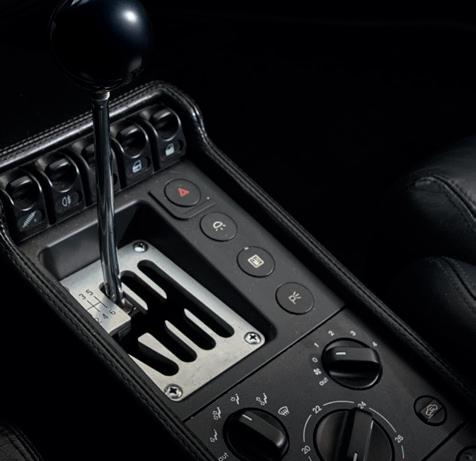

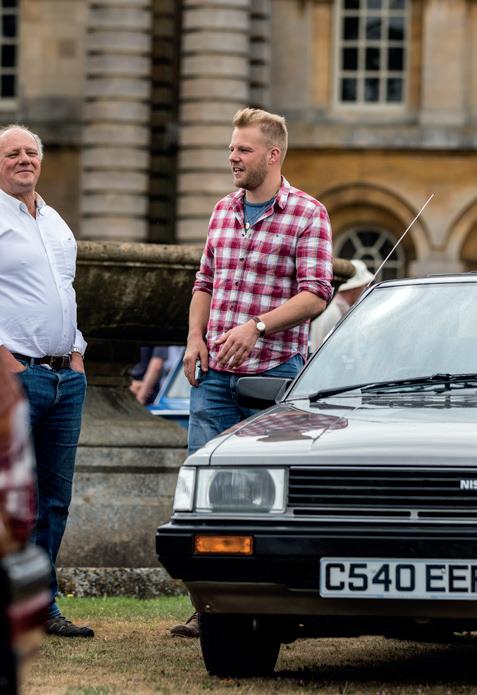
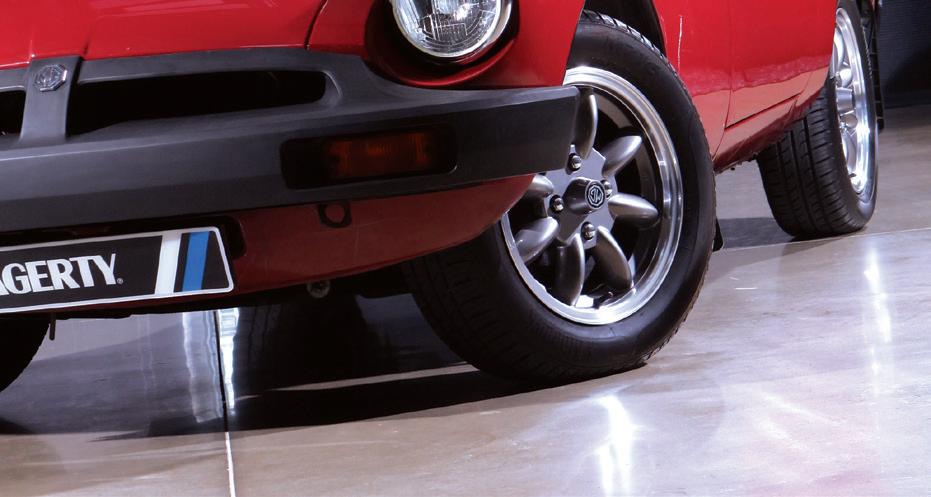
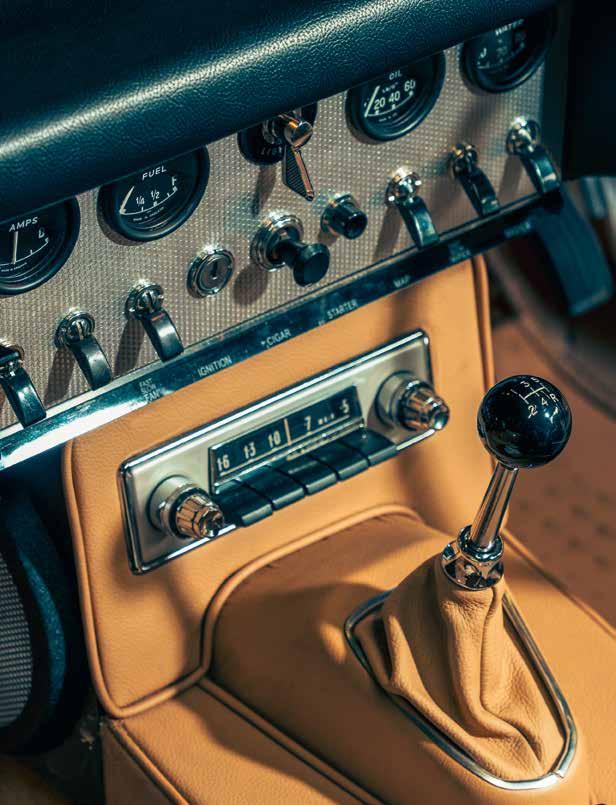
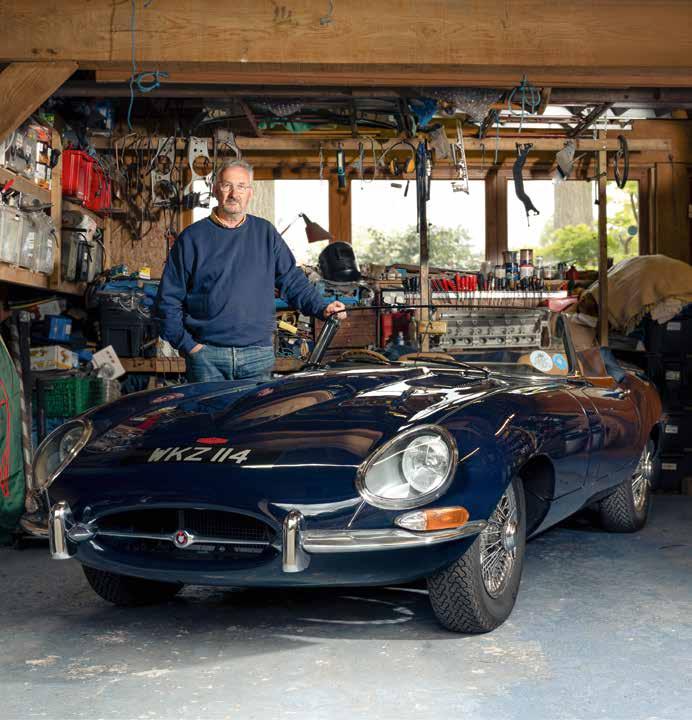
Home-restoring one E-type would be enough for most, but Mark Herbert’s third renovation would start from a more challenging base…
Words Nathan Chadwick
Photography Oliver Brookwell
THE OWNER
“WHEN YOU DESIGN BUILDINGS, you hand it all over to a builder – and it’s difficult to retain control,” muses former hospital architect Mark Herbert. “Something like this? It’s as good as you want to make it – it’s down to you.”
‘This’ is a 1967 Jaguar E-type Roadster that, as you can see from the ‘before’ photographs below, had been subjected to a major accident in the US. Mark says he knows very little about the crash itself, but he does know that the ‘jaws of life’ were used to free the driver. Getting the car back on the road might be a turn-off for most people, yet Mark isn’t ‘most people’ – and his passion for E-types goes back a long way.
He’s had a long love of classics, and had a couple of MGAs in his early 20s. “I rebuilt one of those from a box of bits, so when I was between school and university I worked part-time for an MGA restorer and learned a lot of things – I’ve still got one of those MGAs,” he explains. “When the restorer went on to do E-types, I drove one and it was fantastic. I’d always fancied one, but life got in the way – although we have always had Jaguar saloons.”
He continues: “I retired about five years ago, and decided to get on with restoring cars if I was ever going to do it.” He had begun working on his 1965 FHC prior to retiring, but a couple of heart attacks stopped the project. Once recovered, he soon completed the FHC and moved onto a 1963 Roadster – and after that he started looking for something else. That’s when he found this E-type in the US.
“In 1967, Jaguar was progressively
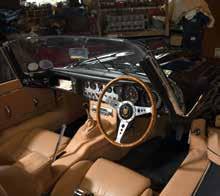
‘I enjoyed taking a crumpled heap and making a pristine shell’
making a lot of changes to suit the American market on the production line to cover new crash regulations that were coming in,” Mark explains. “At the time the British cars hadn’t changed much, so the company quickly updated the models destined for the States first. The British cars followed in the first half of 1968.”
This got him thinking – could he build his perfect E-type? The only stumbling block was that he couldn’t get out to the US to see the prospective car in person, which meant he didn’t end up buying it. “Someone else in the UK did, and imported it – then he decided it was too much work for him,” Mark says. He went to see it and could tell the bulkhead and floor were straight. “On E-types, if you’ve got those things in the right place, everything else is manageable – so after a little haggling, I bought it.”
He spent a year sorting out the body structure. “I had to replace the floors, inner and outer sills, back end and one rear wing – all metal below the bottom of the doors is new,” he says. “Hutson Motor Company produces very good galvanised panels, as well as extra bracing structures. I had everything from Hutson, including the floor panel, which has the mounting structures for the rear suspension. When you have everything in the right place, everything else follows from there.”
Mark built a jig from an industrial cable-wiring system as is usually used in factory ceilings. “I bought a three-metre section of cable tray and used that as a stiff base to form a jig,” he says.
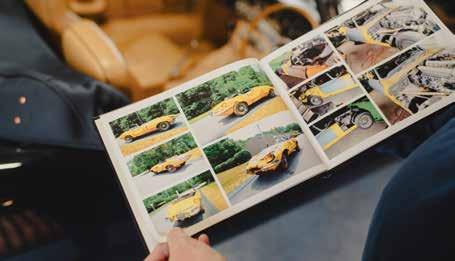
In addition to converting the car from left- to right-hand drive, he subtly upgraded it, too. “There were things that Jaguar was changing at the time, such as better cooling and a revised radiator system, so I have retained that,” he says. “The firm used Stromberg carburettors for the American market, which were poor. They were better in terms of emissions, but they made the
THIS SPREAD A special book Mark put together about the project shows the state the Jaguar was in after a crash in the US.
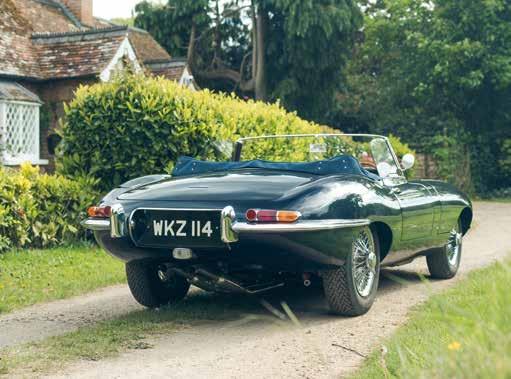
car slower – so I changed the E-type to British-specification triple SU carbs.”
The car had already received a 1966spec engine change in period, which Mark then had rebuilt. “I have had all my engines rebuilt by race engineer Sam Clarke. Rob Beere Racing did the machining work to the block and head. Sam put in larger inlet and exhaust valves, plus various upgrades such as modern seals so that the motor doesn’t pour oil all over the place.”
Mark turned to E-type Spares for a modern five-speed gearbox, as well as a new bonnet because the old one was beyond repair. “I also got some Eagle seats that someone had decided they didn’t like the colour of,” he says. “They’re modern, which make driving more comfortable because I’m tall and it’s difficult to fit in these cars.” Other upgrades included a cable-throttle assembly, an electronic distributor and fuel pump, modern dampers and polyurethane bushes.
Mark has enjoyed the learning process each E-type has brought to him “On the first one I had someone else doing the welding and they just kept putting the price up, so on the second one I decided I’d do it. I bought all the panels, a rotisserie and a spot welder, and I had a MIG,” he says. “I visited Hutsons, which was good at giving advice on panel arrangement; I talked to the bodywork guys, took a brave pill and crashed in. You’ve just got to take it on, I think – no
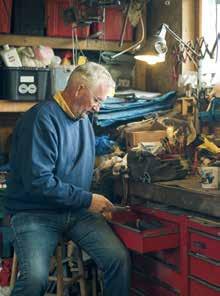
THIS PAGE Mark has many special road trips planned for the E-type, including to the Continent.
‘I talked to the bodywork guys, took a brave pill and crashed in’
half measures. Once you start hacking bits of rusty metal apart, it’s all or nothing.”
The biggest challenge for this E-type was rebuilding the back end. “I hadn’t done it before, but a US firm called Monocoque Metalworks puts videos out about the work it does, and at the time it was repairing a racing car that had been hit up the back end, just like mine was,” Mark says. “There was a video series on rebuilding the rear – so I replaced all the same panels, took the same measurements and balanced it all up in the same way.”
Then came the colour change… “The car was originally Primrose Yellow with a black interior, but I wanted to make it exactly as I wanted it to be,” Mark explains. SSL in St Albans was responsible for the job.
The project took around two years, although it wasn’t all smooth running. “We got the car all together and running nicely –MoT’d, balanced, no shakes or rattles. Then the ’box started pouring out oil,” Mark sighs. “The seals were bad, and to redo those meant taking the engine out. A specialist charges £300, plus our two days’ work getting it out and another two getting it back in again –you have to take the bonnet off, half the interior has to come out… it’s all good fun.”
Nevertheless, the joy he has in the result is palpable: “I enjoyed taking a crumpled heap and making a pristine shell.”
The car is going to be used – and used extensively. Aside from local runs and trips to the Cotswolds, it’s done a stage-by-stage tour around Britain, with jaunts to the Continent planned. “We went away for the weekend and the ignition failed, so I had to hotwire it. I thought, we’ve done 1000 miles and it chooses now to do that…” Mark smiles. “But it was okay. Building knowledge is really satisfying because –touch wood – most things that happen I either know how I’m going to fix it or I know what to do. And all that’s quite good.”
Mark would like to thank the Hutson Motor Company (hutsonmoco.co.uk), E-type Spares, Sam Clarke of Clarke Engineering and Rob Beere Racing (rob-beere-racing.co.uk).


THE SPECIALIST
Talk, talk
Takona is about more than T-shirts and events: it’s a movement to improve mental health through the shared passion for cars
Words Nathan Chadwick
LEWIS WARREN IS A BUSY CHAP. When he’s not creating T-shirts, he’s coordinating a nationwide network of Coffees & Cars events, as well as running a popular podcast. The most important element, however, is the ‘Its ok to tlk’ branding.
Takona’s mission is to change the culture around conversation, making it okay to talk when things get tough – and cars are a key way of making that happen.
“I was working in a sales job in Brighton, and I came to the realisation that every time I stepped into a business meeting, if we got onto the subject of cars it would change the whole dynamic of the meeting,”
Lewis recalls, looking back to the origins of the project. “We’d go from strangers talking about logistics to mates chatting about cars – we’d sort the logistics stuff later.”
Prior to his sales job, Lewis had worked
Photography Takona

in secure psychiatric healthcare, and his realisation chimed with his experiences there. “I’d found that if you can get someone to talk, you can make such a big difference compared to just medication, restraints and isolating people,” he says. “The two ideas came together organically; if I could get cars into a conversation with a stranger, and it was a common subject, then it would turn that relationship into a friendship.”
This all led Lewis to reflect on his journey to that point in his life, and his relationship with cars. “I realised that every time I felt like absolute crap, I’d go for a drive or tinker on my car, or if I needed to escape a relatively turbulent home life as a teenager, I’d go to my car. That was always my escape,” he says. “I thought, if that works for me, then it works for other people – and if we can use the connecting power of cars, the brand does all the heavy lifting of saying it’s okay to talk.”
Lewis believes the current crisis in male mental health, and the difficulty in talking about it, can trace its origins back to the post-war era. “The war came along, men stepped up, defended their country and became the leader of their tribe. When they came back, having seen atrocities, there was this air of ‘you need to knuckle down, we’ve done the difficult thing, we need to move forward’,” he muses. “Over time that has led to the presumption that the man is the
‘Every time I felt like crap, I’d go for a drive. That was always my escape’
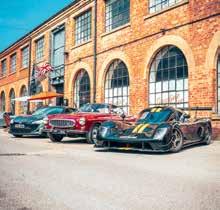
THIS SPREAD
Petrolhead Lewis Warren is putting male mental health on the map with Takona. His particular passion is his Toyota GT-86 – but the movement embraces fans of any kind of car.

leader, he has all the responsibility – and it has bred this mindset that it’s weak to have emotions, feel vulnerable or be sensitive.”
He sees a shift in attitude among younger generations, however. “I’m 31, and younger people are more attuned to this stuff than I am – and I do this for a living,” he chuckles. “It’s now okay to be connected to your emotions, to feel things, to not be the head of the household and all that ingrained mindset we’ve inherited. The reality is that the man isn’t the sole head of the household, because you can’t afford it these days.”
However, there are still issues that prove crippling: suicide is the leading cause of death for men under 50. “There’s a lot of pressure on a person to be a ‘strong character’ and carry everything, and not really complain,” Lewis says. “We need to be better at going, no, this is difficult and my friends are in similar positions, and it’s okay for us to acknowledge the difficult parts. By acknowledging it early, we will make it an easier burden to bear, even if the burden doesn’t change as much.”
Lewis sees cars as an outlet for those left behind by the academic focus of modern education. “Seemingly, if you’ve not got a degree you are assumed to just not be very clever – I don’t think that’s the case at all,” he says. “The ability to work with your hands is a very intelligent thing, especially when it comes to things such as engineering,

where not only are you able to make ‘the thing’, but you have to understand how it will bend and break. Looking down on people who didn’t do further education, or didn’t get on with education at all, is very damaging. You can have someone whose brain works incredibly well – just not very well in the strict format of education.”
This has caused a crisis in the way male self-worth is defined. “An apprentice could become an engineer, and then they had the capacity to be a leader of industry without having to go through getting degrees. They could work their way into these positions of influence based on their ability,” he says.
This translates to the automotive world. “Even from a hobby perspective, never mind a career, having a thing that you can engage with without having to know how to formulate a spreadsheet is an incredibly valuable asset and skill; a great outlet for those who aren’t necessarily academic.
“Not everybody likes to read books; people like to tinker with cars. But you’ll also find that people who love more academic pastimes will be in awe of people who can strip an engine with their eyes closed because that’s how their minds work. Then you’ll have a creative designer who might be amazing at making something beautiful but not tuned into the engineering side, and you will have the opposite where someone who’s really good at mechanical engineering will absolutely thrive, and neither of them
‘It’s about giving people enough of a nudge to start making little differences’
THIS PAGE Takona’s distinctive T-shirt designs get a clear message across – and they also act as a guide to finding others on the same wavelength at a car meet, leading to new friendships.
have an academic background.”
Lewis sees Takona as a way to bring all these approaches to the hobby together. His T-shirt designs act as a guide to finding others on the same wavelength at a car meet – and it’s had an effect. “I’ve had people say they’ve made friends at Coffees & Cars, and now they meet up at the pub or go go-karting or on road trips. Then there are people who’ve said they were feeling like crap, but still popped to one of our events and it made their day better. Some have said Takona has prompted them to call a mate they hadn’t spoken to for a while. I’m not a therapist, but it is about giving people just enough of a nudge to start making little differences.”
Just striking up a conversation can be a challenge: “It can be daunting to leave the house and put yourself out there – it takes a lot of energy to get past that. People don’t give themselves enough of a pat on the back when they do it. These feelings are normal, and lots of people have the same struggles – we’re just not talking about it.”
Lewis will continue developing the brand, and there are a host of events taking place across the UK, every second Sunday of the month throughout the summer. “I’m not trying to be a millionaire – I just want to do the thing I enjoy and survive on it. If I can give my 100 percent attention to it, then I can make more of a difference.”
Find out more at www.takona.co.uk.

LEWIS’S GARAGE
Lewis currently has a Toyota GT-86 that’s a common sight at most Takona events as well as the odd track day here and there, but he also has a deep fondness for his Renault 5 1.1-litre five-door. “It was the cheapest classic with an MoT in the UK when I bought it,” he says. “A couple of years ago it just died on me, and a friend took it away, skimmed the cylinder head and did the head gasket, but now it’s gone again. It’s just the joys of an old French car that’s done 90,000 miles, I suppose. But it feeds into my enjoyment of tinkering with stuff – so I’ll strip it down again.”


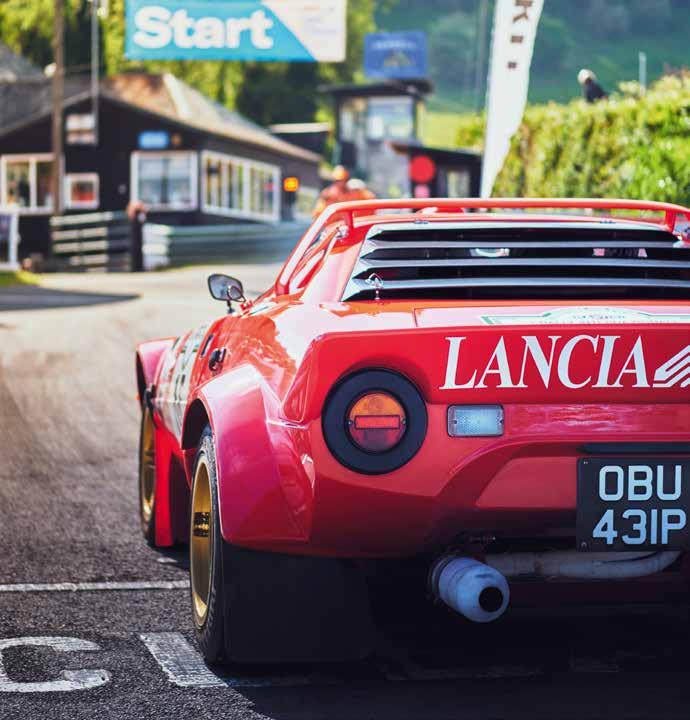
THE EVENT
The opportunity to charge up the historic track at Shelsley Walsh is a ‘mustn’t miss’ on the HDC calendar. Here are the highlights from the 2025 event
Hagerty Hill Climb
Words Elliott Hughes
Photography Matthew Pitts
FROM A PRE-WAR CITROËN TRACTION
Avant to Group B homologation specials and modern Porsche 911s, the latest Hagerty Hill Climb, held back in May, was a vivid showcase of the UK’s varied and enduring passion for cars.
The event took place at Shelsley Walsh in Worcestershire, the world’s oldest motor sport venue still in operation, having hosted its first competitive event back in 1905. Nestled in the Malvern Hills – just a short drive from the similarly historic Morgan marque – this 914-metre strip of Tarmac has welcomed motoring pioneers, legendary drivers and passionate enthusiasts for over a century.
In 2025 – which marks the venue’s 120th anniversary – more than 100 vehicles were once again seen carving through the twists and turns of Shelsley Walsh for the renowned Hagerty Hill Climb. Hagerty’s organisers kindly invited me to take part in the ‘run what you brung’ event, which I gladly accepted. Driving the near-kilometre course felt evocative; I would, after all, be retracing the wheeltracks of legendary drivers including Sir Stirling Moss, Hans Stuck and Jean Bugatti. The fact that Shelsley Walsh is older than hallowed circuits such as Indianapolis, Silverstone or Monza only makes it feel more special.
Attempting the Hill Climb in my daily driver, a 2013 Audi TT TDI, certainly made me think twice about attempting to re-enact the heroics of Moss et al with too much gusto. Historic venues are renowned for being unforgiving, and Shelsley Walsh is no
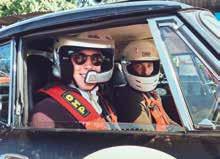

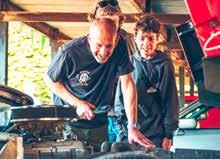
‘It is a vivid showcase of the
UK’s enduring passion for cars’
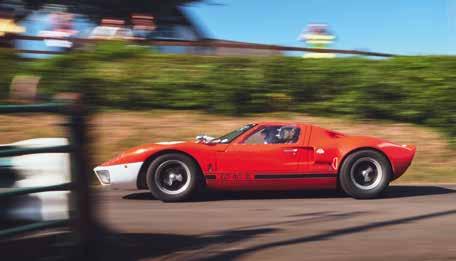
exception. Much of the course is lined with punishing grass banks and barriers, which make the already-narrow ribbon of road feel even tighter from behind the wheel than it appears from the safety of the grandstand. Then the light turned green. I dumped the clutch. Snatched second. Then third. A flurry of turns came at me in quick succession. I briefly snicked into fourth. Hard on the brakes for the penultimate left-hander. I fed the car across the track to open up the final right-hand bend, edging as close to the exit barrier as I dared. Then I pinned it to the line. My diesel-powered daily clocked a best time of 40.80 seconds before I decided to call it a day.
The Hagerty Hill Climb’s relaxed format gave me ample time to explore the bevy of cars gathered in the paddock, as well as the equally impressive display in the nearby field. Highlights included a pair of thunderous Ford GT40 replicas, a Lotus Elise powered by a 280bhp supercharged Honda K20 engine, a De Tomaso Pantera, a Ferrari F355 and a smorgasbord of rally icons – among them a Renault 5 Maxi Turbo, Lancia Stratos and Lancia Delta Integrale.
Equally striking was the diversity of those in attendance. It was heartening to see just as many young drivers in hot hatches and modern classics as seasoned enthusiasts in traditional sports cars and replicas. People of all ages bustled between Race Control and the paddock, checking their times and chatting, while others enjoyed the food and live music. The atmosphere was fantastic.
The Hagerty Hill Climb is a great example of the sort of grassroots motor sport that needs to be encouraged, when even karting is now so very expensive and inaccessible to so many. We hope cars continue to charge up Shelsley Walsh for another 120 years –and we hope to see you there in a year’s time. 2026 Hagerty Hill Climb dates will be revealed soon: keep an eye out at www.hagerty.co.uk.
THIS SPREAD From Lancias to GT40 replicas to British sports cars from MG and Lotus, the Hagerty Hill Climb is the perfect place for all kinds of cars to get track time.
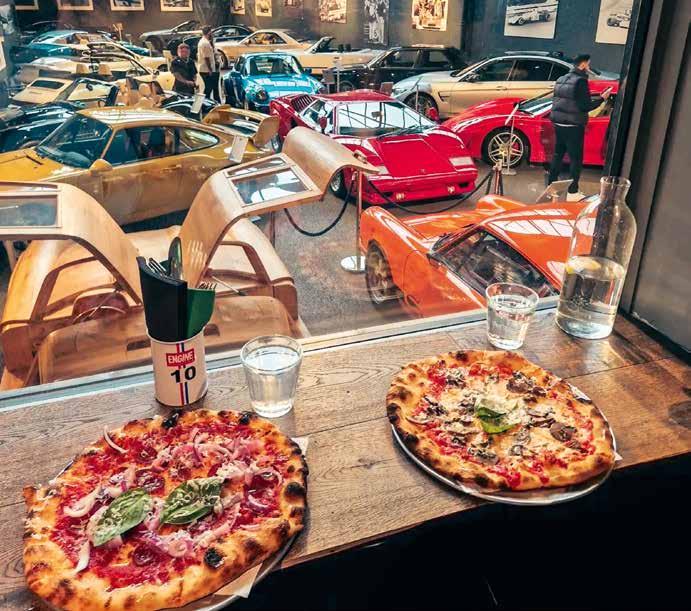
MAKING SOURDOUGH IS A CAREFUL and time-consuming process – honing it takes time, dedication and a fine eye for the details. So it seems only fitting that pizza restaurant 67Sourdough operates from one of London’s oldest and most respected car dealerships, Hexagon.
67Sourdough, London
Everyone loves pizza. Combine this with beautiful cars at one of London’s oldest dealers, and it makes for a mouthwatering destination. We got a slice of the action
Paul Michaels founded the firm more than 60 years ago, and in that time it’s been an official dealer for Porsche, BMW, Aston Martin, Alfa Romeo and Lotus, before moving into high-end classics. Hexagon even entered Formula 1, with John Watson taking fourth place at the 1974 Austrian GP. Nowadays Hexagon, located a short stroll away from the East Finchley tube station and just off the A1, is part-dealership, partmuseum and, now, part-pizza emporium run by Paul’s son-in-law, Cam Mitchell.
“I call it an accidental restaurant,” laughs
Words Nathan Chadwick
Cam. “It started as a pop-up to entice people into the showroom, but then it got a lot of traction on social media partly because of the pizza, but mostly because of the cars.”
The prospect is unique – you really do get to eat surrounded by some of the most exquisite cars ever. In one section there’s a one-of-37 Aston Vantage Zagato Volante; in another there’s a 150-mile Lamborghini Countach 25th Anniversary. There’s also a mint BMW M3 Sport Evolution and a plethora of Porsches, from stock originals to wild creations from Rinspeed and Gemballa.
Cam says: “The more people who came, the less I was able to handle it as a pop-up, so I had to move into the actual restaurant.”
Paul and his late wife had long wanted to develop Hexagon into more than a classic dealership, and set about incorporating a Mediterranean-themed restaurant. Mrs Michaels passed away before it could open, and then Covid hit, leaving the kitchens empty for a year. Now 67Sourdough has taken up the mantle, although Cam admits it’s been a steep learning curve.
“The idea was to make the showroom a bit more accessible to all, because these can be intimidating places – sometimes people feel like if they’re not looking to spend £100k on a car, they’re not very welcome. That’s not what Paul is about – he is very up on trying to find ways to bring in more people.”
What began as a small dining area by the cars soon started taking over the dealership

floor itself, with several vehicles returning to storage at Hexagon’s old Fortis Green premises, allowing diners to be surrounded by the classics. “Everybody loves pizza, and it’s much more family friendly,” Cam says.
There is plenty of space out front for events, and the business is looking to expand the offering to more car clubs and bikes, too. “We’ve had Porsche, BMW and Audi TT nights,” Cam explains. “We have on-site parking for 30-40 cars, and plenty of free parking on the street. The showroom doors open fully so there’s a wonderful flow from the forecourt into the space, and people can sit down for a pizza or a drink.”
Looking to the future, he’s keen to expand the cars and food theme into Hexagon’s central courtyard, this time bringing a taste of home. “Being Australian, it is my favourite area – any outdoor space where I can potentially put a barbecue, I like,” he laughs. “You can expect to see a burger pop-up in there over the next six months.”
‘The prospect is unique – you eat surrounded by some of the most exquisite cars’

For now, the focus is on the pizza – Cam describes the style as that of London/New York crispiness. “But my whole thing is sourdough – it takes three days from making the dough to it ending up on a plate,” he says.
Behind the scenes, Paul’s eye for detail also plays a part “He’s not hands-on, but he’s always there watching,” Cam smiles. “He occasionally has a go at me if he sees a pizza he doesn’t think is completely round.”
More details at www.67sourdough.com.

THIS SPREAD Hexagon’s stunning selection of classic cars provides the perfect backdrop for dining on 67Sourdough’s delectable pizzas.


PAUL COWLAND
Rooting for the anti-hero
Why Cowland enjoys getting the bland back together…
PICTURE THE SCENE… IT’S A PERFECT summer’s morning, the birds are singing, the sun is searing down onto an empty Lincolnshire lane. Your F430 is in fine song, its waxed flanks glint playfully in your mirrors as you nail another apex and snick another gated gear. Life is good, and to make it better you’re on your way to a car show – in what amounts to automotive royalty.
As you get there, you notice something different. Something that’s never happened before. In a car that’s guaranteed to snap necks from 50 yards, nobody is giving the flawless Ferrari a second glance. Yet the admittedly tidy but utterly basic late-1980s Escort Popular in front of you seems to be drawing gasps of admiration from the crowd. Can they not see what’s behind it?
The effrontery and ignominy aren’t over yet, though. You’re greeted warmly by the gate staff, and as your eye wanders over to the bustling showfield you wonder where they will place you. As a member of the supercar elite, you’re used to being waved through to the pick of parking spots.
But not today…
Instead, the utterly charming, yet clearly confused marshal asks if you would park in the guest car park. Next to a Transit. And the loos. Something has clearly gone wrong…
This may sound like a show-going nightmare for many owners of delectable machinery, and yet, dear reader, this actual scene unfolded before my eyes a few years ago at Grimsthorpe Castle, during Hagerty’s Festival of the Unexceptional (FOTU). And

while I may have changed the car to protect the innocent guest, his bewilderment was all too real. In a real-life Stranger Things moment, literally EVERYTHING he had learned about car show hierarchy was suddenly inverted to create an Upside Down existence that was totally alien. For here, a mint 309 eclipses a tidy 308 on every level.
FOTU is indeed a show unlike any other. Overtly celebrating the mundane motors that have been part of all of our lives, it makes heroes of the cars that usually do have to park by the toilets at other events. While your base-model Metro may not pass muster at most concours, here, a oneowner, low-mileage, original-paint example can command the kind of excitement, and draw the kind of crowd, usually reserved only for the concours unveiling of the latest Pagani. Instead of titanium, carbonfibre and telephone-number horsepower figures, here we celebrate wheel trims, unpainted bumpers and whatever it was that the designers of ’90s seat fabrics were smoking at the time. And I couldn’t love it any more.
For me, FOTU scores on many levels. These are cars that mean so much to all of us. I didn’t go to school in a Countach, so while I can admire one greatly, it doesn’t resonate
‘As a walk down a highly relatable memory lane, Festival of the Unexceptional is unbeatable’
with me on any level. Yet, show me a tidy Cortina L Mk3, and I’m instantly whisked back to family holidays and the searing pain that only a sun-baked vinyl seat can inflict on a shorts-wearing child. Pure nostalgia. So for old guys such as me, FOTU is an evocative walk through the car parks and driveways of our lives, which feels truly wonderful – yet for the next generation of enthusiast, it’s just as much fun. You see, for under a grand, it’s still very possible for today’s disaffected youth to buy, fettle and prep a car that not only makes them look good, but also gets a hugely positive peer response from everyone they show it to.
And that’s a powerful way to bring fresh blood into our hobby. The beauty of FOTU cars is that the barrier to entry is wonderfully low. The near-mint Fiesta LX I took last year, to universal admiration from my fellow guests, cost me the grand sum of £650.
As a walk down a highly relatable memory lane, FOTU is unbeatable. You’ll lose tally of the ‘my dad had one of those’ moments you’ll encounter, the owners are invariably charming and unassuming, and as the entire shtick of the Unexceptional movement is based on the inverted snobbery of the worst being the best, it really does bring out the fine qualities of our British love for an underdog. I hope I’ll see you there. Now, if you will excuse me, I’ve got some wheel trims to polish. Restorer, writer and co-star of TV’s Turbo Pickers and Salvage Hunters: Classic Cars, Paul Cowland is also a Hagerty ambassador.
ABOVE FOTU celebrates the mundane motors that have been part of all of our lives.
















Car Rally | 1 - 5 September 2025
Embark on a five-day rally adventure through Scotland’s stunning Highlands and iconic whisky regions. Starting at Gleneagles, enjoy thrilling drives, distillery visits ( no less than 12 visits), and whisky tastings, with routes through the Cairngorms, Speyside, and Loch Ness. Highlights include rugged coastal landscapes, a ferry to the Isle of Mull , and a grand finale back at Gleneagles with a piper welcome and Gala Dinner. Celebrate camaraderie, breathtaking scenery, and Scotland’s malt heritage, finishing with a Malt-themed award to commemorate your journey.
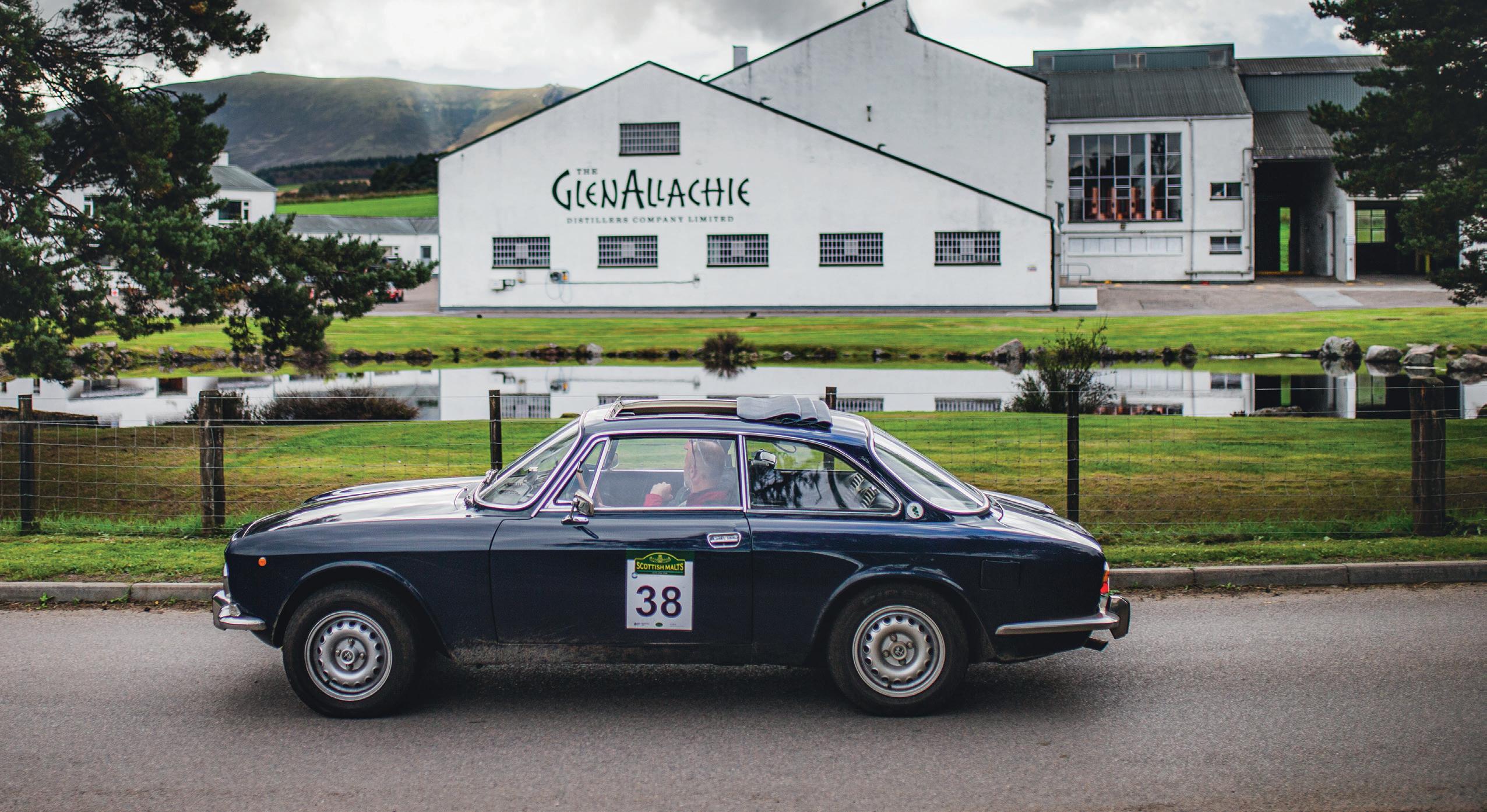
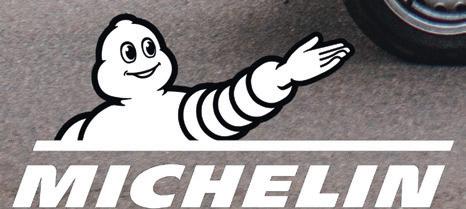








CHARLOTTE VOWDEN
The romance of speed at Le Mans
Derek Bell relates tales of his 24 Hours adventures
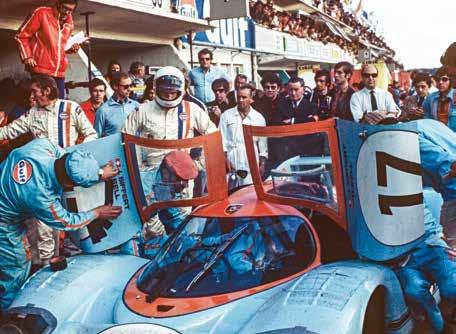
DEREK BELL’S WINDOW CLEANER arrives during our conversation. The legendary motor sport star’s extraordinary life is also very ordinary, it would seem. He on one side of the Atlantic, and I on the other, we are blind to each other’s facial expressions. We are merely voices at the end of the phone. Seated in his study, Derek talks with ease and articulation. I am in no doubt as to the depth of feeling behind his words.
It is early morning in America, and afternoon here in the UK, but Derek wants me to join him in the middle of the night, at the Le Mans 24 Hours. “Look out through the windscreen and you can see the stars,” he says. The year is 1971, and we are travelling at more than 200mph on the Mulsanne Straight. “You feel safe, you feel very safe. You feel part of the car, it’s an extension of you, you are part of that chassis, you are part of the steering wheel.” The scenario, the setting, the connection... it all feels quite romantic, I suggest. “That’s right – it is,” Derek agrees.
“The world around you is flying by,” our track hero continues. “But in that little cocoon, in that incredible machine, everything is still, except for the revcounter. You watch it moving up 100rpm, and moving down 100rpm, and then moving up 100rpm once again. You don’t think too deeply about the wonderful engineers who built the car – you just sit with the sound of the engine and
listen out for any minute change of note.”
The flashback doesn’t belong to me, of course, but Derek makes it feel like it does. His revisiting of the 24 Hours is cinematic, and the sensitivity to detail stirs something in the very depths of my soul. “I was lucky that every time I went down there I got to the end of the straight to put the brakes on,” he confides. It was on that same stretch – before they put in the chicanes – where Derek achieved his highest-ever speed at Le Mans, that same year. “You look back and think, that was bloody stupid,” he says of doing 246mph at the helm of his Porsche 917 LH. “You did it because the car was good enough to do it; you did it because you wanted to win Le Mans.”
It was only after the fact that Derek discovered how close to the limit he had been. “I was pulling 8100rpm, and the engineer said: ‘Oh good – at 8200rpm the engine blows up.’” Between 1975 and ’87 Derek secured five victories at Le Mans. This year marks 50 since the first. “I do have quite a history there,” he reflects.
Today, he tells me, the climate in the southeasternmost state in America is “rather pleasant”, but we don’t linger in
‘Derek’s revisiting of the 24 Hours is cinematic, and the sensitivity to detail stirs something in my soul’
the present for long. Called back to the past by the ghosts of men made immortal in fatal crashes, he says accidents were frequent – and sadly par for the course. Speaking of friends long lost to the sport, he pitches between melancholy and matter of fact. “We all knew the risks. Nobody made us get in those cars – we all wanted the results.”
A gracious, grateful survivor of an era in motor racing that was haunted by premature and perhaps avoidable deaths, Derek doesn’t shy away from the truth. “The Porsche 917 was an absolute animal of a car; there were drivers who refused to drive it simply because it was so dangerous.” To accept the seat, he says, there had to be trust. “You had to have confidence in your mechanics, in your engineers, in your team-mates. I had so much respect for those guys.”
Le Mans is a place I have yet to visit, but thanks to my conversation with Derek I feel as though I already have. If only in spirit – and that is better than not at all.
“I could bore you to tears,” he says apologetically, but signing off from our call feels like a cliff-hanger, so we part on a promise to talk again. Next time you see the stars through your windscreen, I implore you to daydream of dear DB; dashing along the Mulsanne Straight during a moonlit night at Le Mans. Follow automotive writer, presenter and adventurer Charlotte’s #adventureswithfrisky on Instagram @charlottevowden.
ABOVE 1971 Le Mans 24 Hours: Derek Bell with team-mate Jo Siffert and their Porsche 917 LH.





Pondering automotive yin and yang
Why crazy and calm can be complementary forces
PONDERING THE PERMUTATIONS OF the ideal two-car garage is not a new occurrence for me; it has probably been part of my daily daydreaming drill for the past 30 years or so. But recently a new scenario has cropped up.
It all began with a day in Cumbria at a test track in the grounds of Dovenby Hall, which is home to M-Sport. I was driving the wonderful AMR 68 Edition from Boreham Motorworks, which is a weldperfect recreation of the famous Alan Mann Racing Ford Escort Mk1 from, you guessed it, 1968. Resplendent in red and gold paint, with dinky 13-inch wheels and pert bubble arches, the Ford looks sensational and drives even better. Boreham is going to build 25 – and then, hopefully, the owners will race them.
The original was an interesting car, because despite being the first competition Escort, it was also arguably the most sophisticated. None of the renowned rally cars that would rip up the stages in the ’70s had suspension that was as wildly innovative as this model’s, which took inspiration and learning from the GT40s that AMR had been working on in the years prior.
That it was unlike any other Escort is apparent as soon as you get in its AMR 68 facsimile, because the seating position is more sports than saloon car, thanks to a steering rack that was moved two inches forwards and adjusted in rake. Yet for all the changes, this machine thankfully still has the magical balance of those first two
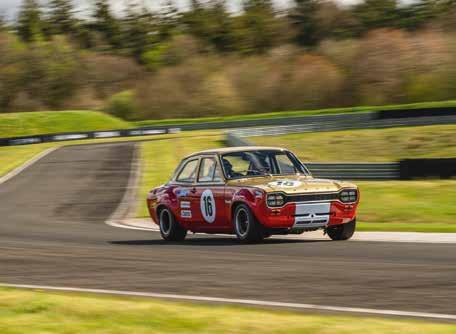
ABOVE Boreham’s AMR 68 Edition is gloriously and unashamedly fun. What bliss! says Henry.
generations of Escort. As far as I know, there isn’t a car in existence that is happier to be steered from the rear. The AMR 68 is a little more tenacious than some others, but tipping it into the test track’s uphill, secondgear hairpin you instantly feel the back start to swing. By picking up the throttle you can simply slide round in the most gloriously sustained arc, finishing with a flourish as the camber falls away on the exit.
Bliss! But an undeniably loud, hot and physical type of bliss. I spent most of my day in the Escort driving it for the film that is on Hagerty’s YouTube channel, so it was akin to being at a track day. And by the end, as I knocked off the ignition for the final time, I wasn’t totally exhausted but I was certainly feeling it. My ears were ringing with the glorious sound of the scarcely silenced 1.8-litre twin-cam that had been reverberating around inside the bare shell, and my arms were full of the fatigue of unassisted steering.
As a result, I don’t think I’ve ever enjoyed getting into an EV as much as I did the Porsche Taycan that was my transport home. Faced with a 270-mile schlep (I had a fully charged range of over 300 miles –but a top-up for food and therefore kWh at
‘Two-car garage with a decent EV might be compelling, as long as the other car was raucous and analogue’
Tebay Services was always on the cards anyway), there was something lovely about the serene silence and smoothness of the journey. A calm after the cacophony.
I’m not about to advocate for all EVs here. They still have to be well damped and steer well, and to that extent I’d recommend the Taycan but not the Macan, and the Polestar 3 but not the 4. But it got me thinking that a two-car garage with a decent EV as one half might be quite compelling, as long as the other set of wheels was really raucous and analogue.
I’m a fan of complimentary contrast in life in general. It’s part of what makes this job so enjoyable. I am either very much on the move or fairly sedentary at my desk. I get the familiarity of home or the fascination of somewhere foreign. There is the physicality of driving and then the mental stress (and sometimes joy) of writing.
Owning an EV would, to my mind, be much more enjoyable if you knew that you had a classic, restomod or race car at your disposal to bring the noise. In fact, I think one would enhance the other and vice versa. A Taycan and a 911 2.0L Cup. A Renault 5 E-Tech and a Metro 6R4. A Polestar 2 and a Caterham 7. The automotive embodiments of yin and yang. Perhaps you could even do something a bit taijitu with the garage doors – one white with a black handle, one black with a white handle... Journalist and Hagerty YouTuber Henry began his road-testing career on Evo and has competed in the British Rally Championship.
HENRY CATCHPOLE
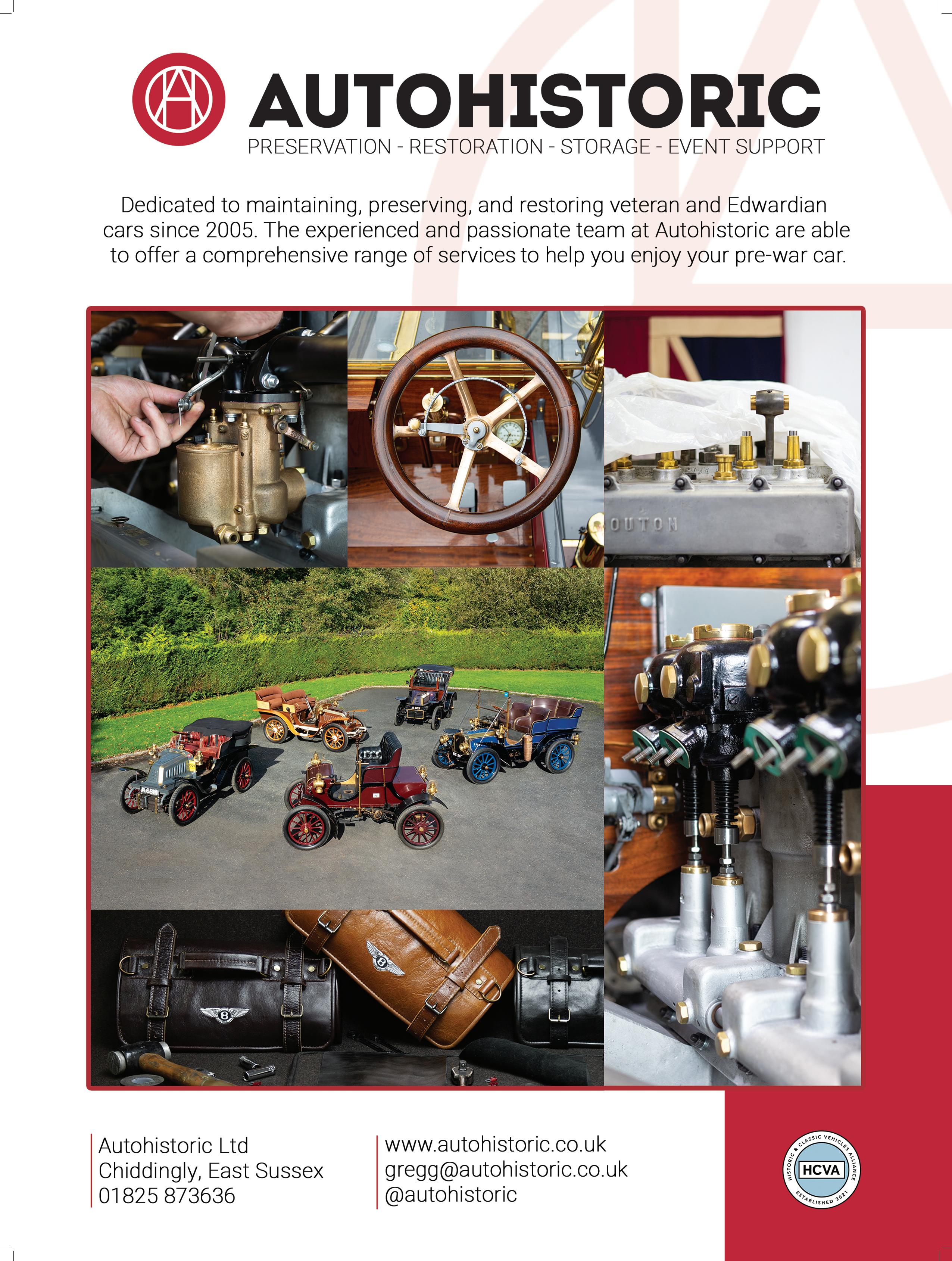
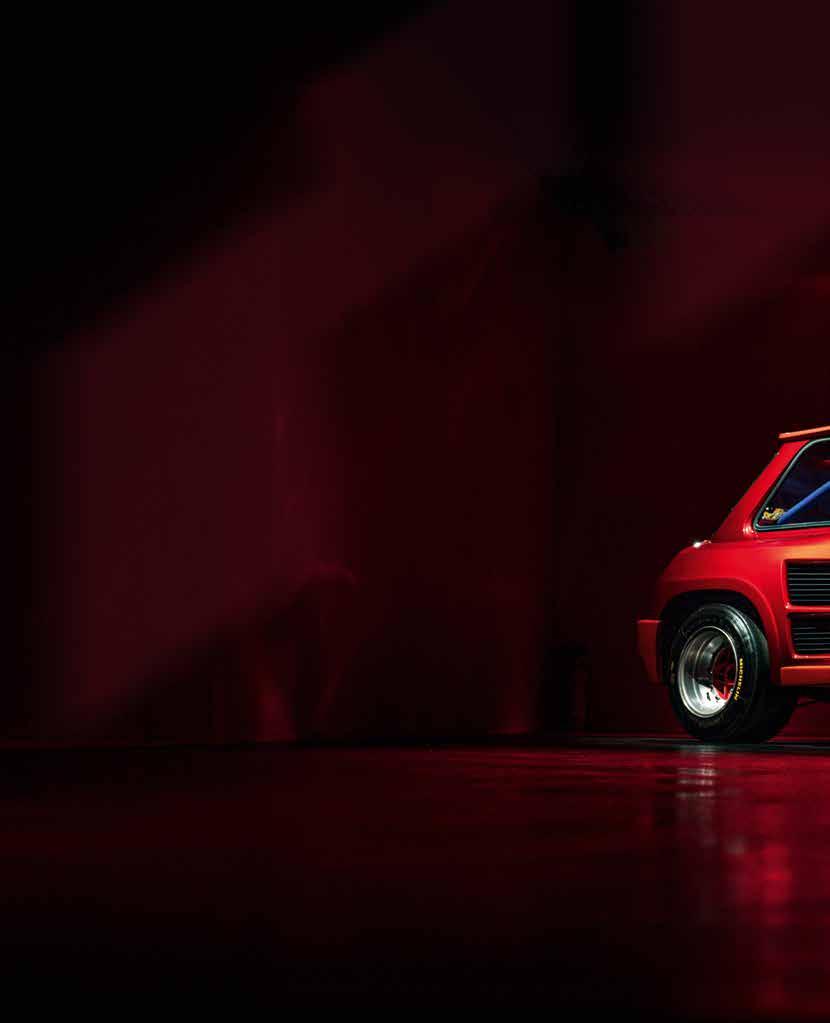
THELIFE OFPSI

TheRenault5Turbobeganasafree-flowingideaofthe mid-1970s–butendedupgiant-killingmuchgrippierandmorepowerfulGroupBrallying behemoths.Alongtheway,itbecameatrueiconoftheroad
WordsNathanChadwick Photography Renault/MalcolmGriffiths
HAGERTY
IIF EVER A BUZZWORD SUMMED UP the 1980s, then it has to be the word ‘Turbo’. True, the technology had been around for decades, and BMW and Porsche had brought forced induction to the fore in the 1970s, but it was during the ’80s that those five little letters became marketing magic.
As such, the Renault 5 Turbo 1 before me has all of the 1980s elements writ large: a turbocharged four-cylinder engine; the kind of mean, broad-shouldered box ’arches that could swallow competition-focused wider wheels and track; and the defining bodystyle of the era – the hatchback. It could only be more 1980s if it had the members of Duran Duran spreadeagled across it.
The roots of the project came in the mid1970s, just as Renault was building a head of steam in the competition world. The efforts of Jean Rédélé’s Alpine at Le Mans had led to Renault absorbing the firm, and although
late-1960s efforts at La Sarthe ultimately fell short, the basis of that car provided the platform for the A110’s World Rally Championship successes in 1971 and 1973.
By now, Renault’s upper management viewed motor sport as more than merely a marketing strategy – the state-owned company saw competition on track and stage as an advert for France itself. With backing from petrochemical firm Elf – also state-backed – it set up single-seater racing junior formulae as a gilded path to get French drivers into Formula 1 – and pretty successful it was too (eventually).
The short-term plan had been to score a victory at Le Mans, and 1975 saw Renault take over Alpine’s enduranceracing programme. While it would take until 1978 for the twin-turbocharged A442 to duly deliver after several disappointing years, forced induction was a key part of
HAGERTY DRIVERS CLUB

‘Sheer fizz-bang power delivery still makes every drive memorable’
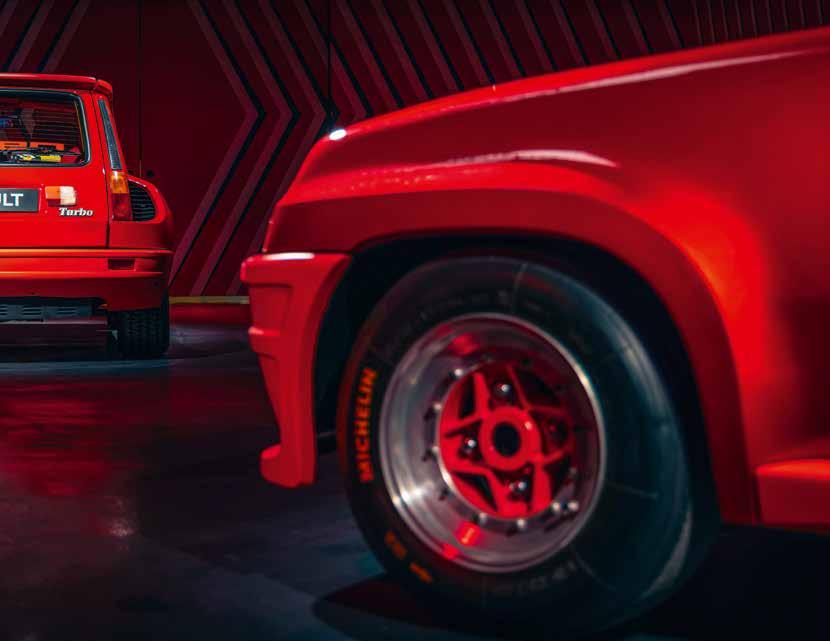
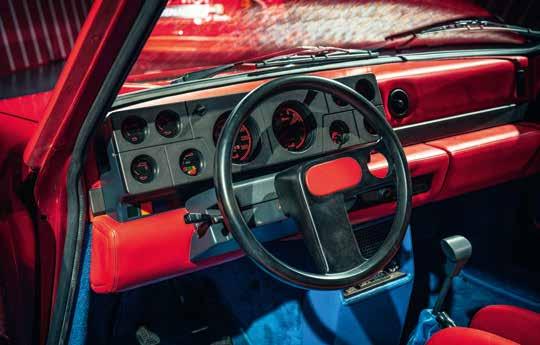
THIS SPREAD Renault brought together the 1980 motor show car and an early production Turbo. Differences are the show car’s wheels (above) and its metallic paint.
HAGERTY
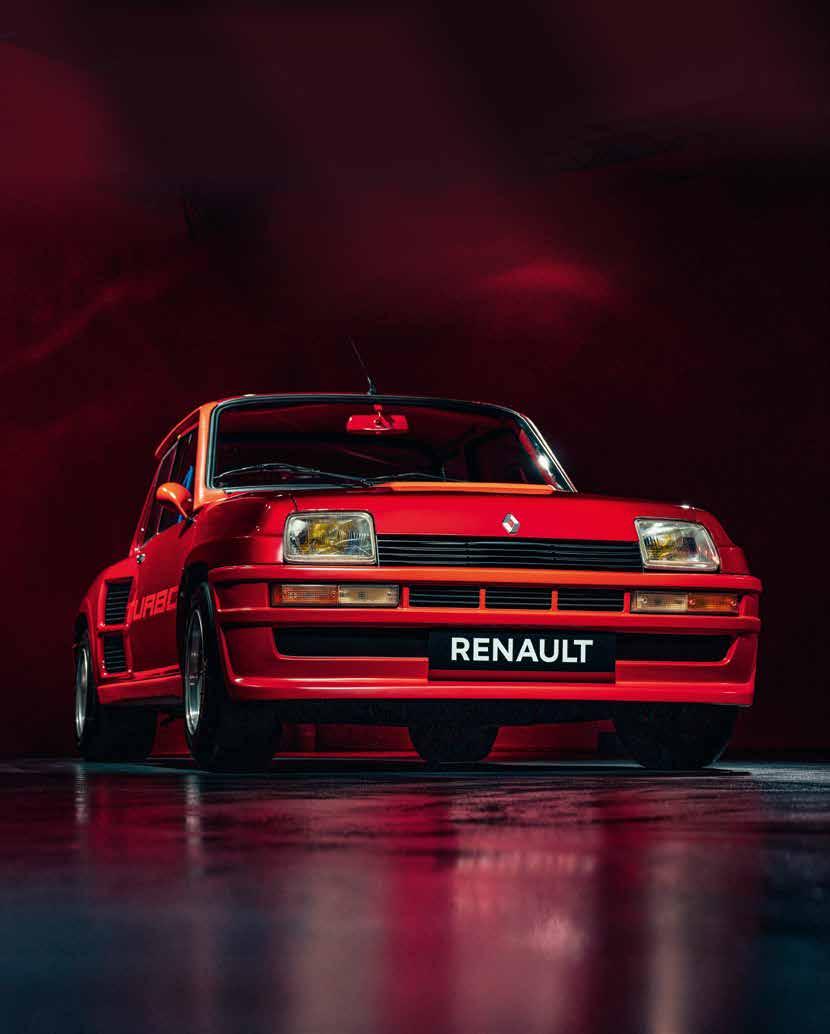
the plan, and it would underpin Renault’s F1 success in the 1980s. Rather than a big, naturally aspirated engine and all the fuel consumption that would entail, turbocharging offered plenty of ‘go’ with a small capacity and fewer cylinders and, in theory, sipped petrol. In the light of the 1973 fuel crisis, this was a major step.
All this must have been swirling around Jean Terramorsi’s head in 1976. The longtime head of Renault’s motor sport department was already heading for retirement, but the fire still burned for rally supremacy. No doubt inspired by the triumphs of the Lancia Stratos, but with an eye on the need for rally success to be easily translated into something even approaching what could be bought from a showroom –the reason why the Fiat 131 replaced the Stratos, after all – he had an idea.
Double-wishbone suspension at each corner, a mid-engined layout for optimum weight distribution, ventilated discs and a fuel tank nestled under the front seats. Packaging it all into a Renault 5 body would work wonders for marketing, but it would also make the car small and nimble. And at the very beginning, there was no plan to build a road-going version.
However, homologation rules dictated otherwise, and the Group 4 regulations of the time mandated that 400 needed to be made. That would cause any manufacturer some stress – after all, it’s a huge financial commitment with little in the way of direct profit per unit in bald, paper terms.
When the concept made its debut in ’78, though, the response was spectacular. In the end Renault had no trouble shifting 1820 of the first-series models, and 3167 Turbo 2s.
What those 1820 Turbo 1 owners got was very special indeed. A boosted four-pot with 160bhp might not sound too spectacular in 2025, but 45 years ago you have to consider that the next most-potent 5, the Alpine (or
Gordini as it was known in the UK) pushed out 92bhp, meaning 160bhp in something so small was pretty big news.
The transversely mounted Cléon-Fonte engine measured 1.4 litres to make the best of the homologation rules which dictated that, with forced induction, it had the performance of a 2.0-litre engine. At a time when the majority of cars still ambled along with carburettors, the 5 Turbo used Bosch K-jetronic mechanical fuel injection, largely because the Garrett T3 turbocharger would cause fuel-surging problems with a carb set-up. Suitably equipped, the turbo provided a meaty 155lb ft thump at 3250rpm, all delivered to the rear wheels shod in fat Michelin TRX tyres.
The rest of the 5 Turbo made liberal use
of the Renault parts bin: the 30 TX coughed up its five-speed ’box, which was rotated by 180º, while the rear suspension was donated from the Alpine A310 V6. That model’s engine nearly made it into the 5 Turbo, too, but was discounted on weight grounds.
Keeping a four-cylinder turbocharged motor allowed the car to shed weight – in production form, the Turbo 1 tipped the scales at around 900kg – but also maintain a healthy front/rear weight distribution of 44:56. The 5 Turbo benefitted from a prolonged testing regimen by the cream of French motor sport talent.
‘Turbocharging offered plenty of ‘go’ with a small capacity and fewer cylinders’
Terramorsi wouldn’t stay to see the fruits of his ideas; in fact, he would pass away not long after his retirement. Development would continue via Gérard Larrousse, with the close collaboration of Bertone. Marc Deschamps, a Bertone alumnus, had joined Renault in 1976 after a spell helping Guy Ligier with his F1 cars. Deschamps was responsible for much of the car’s look, but the styling model was developed by Bertone under the guidance of Marcello Gandini, who was then its head designer.
The broadly finished design appeared in 1977, the product of an elongated development process between Alpine in Dieppe, Renault’s St Cyr wind tunnel and Bertone HQ in Turin. Although outwardly a Renault 5, very little was transferable to the standard car; for instance, the body used aluminium in the roof and door panels,
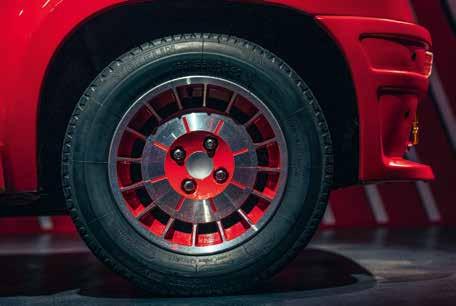

plus lighter steel and plastic elsewhere, wrapped around a beefed-up bodyshell.
However wild the exterior might be, it doesn’t quite prepare you for the sensory overload of the Marcello Gandini-designed interior. The L-shaped steering wheel might seem like a flamboyant hangover from the concept car era but, ever the pragmatist, Gandini had functionality in mind – it allows you to clearly see the revcounter, which runs out of puff at 6500rpm. The cabin is a riot of colour and lines, and of geometric shapes encasing circles.
Although the dials can be hard to read unless the lighting conditions are perfect, this is easy to forgive thanks to the sheer special-ness of it all; it brings to mind the architecture of the Centre Pompidou in Paris. It’s a true assault on the senses, in the very best way – and one that was sadly replaced with a Gordini-sourced cabin for the Turbo 2 on cost grounds. The later cars did away with many of the weight-saving materials, too. Nevertheless, these road machines do not give much away in
‘Its wild exterior doesn’t prepare you for the sensory overload of the interior’
performance to the more pure Turbo 1.
The car certainly made an impact – it won first time out on the 1981 Monte Carlo Rally courtesy of Jean Ragnotti and Jean-Marc Andrié, but by then the shifting sands (well, gravel) were being better traversed by Audi’s trailblazing four-wheel-drive Quattro. As Group 4 morphed into Group B, Renault’s plucky challenger couldn’t compete with power to all four corners or Fiat’s vast funding for Lancia, but the 5 Turbo carved out a niche as a Tarmac rallying specialist – it won the Tour de Corse in 1982 and 1985, the latter in R5 Maxi Turbo form.
While the rally cars had started out with 178-207bhp, the R5 Maxi Turbo’s engine was 1.5 litres and 345bhp. The final fling for the 5 Turbo was even more potent, swapping rallying for circuit racing in the 1987 French Supertouring Championship. Armed with 380bhp, Érik Comas romped to victory.
The road car may have had less than half the muscle of the final competition version, but it still had a reputation as a widowmaker. Although the weight distribution was fairly
close to the magical 50:50, the laggy turbo and short wheelbase, with the weight slung over the rear end, made for a challenging –if fun – drive in all but the driest conditions.
All these years on from the road car’s launch, the sheer fizz-bang power delivery still brings the excitement and makes every drive memorable. It’s a combination that’s seen six-figure prices for a concours Turbo 1, with excellent Turbo 1s not far behind. Piloting a Renault 5 Turbo 1 or 2 these days is not about empirical performance; these are cars that go beyond driving –they are experiences in their own right.
The turbo lag is refreshingly epic, with nothing much happening below 3500rpm; after that it’s a bit like being shunted along by an express train. The gearshift is typically vague in time-honoured French hatchback tradition, largely because the transmission is almost poking out over the tail-lights. That’s a whole lotta cable.
Nevertheless, despite its reputation for spreading its more jambon-fisted drivers across the French countryside like biomechanical pâte, the Turbo 1 feels benign, and certainly a lot more comfortable and usable than other homologation specials of the era. We can probably thank Gandini for that: although this is a strict two-seater, with little separating you from the engine other than a cloth-covered bit of boarding, it’s surprisingly refined, and has enough space for even 6ft 5in of me. Forget the Col de Turini – the 5 Turbo is just as adept on the cul-de-sacs of Telford.
Getting the best out of it is a little less refined – it really is a hooligan machine, requiring frantic gearchanges, and often, to keep it on the boil – but that’s the joy of this car. It reminds you of the thrill of driving, and that 160bhp can be more than enough if the ingredients are beautifully combined – much like French cooking. Time to dine out and indulge your inner Ragnotti?
THIS SPREAD The Marcello Gandinidesigned interior is a riot of colour and lines. Note the show car’s crash helmets just visible in the rear of the interior.
Specifications
Engine 1397cc inline-four/ Garrett T3 turbocharger, OHV
Transmission Rear-wheel drive, five-speed manual
Power 160bhp @ 6000rpm
Torque 155lb ft @ 3250rpm
0-60mph 6.9sec
Top speed 128mph
Weight 900kg
Hagerty Valuation Guide (Turbo 1/Turbo 2)
Fair £50,100/£45,000
Good £66,000/£59,000
Excellent £98,300/£74,900
Concours £120,000/£90,200
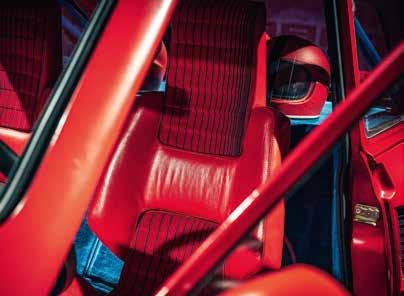
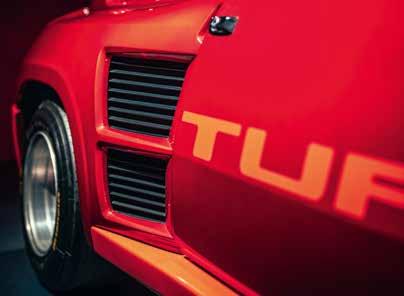
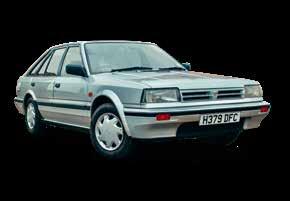
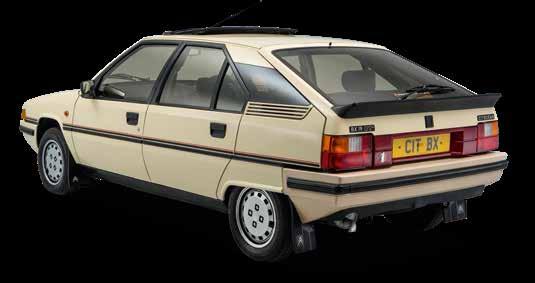
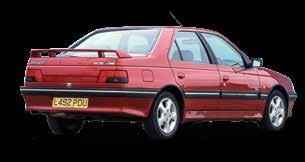
Words Craig Cheetham
Photography Magic Car Pics
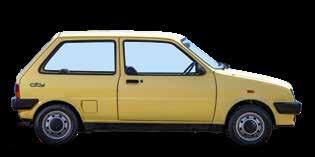
Celebrating automotive awfulness and motoring mundanity, July’s Hagerty Festival of the Unexceptional for the most ordinary of machinery is unconventional in the extreme – but still very special. Here are our (un)magnificent seven cars that we believe define the genre


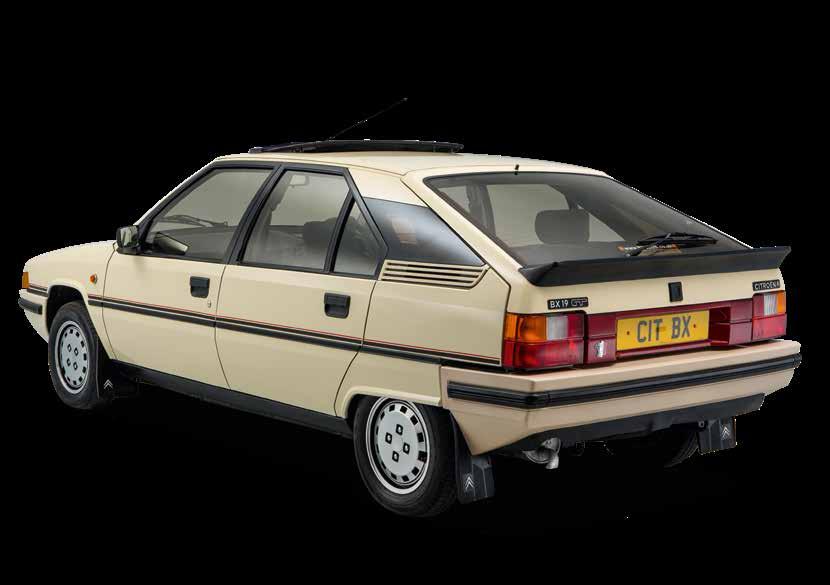
Citroën BX
Wonderful weirdness meets with a magic-carpet ride in Citroën’s 1980s hydropneumatic hero
FOR THE PAST TWO YEARS, THERE
have been more Citroën BXs at the Festival of the Unexceptional than any other individual model of car. We don’t know why, either, but we think it’s great that such an unusual 1980s oddity is so revered – and given its popularity at the event, we have to include it here.
Not that there should be anything even remotely unexceptional about a car that was designed by the same man who created the Lamborghini Miura. For that’s who gave us the BX – none other than Bertone’s chief stylist, Marcello Gandini. The Citroën’s distinctive shape was clearly one that Bertone wanted to unleash on the world, for the idiosyncratic wedge-shaped hatch profile was first seen on the styling house’s 1979 Volvo Tundra concept, then repeated with the 1981 Mazda MX-81 show car. Finally, in 1982, the trapezoidal angles found a home on a production model.
The BX was the replacement for the GS, and it couldn’t have been further away from its predecessor’s sinuous appearance. Yet despite a lack of curves, it was among the most aerodynamic cars in its class. Technologically, it was also one of the most fascinating. As well as Citroën’s trademark hydropneumatic suspension, the BX was built with lightweight principles in mind, which meant the bonnet, tailgate and both bumpers were made of toughened plastic. Initially, it was offered with the brand’s familiar 1.4-litre Douvrin and 1.6 XU petrol engines, joined later by 1.7 and 1.9 XUD diesels in both normally aspirated and turbocharged formats. Then came a 1.9 16v fuel-injected petrol engine, which found its way into the BX GTi – a rapid and involving Q-car that developed a following all of its own. Whichever BX you chose, you’ve got a thoroughly enjoyable machine to drive.
In 1984, an estate version arrived. It was
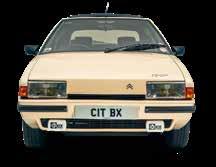
universally well received, with a capacious cargo bay and that self-levelling suspension making it the perfect load-lugger and a popular tow car to boot. The estate was built on Citroën’s behalf by coachmaker Heuliez, so as not to overwhelm production at the brand’s main factory in Rennes. In its later years, however, it was actually the BX estate that was the volume-selling model – it survived until 1995, two years after the hatchback was replaced by the Xantia.
In 1986, the BX got a facelift. Its interior, which began life using Citroën’s quirky ‘rotunda’ speedo and satellite controls for the lights and indicators, was given a more conventional rehash. Aficionados of the brand’s lifelong weirdness were a bit put out by this Phase 2, but for the vast majority of car buyers, a traditional dash layout and understandable controls were a welcome addition. At the same time, the 1.4-litre Douvrin ‘suitcase’ engine made way for the more efficient and refined 1360cc TU unit.
Also as part of the facelift, the BX became
‘BX was among the most aerodynamic cars in its class. Technologically, it was also one of the most fascinating’
1989 Citroën BX 16 TRS
Engine 1580cc/4cyl/OHC/ naturally aspirated
Drivetrain FWD/5-spd manual
Power 93bhp @ 6000rpm
Torque 94lb ft @ 3250rpm
Weight 1084kg
0-60mph 12.2sec
Top speed 107mph
Hagerty Price Guide
Fair £900
Good £1300
Excellent £2900
Concours £4400
the first mainstream car sold in the UK to combine an automatic gearbox with a diesel – quite a curiosity back in the day.
A second facelift came along in late 1989. This equipped the BX with clear indicator lenses and smoked rear lamp lenses to follow contemporary trends in car design, as well as bringing further interior changes to make the car feel a bit more upmarket.
For the ultimate in FOTU curiosity value, there was also a BX van sold in some markets – including in Ireland, where a lack of rear seats brought with it some substantial tax benefits. In Scandinavian countries, meanwhile, the van was sold with an expanded glassfibre ‘high roof’ to ensure that the load volume would meet tax requirements for it to be classed as a commercial vehicle. Understandably, these are rare beasts today.
As, indeed, are Citroën BXs as a whole. At the end of 2024, only 213 of more than 200,000 sold remained taxed on the UK’s roads, according to DVLA records. That means one in 20 of the survivors made their way to the Festival in 2024 – and that’s quite some going.
Peugeot 405
This Pininfarina-styled saloon defined Peugeot’s golden era and made an impact around the globe
BACK IN THE 1980S, PEUGEOT WAS on fine form. It had arguably the best supermini on the market in the form of the 205, it was winning world rallies, and the build quality of its model range was superb.
No car defined that better than the 405. Launched in 1987 amid much fanfare, and built in both France and the UK, it was also responsible for one of the most memorable car TV ads of all time – the protagonist expertly piloting his 405 through a burning cornfield to a soundtrack of Berlin’s Take My Breath Away. Impressionable youngsters of the era grew up wanting a 405 GTX for that very reason alone... or at least I did. Surely, I’m not the only one?
But this Peugeot was about much more than just a great TV ad, for it was also a superb car. Compared with the Austin Montego and Ford Sierra Sapphire that it was competing against in the mid-size saloon market, it left its competitors comprehensively outclassed.
First, there was the styling. The 405 might not have come with hatch versatility, but the trade-off was a pin-sharp saloon that was prettier than anything else in its sector. It had an interior to match, complete with a smart wraparound dash – albeit with some slightly weird switchgear placement, notably for the electric windows.
Then there was the way the Peugeot drove, which even in its most basic trim levels was impressive – a delicately balanced chassis, great steering and superb handling made the car really stand out. For the seriously committed there was the 16v Mi16, which was a fantastic performance saloon – albeit one that is not exactly aligned with FOTU values because it was pretty desirable in the first place.
Instead, the ultimate FOTU 405 is probably a 1.9D Quasar in solid maroon – a price-leader base model introduced in 1993
to give the model a sales boost in its later years. The irony is that if you get one of these, you will still end up with a remarkably decent car – even if it does take a while to get down the road.
The same 1.9-litre XUD engine as was used in the Citroën BX was one of the big selling points of the 405. Diesel power was starting to become acceptable for cars as well as trucks, and while the XUD was a little unrefined, it was stupidly reliable. In turbocharged form, it was also quite lively.
Petrol motors were from the closely related XU engine family, and came in 1.6-, 1.8- and 2.0-litre flavours. In some markets you could also have a 70bhp 1.4 –presumably created to give the 1.9D a fighting chance in a drag race.
Deservedly, the 405 was crowned European Car of the Year in 1988, and at the same time an estate was introduced, with a rather oddball glasshouse bolted onto the back of the saloon body. It was by no means ugly, though, and it was certainly versatile. In 1.9TD form, it was
‘A delicately balanced chassis, great steering and superb handling made the Peugeot 405 really stand out’
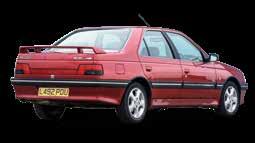
1990 Peugeot 405 1.9 GRD
Engine 1905cc/4cyl/OHC/ naturally aspirated
Drivetrain FWD/5-spd manual
Power 63bhp @ 4600rpm
Torque 87lb ft @ 2000rpm
Weight 1080kg 0-60mph 16.0sec
Top speed 99mph
Hagerty Price Guide
Fair £700
Good £1600
Excellent £3000
Concours £4250
hugely popular in the fleet market – frugal, dependable and spacious.
Whether 1993’s facelift improved matters was debatable. The bootlid’s ridged plastic was replaced by a flat body-coloured plinth, the bumpers were body-coloured, too, and the revised cabin was less haphazard. Yet the introduction of a keypad immobiliser was more of an irritation than a benefit...
But perhaps the most fascinating thing about the 405 is its global success. In the UK, we remember it as a slightly premium, comfortable saloon car or estate, but in other markets it bore a different symbolism.
As well as being built at Sochaux in France, and Ryton in the UK, the 405 was assembled for local markets in Egypt, Chile, Argentina, Azerbaijan, Iran, Poland, Taiwan, Malaysia and Zimbabwe. Europe may have bid a fond farewell to it when the 406 came along in 1996, but in many of these markets the 405 was still available well into the 2000s, or even later in Egypt and Iran. Imagine the kudos of turning up at FOTU in an Iran Khodro 405 with an eight-valve Hillman Avenger engine under the bonnet? Yes, they did exist…
02
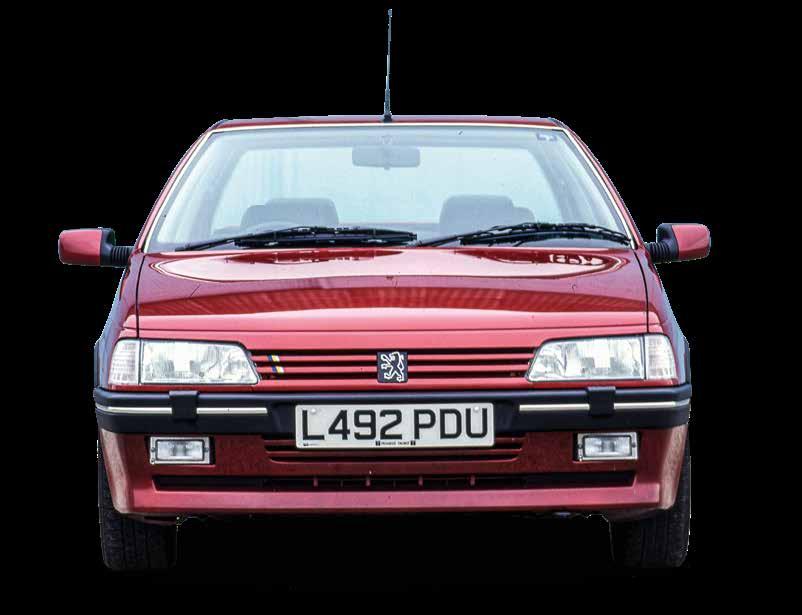
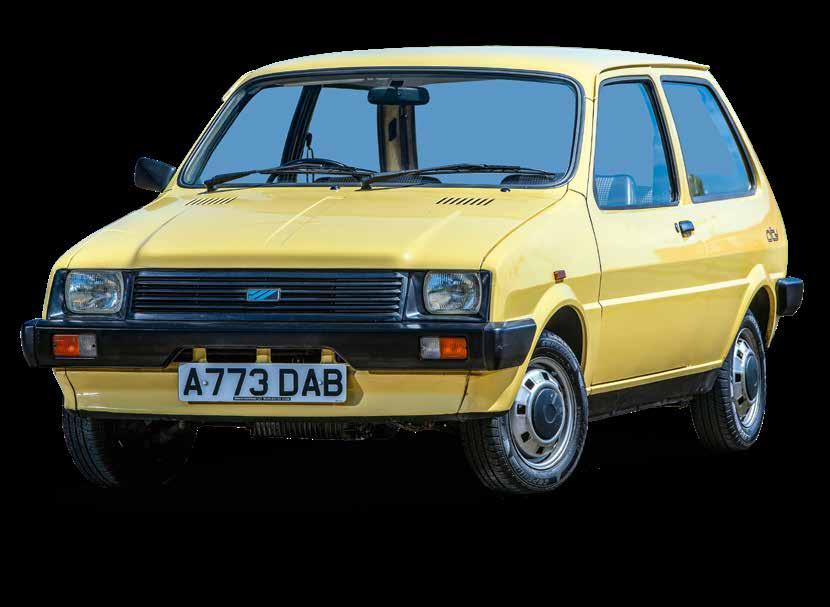
Austin/Rover Metro
It was a plucky Brit to beat the world – or at least that’s what British Leyland hoped…
BACK IN 1980, BRITISH LEYLAND WAS in deep trouble. Although, in fairness, there was barely a moment when the nationalised car firm hadn’t been teetering on the brink.
The Austin Mini-Metro, as it was first called, was the company’s great white hope. Its one chance at creating a car that was good enough to shore up its flaky finances, and prove that BL could, with the right level of investment, create a supermini that would compete on the world stage and wasn’t blighted by terrible build quality.
Project ADO 88 took shape in the heart of the fuel crisis, with the global auto industry rapidly downsizing and creating models that were significantly more fuel efficient. It was also a very dark time for BL, which was mired in financial crisis and headed for what would have been bankruptcy were it not for Government intervention.
The car’s launch was one of pomp and fanfare, as a fleet of Metros defended the White Cliffs of Dover from foreign infiltrators, chasing off pesky Renault 5s, Volkswagen Polos and Fiat 127s. At last, Britain had a home-grown hatch of which it could be proud. Why would you even consider an imposter when there was a credible rival rolling off a production line in southwest Birmingham? At least, that’s the message the marketeers wanted to deliver.
It’s no exaggeration to say that the Metro saved Britain’s auto industry. It was the UK’s most important new car since the Mini, and it had to be a success – something it went on to become, despite a spectacular false start that led to the car being hastily restyled and made wider just a few months before launch. That ridge in early bonnets? That was to hide the fact 100mm had been added.
Yet despite such challenges, what emerged from a heavily strangled R&D budget was actually a fine little car – hampered to a degree by relying on BL’s ancient A-series
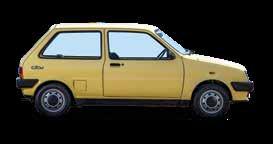
engine with a four-speed ’box in its sump, meaning it couldn’t match the refinement of some rivals. The interlinked Hydragas suspension, though – pioneered on the Allegro, of all things – gave it a decent ride and entertaining handling, and it was neatly styled and well packaged. Given what Leyland was working with, the Metro was a commendable effort – and ultimately it went on to have an 18-year production run.
There was even a sporty MG version with red seatbelts and pepper-pot alloys, while the turbo spec – if driven hard enough – would spin its tyres off its rims. There was a recall for that particular peculiarity...
By 1985, the Metro had grown up. A facelift had smoothed out the bonnet, a five-door model added more practicality and the dash went all-out 1980s with a one-piece moulding and graphics that had a hint of ZX Spectrum about them. This was when personal computing was in its infancy, and the Metro had to look the part.
In 1990, it received a major overhaul. Now
‘The Metro saved Britain’s auto industry. It was the UK’s most important new car since the Mini, and it had to be a success’
1981 Austin Mini Metro 1.3 L
Engine 1275cc/4cyl/OHC/ naturally aspirated
Drivetrain FWD/4-spd manual
Power 62bhp @ 5250rpm
Torque 72lb ft @ 3000rpm
Weight 760kg
0-60mph 16.0sec
Top speed 90mph
Hagerty Price Guide
Fair £900
Good £1400
Excellent £2900
Concours £4500
in British Aerospace’s private ownership, the entire firm was rebranded as Rover, and the Metro took on the famous longship badge as well as the company’s new K-series engine – a thoroughly modern and compact alloy unit that would, had it arrived earlier, have put the Metro right at the top of its class. It was still a neat little car, but by now its packaging was compromised when compared with newer rivals such as the Renault Clio and Ford Fiesta Mk3.
Its final incarnation came in 1995, when the Metro name was dropped and the car was renamed the Rover 100. It remained an important part of the brand’s line-up right until the newly formed Euro NCAP crashtesting programme threw one into a concrete wall in 1998. The result was the worst crash-test result in history – and not even a loyal band of pensioners queuing up at dealerships to try out the 100’s quirky new CVT gearbox was enough to save its sullied reputation.
It was an ignominious end for a car that once filled Britain with hope – and for an unexceptional but lovable little model that still holds fond memories for many a driver.
Vauxhall Nova
With a huge range of engines and bodystyles, there was a Nova for everyone – from the sporty to the utterly unexceptional
GENERAL MOTORS WAS A LITTLE late to the supermini party with the Vauxhall Nova – or Opel Corsa in markets outside the UK. But when the car finally arrived, it did so rather comprehensively – for as well as the three-door hatch that was the obvious rival to the Ford Fiesta and Austin Mini-Metro, the Spanish-made Nova was also offered as a five-door, as well as spectacularly bland two- and fourdoor saloons. It was the three-door that was the looker, with its flared rear arches and distinctive profile. It’s almost as if the designers did that one as a showpiece, then didn’t really bother with the rest.
Then there was the baffling engine line-up. You could choose your Nova as a 1.0-, 1.2-, 1.3-, 1.4- or sporty 1.6-litre, as well as a 1.5 diesel powered by an Isuzu engine, which was frugal yet cacophonous. In Festival of the Unexceptional terms, the oil-burner is probably the star attraction – especially if you can find a saloon.
After all, the sportier versions (GSi, GTE, SR and SRi, because – of course –there had to an array of choice here, too) have survived in fair numbers, and there’s a good chance that they account for quite a few of the 807 Novas that were still taxed and tested at the end of 2024, according to DVLA data. This is a tiny fraction of the 500,000 sold in the UK between 1983 and 1993, at which point the Vauxhall was upstaged by the far prettier Corsa B.
The Nova name was for the UK only, and was plucked from GM’s list of trademarked monikers, the badge having originally appeared on a 1960s Chevrolet. The reasoning, it was said, was Vauxhall’s bosses thought the British public wouldn’t take to the name ‘Corsa’ because it sounded like ‘coarser’, suggesting the car was unrefined. It undoubtedly led to a few furrowed brows in the Zaragoza factory,
too, as ‘no va’ is Spanish for ‘doesn’t go’.
Vauxhall’s naming concerns proved unwarranted. When the supermini took the Corsa name for its second-generation iteration, it never left the UK’s top ten bestseller charts. Buyers, it seems, weren’t as worried as the brand’s marketing suits.
The Nova was one of the most popular cars of the 1980s, and it was pretty good to drive by the standards of the day, too. This is actually quite typical of many Vauxhalls, which have traditionally gone about their business quietly, efficiently and below the radar, in the most unexceptional of ways. And that’s exactly why we have chosen to celebrate the Nova here.
It was also famous for its seemingly endless array of special editions, with myriad daft names: Swing, Trip, Antibes, Spin, Sting, Flair, Club and Diamond to name but a few. Perhaps the silliest of the lot, though, was the Nova Tennis, which was finished in white with a green interior to match the lawn at Wimbledon. There was a posh version, too: the Nova Luxe,
‘A learner car, grandma’s shopping hatchback or a ludicrously modified Max Power special – which is how a lot ended up’

1987 Vauxhall Nova 1.2 Merit
Engine 1196cc/4cyl/OHC/ naturally aspirated
Drivetrain FWD/4-spd manual
Power 55bhp @ 5600rpm
Torque 66lb ft @ 2200rpm
Weight 750kg
0-60mph 14.8sec
Top speed 94mph
Hagerty Price Guide
Fair £800
Good £2200
Excellent £3300
Concours £4500
which had lattice-style alloy wheels and plush velour trim. It was perfect for the recently retired executive downsizing from the company BMW. Perhaps.
A facelift in 1990 brought with it a much better dash and a new, body-coloured grille, but by then the Nova was long in the tooth and no amount of special-edition packages could make it competitive against the likes of the excellent new Renault Clio. Still, it was a good effort from GM, and it sold in strong numbers – enough for many of us to have fond memories of the unassuming little supermini, be it as a learner car, grandma’s shopping hatchback or a ludicrously modified Max Power special –which is how a lot of Novas ended up.
As with so many models of its era, the little Vauxhall is one of those that seemingly disappeared overnight – and with so few believed to still exist, it’s now becoming curiously collectable. The sporty models were always going to go that way, but these days you’re just as likely to see a bidding war on a Nova Club, with its yellow and grey seats and white hubcaps. Nostalgia is a powerful drug.
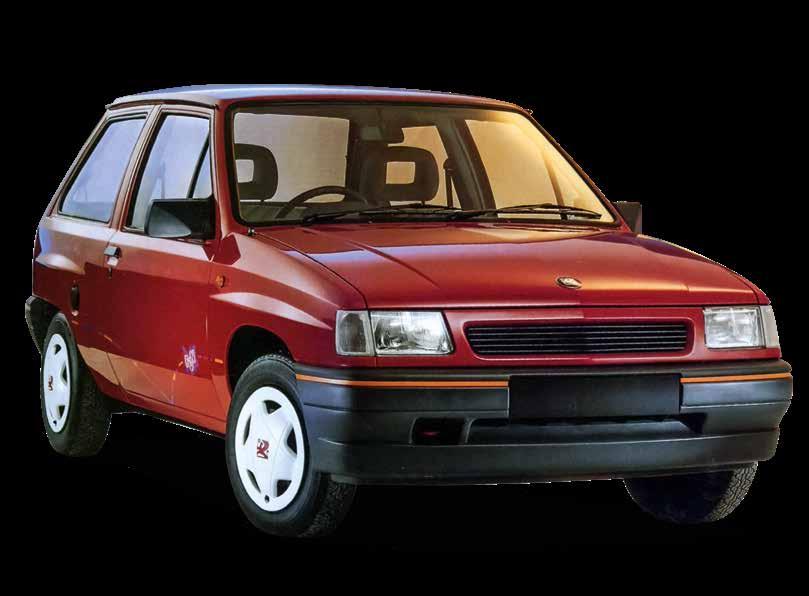
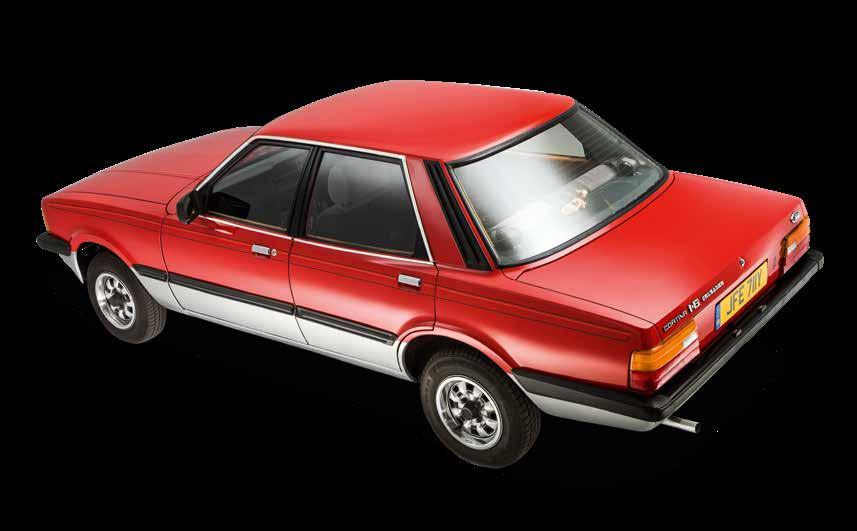

Ford Cortina Mk4/Mk5
An everyday hero that rightfully earned its place as a ubiquitous symbol of British ordinariness
‘MEMORIES ARE MADE OF CORTINA
That was what Ford said in its promotional material back in 2012, when it marked the 50th anniversary of what was once Britain’s best-selling motor.
In many ways, the ’Tina was far from unexceptional. It sold by the million, mobilised the masses and was renowned for its low running costs and simple maintenance. From the outside lanes of the motorway network to the banger-racing tracks on which many Cortinas ended their days, they were massively respected.
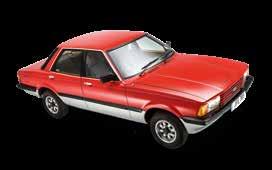
But if the definition of a FOTU car is one that was once on every street corner, yet now raises an eyebrow when seen in the wild, it’s the Cortina. Especially a down-atheel Mk4 or Mk5 with a coat-hanger radio aerial and missing bumper corner. Nostalgia is a fickle beast, and that’s how many of us remember them. A scruffy Ford is a symbol of working-class Britain as much as it is of our once-dominant car industry, when they flew off the Dagenham production lines as quickly as fleets could place their orders.
Indeed, many fleet managers were left crying into their beer when the Cortina was discontinued; the world wasn’t ready for its jelly-mould successor, the streamlined Sierra, whose avant-garde looks managed to conceal the fact that, underneath, it was largely the same bowl of porridge.
That’s because Ford’s 1970s and ’80s styling team had a keen eye for making the ordinary pretty desirable. Led by German design visionary Uwe Bahnsen – and largely influenced by France’s Patrick Le Quément, who went on to pen the Sierra and a generation of wacky Renaults thereafter –the Mk4 Cortina captured the zeitgeist of the era when it first appeared in 1976.
In a stark departure from the ‘Coke bottle’ Mk3’s flares and flowers vibe, it wore a crisp, angular aesthetic with neat, square
edges and a wide track. With sports steel wheels, ‘rimbellishers’ and a vinyl roof, the car was stylish, clean and modern, while its Pinto engines (unless you could stretch to the 2.3-litre Cologne V6) were admirable enough performers, even if they began to emit a James Bond-style smokescreen in their later years. Air quality and old Cortinas were unfamiliar bedfellows, as many a late-1980s teenager will remember.
Unsurprisingly, the Cortina didn’t have to try too hard to retain its best-seller status, at least not until Vauxhall’s frontwheel-drive Cavalier came along in 1981. Its other key rival was the Morris Marina, but not even a rehash into the square-faced Ital could bring that car even close to the Cortina’s standards or sales figures.
Midway through its life, the Mk4 begat the Mk5, although it was only ever known as such colloquially. It was, officially, the ‘Cortina 80’, a thorough facelift to fend off more advanced European and Japanese competition, with larger glass areas, slimmer
‘From posh suburbs to council estates, the Cortina could be found everywhere – and it was appreciated by millions’
1980 Ford Cortina 2.0 GL
Engine 1993cc/4cyl/OHC/ naturally aspirated
Drivetrain RWD/4-spd manual
Power 101bhp @ 5000rpm
Torque 107lb ft @ 2700rpm
Weight 1110kg
0-60mph 10.5sec
Top speed 108mph
Hagerty Price Guide
Fair £4300
Good £6400
Excellent £9000
Concours £11,000
C-pillars, wraparound indicators and plastic bumper corners, which were so badly attached that if you lost one, you could often find a replacement by scouring hedges and car parks. One man’s loss, etc… It was plusher inside, too, with velour trim and fake wood on the ‘posh’ Ghia, plus options erstwhile unheard of, such as air-conditioning and electric front windows. Yet, strangely, only a four-speed transmission in the manual models.
The Cortina rightfully earned its place as a ubiquitous symbol of British ordinariness. From posh suburbs to council estates, it could be found everywhere – and it was appreciated by millions. When Ford announced that production was to end in 1982, it launched two special editions: the Crusader and the Carousel. Both sold out within weeks.
It was the end of an era, after 600,000 Mk4s and Mk5s had been sold in the UK. Of those only approximately 1000 survive, and not all of them are in preservation. If you want one, now is the time – as unexceptional as these cars may appear, collectors are already starting to cotton on.
Nissan Bluebird
The first UK-built Nissan changed the British car industry – and it was a tough old bus…
THEY SAY THAT IF YOU WANT TO know whether a car is genuinely any good, then the two people you should ask are a banger racer and a taxi driver.
The 1986-92 Nissan Bluebird was, for many years, beloved of both – and that tells you just how strong this model was, albeit in the dullest of ways (Turbo ZX aside). Indeed, you only had to look at the number of Bluebirds still plugging away as daily transport in the mid- to late 2000s to know how well made and well engineered this particular machine was.
One of the main reasons is that the majority of Bluebirds of this generation were built in Britain. Admittedly this has not always been a hallmark of a quality car – but the big Nissan was different.
It was to be the first model to emerge from Nissan Motor Manufacturing UK, which came about as a result of the Japanese firm and the British Government working together to build a factory in Washington, Tyne and Wear, that would go some way to addressing the high unemployment in the area after many of the shipyards had been forced to close.
The Bluebird brought Japanese working practices (and, arguably more importantly, money) into British factories. Also, because there was such a lot at stake on the back of Government investment, it was engineered to be as good as it could be from the outset.
From the moment the first car rolled off the production line in 1986, the familysized Nissan became one of the best-selling models in the UK, and it was a frequent name in the market’s top ten. It was popular both with private buyers for its space and comfort and with fleet managers for its low running costs and dogged reliability.
It looked dowdy, although the addition of a hatchback (codenamed T72) in 1987 brought it more into line with European
tastes. It was also wide. Very wide. This was great for passenger comfort, but less of a benefit when it came to squeezing the Bluebird into a tight multi-storey car park.
Among the Nissan’s innovations were its dual trip meters (perfect for working out your business mileage) and its semireclining rear seats – which, when coupled with the wide cabin and generous legroom, made it a very comfortable place to be, as well as a cracking minicab.
Power, such as it was, came from Nissan’s eight-valve ‘CA’ engine family in capacities of 1.6, 1.8 or 2.0 litres, all of which were proven to be dependable. Or, for ultimate misery, you could opt for a 2.0-litre nonturbo diesel, which had a 0-60mph ‘sprint’ time of 24.8 seconds. The flipside of this rather leisurely performance was that the motor was rarely stressed, and 500,000 miles with nothing other than routine maintenance was par for the course. Again, perfect for the taxi trade. The banger racers prefer the petrol ones, for obvious reasons… What really made the Bluebird stand out,
‘If it wasn’t for the banger racers and cabbies, there’d probably still be a Bluebird on every street corner’
Nissan Bluebird 1.8 SLX
Engine 1809cc/4cyl/OHC/ naturally aspirated
Drivetrain FWD/5-spd manual
Power 89bhp @ 5200rpm
Torque 110lb ft @ 3200rpm
Weight 1229kg 0-60mph 12.6sec
Top speed 103mph
Hagerty Price Guide
Fair £600
Good £1600
Excellent £2500
Concours £4000
though, was its remarkable resilience to corrosion. This wasn’t something typical of a Japanese car. Far from it, in fact – but the Washington-built models fended off rust for years, far better than most of their contemporaries. Even now, there are quite a few examples on the road that are utterly free of pockmarks and crustiness, and there would probably be a whole lot more if not for the car’s incredible strength making it the top choice among oval racers. Its rarity today comes more from that than from natural attrition. If it wasn’t for the banger racers and cabbies, there’d probably still be a Bluebird on every street corner, for they are immune to natural destruction.
Yet despite being a good car – indeed, a very good car – the Bluebird is looked upon by many as automotive porridge. The ‘plain Jane’ styling, fuddy-duddy image and mediocre performance somewhat hide the fact that the big Nissan is actually a very pleasant model to drive, and can even be quite good fun on the right road.

It’s a car that is exceptional in so many ways, yet is unexceptional in most of the obvious ones. And that’s why we love it.
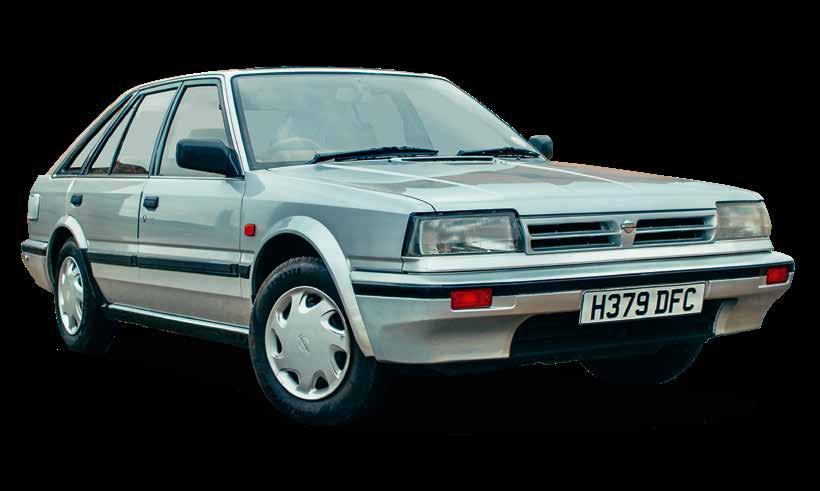
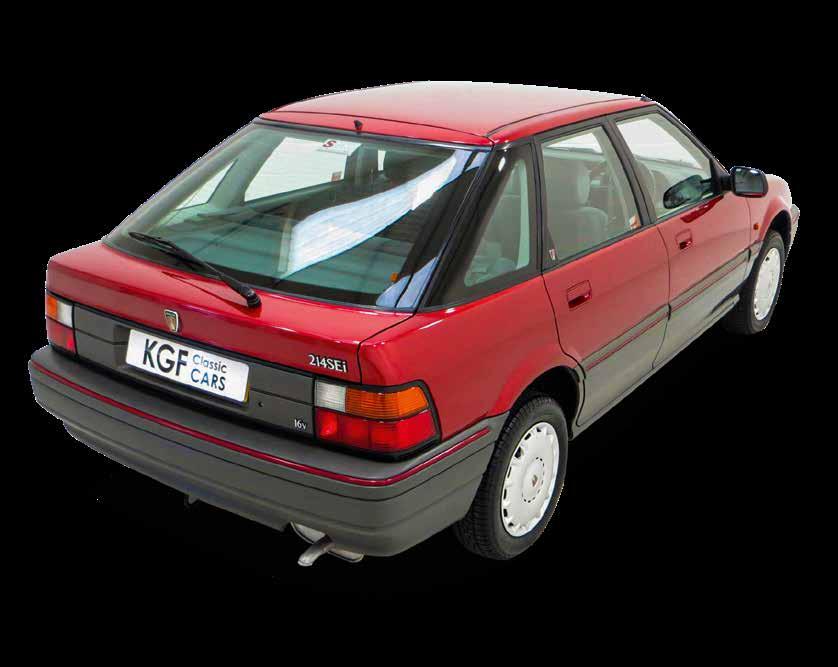
Rover R8
A last hurrah for a revered British marque? Not quite, but this desirable model would have been a high point to go out on

IN MANY WAYS, THE ROVER ‘R8’ CAN be considered one of the best-ever British cars, even if it is ordinary on the outside…
Back in the early 1990s the R8 was a very desirable car – especially in a plush spec with the attendant, and achingly pretty, multi-spoke alloys. It’s hard to remember that now, though, because knocking Rover is fashionable among armchair experts, many of whom have never experienced the model that, in the brand’s 101-year history, was probably its high watermark.
Upon the R8’s 1989 debut, it won multiple awards. Indeed, fair to say that it was probably the best mid-sized hatch and saloon of its era, for a while at least. It was also the most significant fruit of Rover’s Honda collaboration, developed between the two brands and also sold as the Honda Concerto, which had different front and rear styling and its own range of engines.
The R8’s launch coincided with a marketing plan to move the Rover range more upmarket, with new, dark red branding, posh brochures and a fresh advertising slogan: ‘Above all, it’s a Rover.’ As such, it was pitched as a more premium model than, say, a Ford Escort or a Vauxhall Astra.
But this was all wholly justified. It wasn’t just the neat styling, two-tone paintwork and strip of fake wood on the dashboard that marked the R8 out as a cut above. It was the whole engineering package.
First up, there was the new K-series engine. It was plagued by reliability issues later in life, but at launch the twin-cam 1.4 was a masterpiece. In 16v form it boasted 103bhp, which made it more potent than both Ford and Vauxhall’s 1.6, and Peugeot and Citroën’s 1.8. This was big news.
Alongside it sat a 1.6 – Honda’s D-series unit. This wasn’t much quicker, but it had a very different character. You could also get a 2.0 T-series in the 220 and a 1.8 diesel,
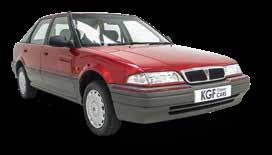
borrowed from Peugeot. Given that the French were the best in the business where diesel engines were concerned at the time, that was no bad thing.
Underneath, the R8 was also a masterstroke of engineering. While rivals made do with torsion beams and Panhard rods, the Rover had an advanced multilink rear suspension set-up developed at Longbridge. This blessed the car with impeccable ride and handling qualities.
The 200 hatch was first out of the blocks, appearing in October 1989. Five months later, it was joined by the four-door 400 to cater to the brand’s more traditional market. But Rover wasn’t done yet.
In 1992 a 200 Cabriolet came along, followed by the striking 200 Coupé, codenamed Tomcat. In its lairiest form, this could be had with a 197bhp 2.0-litre turbo powerplant, which went on to set endurance speed records that have yet to be beaten at Millbrook Proving Ground in Bedfordshire.
In 1993 the R8 was given a mid-life nip
‘For one glorious moment, after years of mismanagement, Rover had a car it could truly be proud of’
1989 Rover 214 SLi
Engine 1389cc/4cyl/DOHC/ naturally aspirated
Drivetrain FWD/5-spd manual
Power 103bhp @ 6250rpm
Torque 91lb ft @ 4000rpm
Weight 1030kg
0-60mph 10.6sec
Top speed 107mph
Hagerty Price Guide
Fair £900
Good £1500
Excellent £2400
Concours £4300
and tuck, sprouting a new chrome grille tacked onto the bonnet, and darkened rear light lenses. The two-tone paintwork got the chop at the same time, while seat fabrics were improved across the range. Rover also introduced the final piece of the R8 jigsaw in the form of the 400 Tourer – a handsome compact estate car with a wonderfully over-engineered parcel shelf (these things matter at FOTU).
The R8, then, was a remarkable car in many ways, although the 200 hatch and 400 saloon were only sold for just over five years. The pace of development – before BMW put a spanner in the works of the Honda-Rover collaboration – was such that the R8’s replacement was already well underway when the car was launched. What happened next in Rover’s story is well documented, and the demise of the R8 may well even have been the beginning of the end. But for one brief and glorious moment, after years of strikes and mismanagement, the brand had a car it could truly be proud of. We’re sad that it’s largely forgotten today. Thanks to KGF Classic Cars, Peterborough for the images of this 13,000-mile R8, now sold.
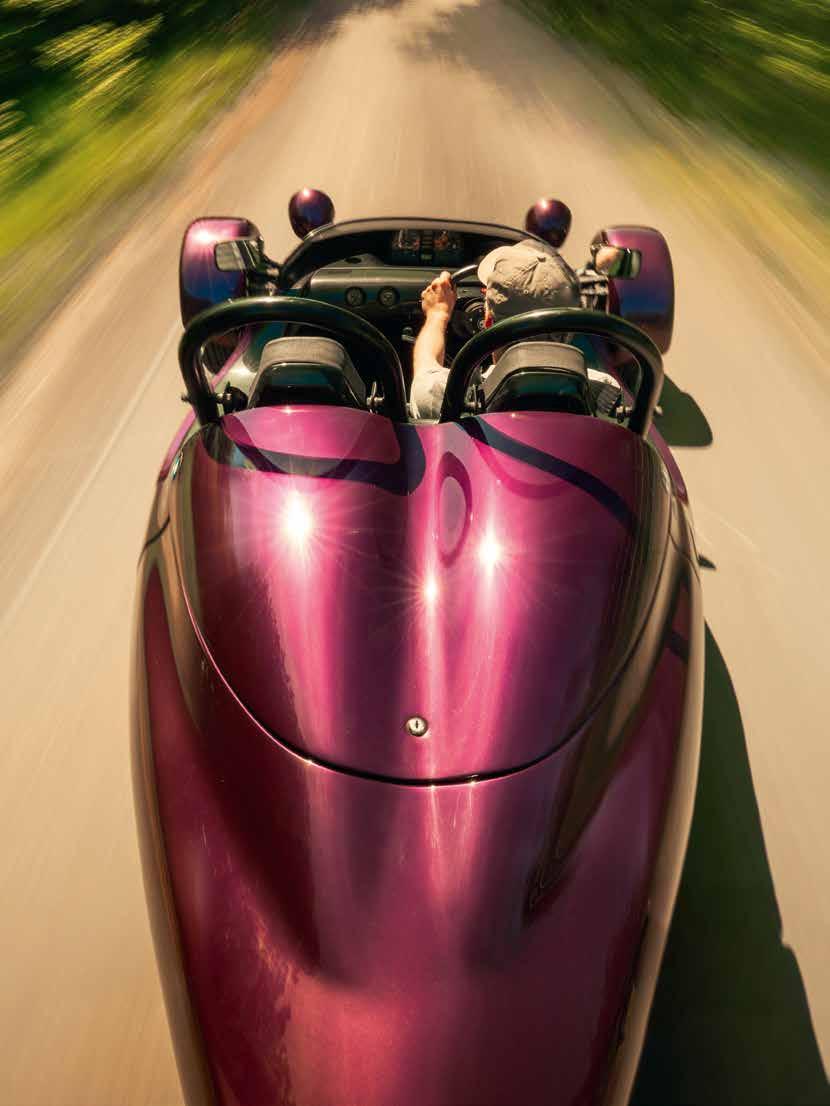
STING SCORPIONS
Hard driving in Grinnall’s mid-engined Scorpion III threewheeler. It’s a car that defies belief – but is there a kick in the tail?
Words Richard Heseltine
Photography Matt Howell
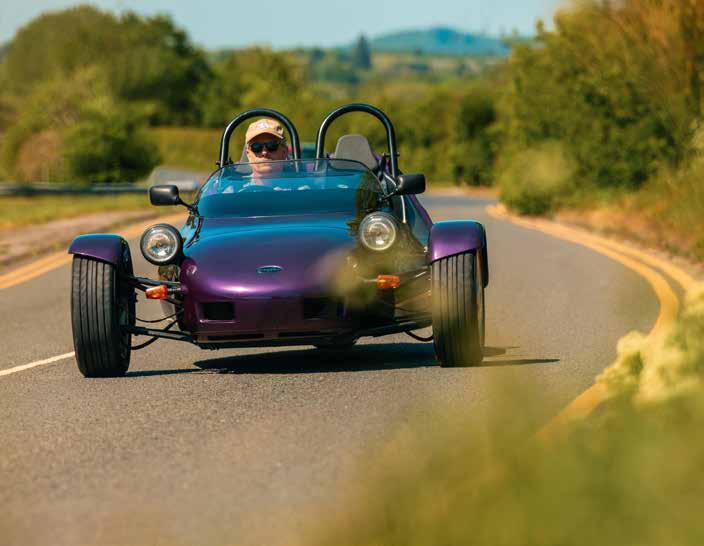
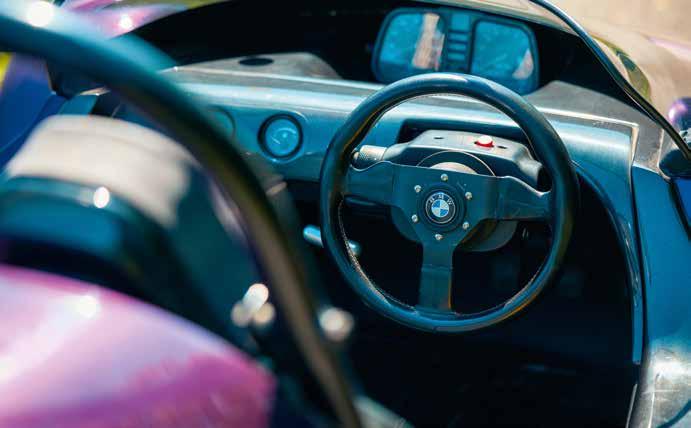
YOU SEE HIM FROM A DISTANCE AND instinctively know that he is an amateur comedian. You have heard it all before. It is hard to appear inconspicuous in a purple three-wheeler. The Grinnall Scorpion III invites conversation. More than 30 years have elapsed since it first appeared, but it hasn’t lost its alien quality.
Our hero edges closer and asks: “Is it stable?” Your mouth forms a shape, but no words are forthcoming because he clearly isn’t interested in the answer. Instead, he is busy raiding the quip cupboard for wisecracks about Reliant Robins. Right you are, thanks for that. Mustn’t dawdle. Bye!
And we are off, accelerating hard and snicking through the gears in a car that defies belief as much as it does easy description. First seen in 1992, there was nothing like the Scorpion III then – and there’s nothing like it now. It exists in its own little bubble, but not an impenetrable one. This is a different kind of sports car, and one that has always been tantalisingly within reach if you’re brave enough. Nothing about the Grinnall is in the realm of the normal, and you really have to want one. To the marque faithful, nothing else will do.
It was quite the departure for the man who first conjured up the Scorpion III way back when. Mark Grinnall was of farming stock, the Worcestershire man having been a star of motocross in his teens prior to retiring in 1981. He subsequently worked on friends’ motorcycles and cars, before formalising things into a proper business.
He then began inserting Rover V8s into unsuspecting Triumph TR7s. Matters rather snowballed thereafter. He honed and tweaked the concept, and he ultimately built cars from bare bodyshells and developed a power-steering set-up, ownbrand suspension and so on.
“It got to the point that we had an OEM account with Unipart,” Grinnall recalls. “It also came to us when Triumph closed, and it had around 70 unused bodyshells. We did about 350 cars to the early 1990s, and I built one with a 5.8-litre Jaguar V12. Doing a car of our own was the next logical step, and I designed a sports/GT model and cracked on. Then I looked at how Peter Wheeler was reinventing TVR. I realised there was not much of a business case for carrying
‘At no point do you feel that it will fall over. Quite the opposite...’

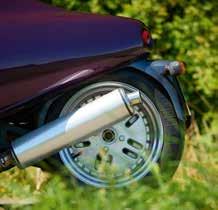
THIS SPREAD Motorcycle-derived mechanicals ensure strippeddown thrills and intoxicating performance.
on. I should come up with something else.”
What he created instead was a new kind of performance three-wheeler. “I had all sorts of concepts in my head, but it was my dad who gave me the germ of an idea. As a fan of pre-war Morgans, he got me thinking about doing a modern-day, mid-engined equivalent, as envisaged in the early 1990s. We set about creating and rigorously testing some development cars, which included thrashing around the Isle of Man. Then MGA Developments got involved.”
The now long-shuttered Midlands outfit was once an unofficial skunkworks for major manufacturers, Grinnall working in tandem with clay modeller Anthony Tovey and designer Steve Harper. The latter had quite the résumé, having first worked in the Austin-Morris studios at Longbridge and then going on to helm projects as diverse as the MGF, Ford RS Cosworth, Rolls-Royce Silver Seraph and TX1 taxi cab.
“If you think back pre-Scorpion, everyone who did a three-wheeler made basically the same product. They looked like pre-war cars,” Harper says. “They were angular and coffin-like, but this was a mid-engined machine so there was an opportunity to do something new. I was inspired by Ferrari’s 250 LM when we did the MGF, particularly the high waistline. There was some Ferrari influence here, too. I borrowed a little from the 1961 ‘Sharknose’ 156 Formula 1 car for the front end. I was happy with it, and I still think the Scorpion looks good.”
Grinnall adds: “It was an interesting process, but obviously budgets were small, so we only got half a car done. We had to ‘mirror’ the other side, which was a challenge. I was blown away by the reaction on launch, though. You have to remember that I was still operating out of workshops on my farm, but just about every major car mag did a feature on us inside a year. I felt

like a rabbit caught in the headlights because the media interest was so intense. It wasn’t something I ever felt comfortable with.”
He got over his bashfulness enough to approach BMW for OEM status, the Scorpion employing three- and fourcylinder K-series motorcycle engines of various displacements: “When I gave the guys my initial pitch, they couldn’t have been nicer. BMW was incredibly helpful with emissions testing and for getting the Scorpion TÜV approval so we could sell in Germany. From there, it was homologated to sell in Japan, and so on. The mid- to late1990s were hectic, but I enjoyed travelling the world and seeing the Scorpion take off.”
With the design constantly evolving, the Scorpion IV followed in its wake. Officially launched at January 2004’s Autosport International, but first seen three years earlier, this four-wheeler endured a tortured gestation: “I always planned on a range of cars, and the IV initially used Fiat’s Turbo 20v five-cylinder. We then switched to an Audi engine, developed with Cosworth. Steve Everitt did the styling, the front end from which was subsequently adapted for
Specifications
Engine 998cc DOHC
liquid-cooled inline-four
Transmission Six-speed manual
Power 90bhp @ 7750rpm
Torque 89lb ft @ 5250rpm
0-60mph 5.0 seconds
Top speed 125mph
Weight 350kg
Hagerty Valuation Guide
Value data on the Grinnall Scorpion III is very scarce, but the median is around £10,000
the Scorpion three-wheeler. The problem was that there was never enough time.”
Grinnall continues: “There was only one of me, and I had to wear many hats. One day I was an engineer, the next a marketing man, then something else. Then there was the question of development money. As such, the Scorpion IV never really entered production. When I designed it, the target was Caterham. By launch, there was also the Ariel Atom and a lot of other minimalistic machines, so I decided to knock it on the head rather than commit further resources.”
The new century saw Grinnall embarking on creating a different kind of trike. “We exhibited the Scorpion at bike shows and the comments were always the same: ‘The wheel pattern is the wrong way round.’ I had no prior interest in that kind of thing, but I started looking into it a bit deeper. Then BMW brought out its R1200, which was ideal because it had a wishbone front suspension instead of conventional forks, so it doesn’t dive. From there it was a case of coming up with a spaceframe, running the prop back to the final drive, and so on.”
In 2000 the Grinnall Trike was launched,
a subsequent Triumph Rocket 3-based offering selling in relatively large numbers. As such, the Scorpion III gradually took a back seat, although technically it remains still available. ‘Our’ car was built in 1994 and uses a 998cc four-cylinder K100 motor. It is the second Grinnall owned by Jane Weitzmann, the first having been equipped with a bespoke paddle-shift arrangement. Up close, the outline still looks smooth and contemporary but not overtly aggressive.
The basis is a triangulated ‘trellis’ frame, BMW motorcycle parts stretching to the gearbox, driveshafts and more besides. With the one-piece nosecone removed, the neat anti-roll bar and inboard Koni coilovers are mounted near vertically. They are operated by the extended and wide-based upper wishbones, which pivot normally at brackets on the outer upper chassis rails. It’s a neatly engineered package with a tiny footprint: just 3632mm long, 1753mm wide and 1067mm at the top of the roll hoops.
The cosy ‘cabin’ is ultra-sparse, with a fixed seat, BMW bike dials and adjustable pedals. Fired up, the Scorpion III sounds like a motorcycle, but it’s not obnoxiously loud. Unique Grinnall quirks include the incongruous J-shaped handbrake beneath the dash, which is a pig to activate. And while the gearlever appears conventional, it operates in one plane only: push forward for neutral, backwards for first, with higher ratios engaged by successive shoves forward. To drop down a ratio, you pull back.
It’s child’s play with practice. Motorcycle engines aren’t renowned for their low-down torque, but the Scorpion III just bolts past 2000rpm. There’s negligible flywheel effect, and gearchanges are rapid-fire fast. The car tips the scales at around 350kg – about a quarter of your average modern-day hatch’s, so acceleration is… visceral. In-period chat of 0-60mph in around 5.0 seconds seems pessimistic. The sense of weightlessness is the Grinnall’s defining characteristic, its cutaway flanks and lack of a windscreen ensuring that your jowls are reconfigured in an instant from the onslaught of fresh air. As for stability, the Scorpion III corners in its own particular way. Go in hot and it’ll understeer. Apply power and it oversteers. Apply more throttle and it reverts back to understeer – but at no point do you feel

THIS SPREAD
The strange and seductive Scorpion III provides a driving experience quite unlike any other.
‘The sense of weightlessness is the Grinnall’s defining characteristic’
that it will fall over. Quite the opposite; it’s rather exhilarating. It stops well, too; you’d have to work hard at getting into trouble before the car would sting you. If we were to nitpick, the relatively long wheelbase relative to the front track, not to mention the limited lock, makes it a bit unwieldy on mini roundabouts and suchlike.
A reverse gear would be nice, although some Scorpion IIIs did have an electronic set-up. Also, the swing-arm rear suspension doesn’t like bumps, but otherwise this car is a cure for the blues. It is unbelievably good fun. It is impossible not to giggle, the air occasionally turning a bit sweary, too.
Autocar drove the prototype 33 years ago and gushed: “The performance is intoxicating, the styling arresting, and the fit and finish of the bodywork a revelation.” It’s hard to argue to the contrary. The Grinnall Scorpion III is strange and seductive – which makes it just about irresistible. Many thanks to Jane Weitzmann at JHW Classics, www.jhwclassics.com.
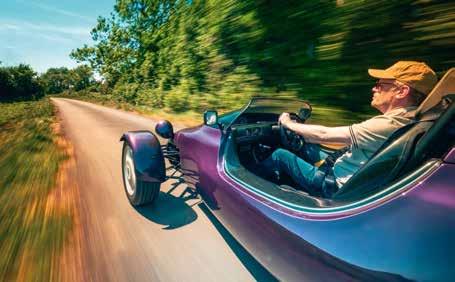
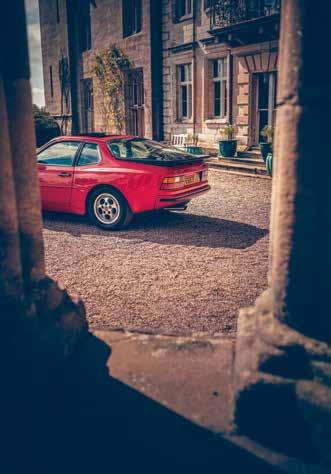

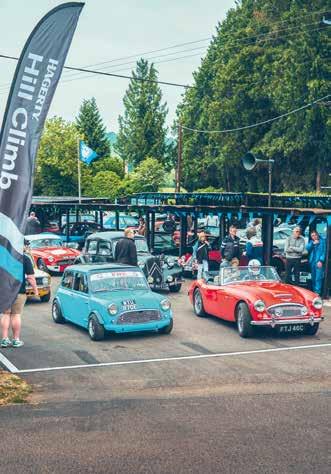

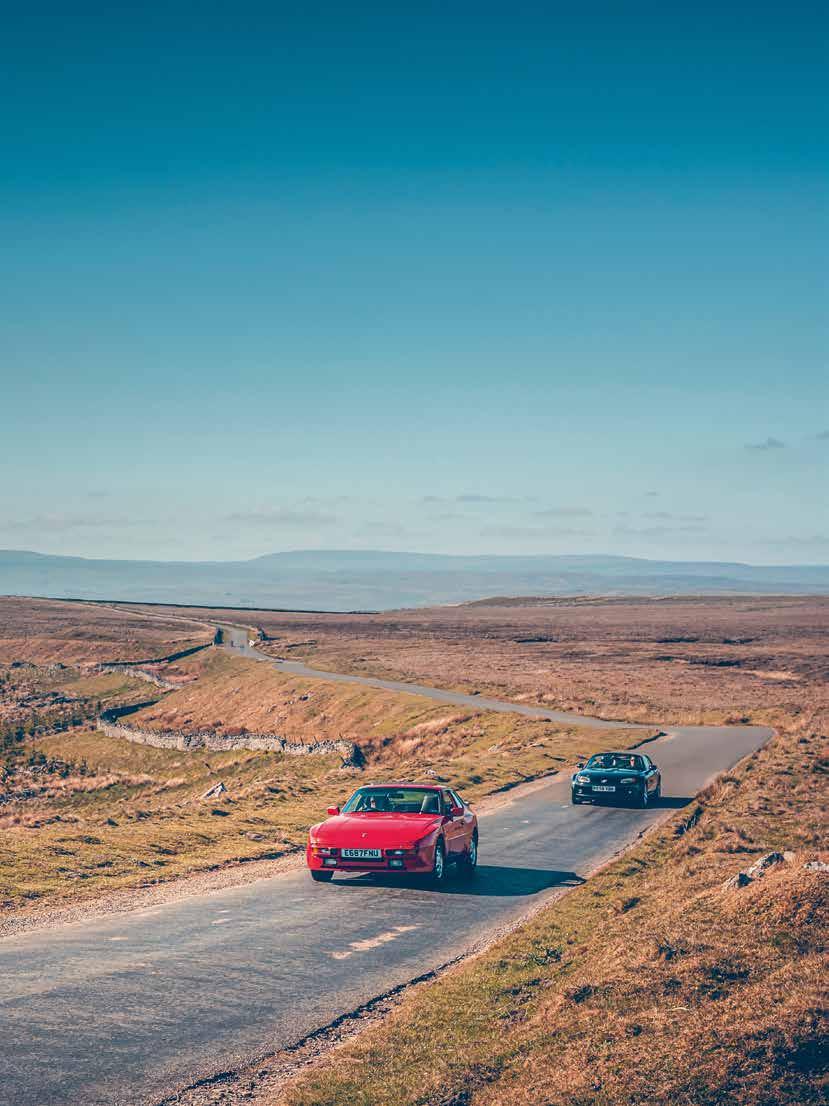
FIVE DAYS AROUND THE UK
Hagerty’s busiest-ever UK event week called for an epic road trip. John Mayhead drove his Porsche 944 1000 miles to visit three destinations within five days
Words John Mayhead Photography Will Aron / Matthew Pitts / John Mayhead
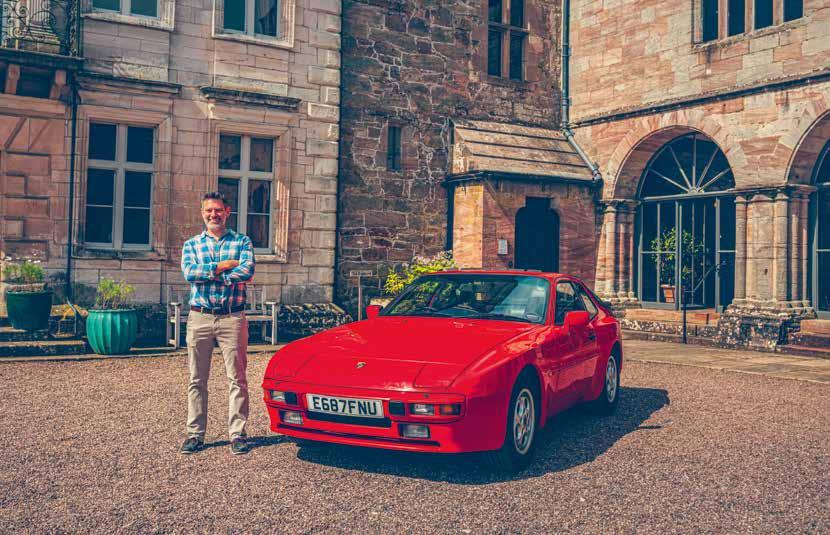
I WILL START BY SAYING THAT I bottled it. When I first looked at linking up the May 2025 Hagerty Hangout at Bicester Motion, the first-ever HDC Goes North tour and the Hagerty Hill Climb at Shelsley Walsh, it looked like a perfect opportunity to stretch the legs of my 1970 Volkswagen bay-window Campmobile.
Readers may recall that Bessie, as she’s known, struggled a little last summer, and after the crankcase was found to be beyond repair, she received a shiny new 1641cc engine, now with twin Webers in place of the asthmatic single PICT carburettor, and a rather larger exhaust. The result is a van that can keep up with modern UK traffic and even overtake uphill on a motorway, as I found out on a recent jaunt to Dorset and back – but I finished that trip with an aching back and ringing ears.
So, the plan changed: in Bessie’s place for my Hagerty ‘grand tour’ would be my 1988 Porsche 944. I’ve used it to drive from England’s south coast to Northern Ireland and around Europe, so I knew it was comfortable over long distances, as well as practical with its vast hatchback boot.

THIS SPREAD
Enjoying the drive is what it’s all about, and John’s 1988 944 provided plenty of entertainment over 1000 miles in five days.
Tuesday I Trip counter: 0 miles
As I pulled out of my driveway, I reset the trip. My Maps app reckoned the entire journey would be about 1000 miles, and I wanted to track my daily progress. First was a brief jaunt along the south coast from my Chichester home to Beaulieu for a meeting, before heading north up the A34 to the Hagerty Clubhouse at Bicester Motion.
The sun was shining, and I immediately remembered why I love this car so much.
It’s a naturally aspirated eight-valve Lux model, so nowhere near as powerful as the Turbo or the later S2 variants, but it still pulls beautifully and sounds great. The ‘tombstone’ seats common to all Porsches of the era – and in my case trimmed with central black pinstripe fabric and vinyl bolsters – grip the body perfectly and are really comfortable even over long distances. New speakers under the old grilles mean that music sounds great, too, and I worked my way through some old CDs as I drove.
The 944 fitted perfectly into the mix of cars at that evening’s Hagerty Hangout, which ranged from a fully loaded 911 (997) Carrera GTS to a superb pre-war Alvis 105
HAGERTY DRIVERS CLUB
‘It was hard to keep my eyes on the road and not just stare at the mountains’
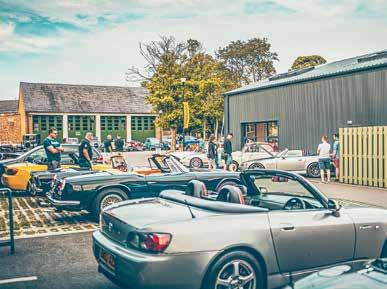
Saloon. The main event was the on-stage announcement of the finalists in this year’s Hagerty Concours de l’Ordinaire at the forthcoming Festival of the Unexceptional.
Selectors Keith Jones, Paul Cowland and I worked our way through the highlights on screen – cars that included a one-owner 2000 Nissan Micra, a less-than-base-spec VW Polo (the first owner had asked the dealer to remove the radio to save money), a concours-condition Bedford Rascal and, one of my personal favourites, a Fiat Multipla in off-green with electric blue seats. After we’d finished, one of the entrants came up to me, slightly concerned that his car hadn’t been mentioned. I checked the list: he was in. “YESS!” he exclaimed. “I’ve been trying to get in for years.”
Wednesday I Trip: 104.2 miles
It was late by the time I left Bicester, driving up an almost empty M40 and M6 to that evening’s destination: a motel near Stafford. The next morning I continued north, and the weather and traffic continued to play ball. I arrived in good time in Penrith, where I was to meet the rest of the Hagerty team that evening. I made the most of it by cleaning the 944 at a petrol station, before buying a new rear wiper blade – just in case.
Thursday I Trip: 236.5 miles
Early the next morning, I left the hotel and travelled a few miles further north to the wonderful 17th-century castle of Huttonin-the-Forest. Here, the cars for Hagerty’s
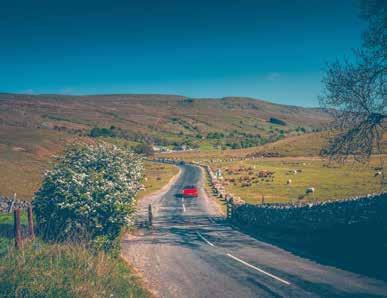



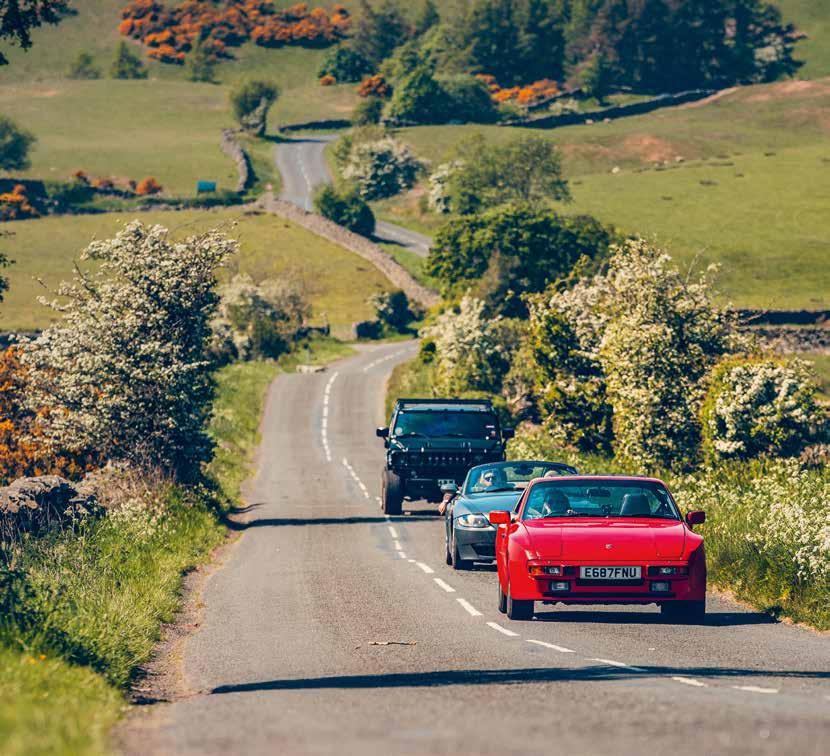
first HDC Goes North began to assemble.
The 944 was first, closely followed by Hagerty ambassador Charlotte Vowden’s MX-5, then an extraordinary collection of other cars. Will Bibb brought his yellow 2016 Morgan ARV6, Louis (‘Len’) Hendrickx his 2007 BMW E85 Z4 and Scott Pattenden his ‘stance’ BMW E46 320i Touring.
The group also included a 911 (997) Turbo, an Aston Martin V8 Vantage, a Jaguar F-type and an MG ZR – but most heads turned when Backfire Channel’s Brad Eldershaw thundered around the corner in his 2005 Hummer H2, wrapped in Backfire graphics with the 6.0-litre V8 tuned to 500bhp.
After a quick brief by Mark and Ged from Automotivation, who had planned the route, we set off in convoy behind Mark’s Alfa Romeo Giulia. I’ve loved these cars ever since I drove the Giulia GTAm at its UK launch, and his Veloce model in Misano Blue with Quadrifoglio alloys and carbon detailing looked superb. He kept the group nicely together – not too spaced out, nor too close to affect other traffic.
We wound our way south along lanes and through the village of Greystoke, then down the A592 towards the Lake District proper. As we reached the shores of the turquoise Ullswater the roads tightened into a series of undulating bends shaded by gently rustling trees. It was hard to keep my eyes on the road and not just stare at the rising mountains towering over the lake.
The 944’s front-mounted 2.5-litre inlinefour engine is wonderfully smooth, and with the rear transaxle giving almost perfect 50:50 weight distribution, the Porsche is exquisitely balanced and ideal for roads such as this. It’s not a fast car – my wife’s Volvo V40 daily driver would easily outperform it – but for this sort of work it is not about speed, it’s about smoothness and fun. I had removed the sunroof panel – something Porsche designed in, to allow an almost Targa-like experience – and I turned off the radio: nothing else was needed to perfect this sensory overload. At the end of Ullswater we bore left, then wound our way up the Kirkstone Pass, stopping at the top to regroup and marvel over the view. We then pushed on, down towards Windermere and across to our lunch stop at Pennington’s Distillery near Kendal. We pulled into the car park and
‘Its
views for miles allowed us to press hard
along the flat Tarmac’
THIS SPREAD
John and Charlotte Vowden joined in the first HDC Goes North tour, which incorporated insight into spirit distilling at Pennington’s.
climbed out, all buzzing. Brad added some comic relief by trying to cool his brakes with water – the Hummer’s tiny discs were already red hot, having attempted to calm the beast’s forward momentum through the twisty lanes, with limited success.
Mike Pennington gave us a superb tour of his family-run business. His focus is on not just quality, but also local sustainability – to the extent that he hand-picks juniper berries under a full moon for flavour, and sources as many ingredients as possible from the local area. The copper still that produces the majority of his award-winning gin, vodka and other spirits was a work of art, and we left with bags of his drinks to test later.
From Kendal we picked up the pace, taking the fast A65 across the M6 and down towards the village of Ingleton. Then we turned north and into the Yorkshire Dales National Park. Where the Lake District had been steep fells, tree-lined roads and, well, lakes, the Dales were harsher: moorland that even on a beautiful May day still gave out an ominous vibe. The roads, though, were superb: twisty, surprisingly well paved and beautifully undulating. My broad smile returned, and more than once I had to drop back just to give the car a little freedom on these wonderful bends.
Before long, we crested a hill to see the

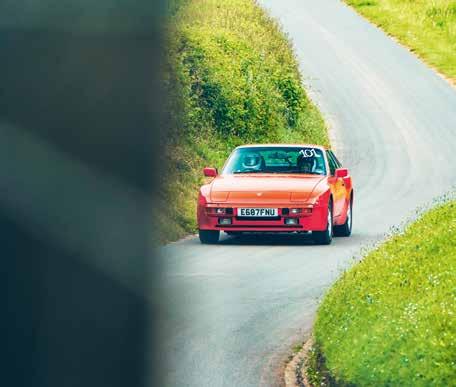
Ribblehead Viaduct off to our left, and the temptation to stop and look became too much. We pulled off to the side of the road and just stared and chatted. Brad’s brakes having cooled sufficiently again, we set off, staying on the B6255 past Snaizeholme before turning left up the A684 towards the Cotter Force waterfall.
Then, at Kirkby Stephen we turned left, climbing up onto the high moor and our final destination of the Tan Hill Inn, the highest pub in Britain. The approach road was mostly single-track, but its views for miles in every direction allowed us to press hard along the ironing-board-flat Tarmac, the snow poles and rock markers reminding us just how exposed this place is in anything but perfect weather. We arrived at the pub, where the temperature had dropped about ten degrees. We finished inside with a hearty dinner and yet more chatting.
I have taken part in many driving tours, both in the UK and abroad, and they’re always a bit of a lottery. Some seem to attract the same crowd every year, and as a newcomer it can be hard to feel at home in what feels like a reunion. Others are too packed – so much to do, so far to go, that you don’t get to enjoy the driving or the scenery.
The Hagerty tour hit the sweet spot, and
‘We channelled our RADwood vibes and went at a fair but safe pace to the top’
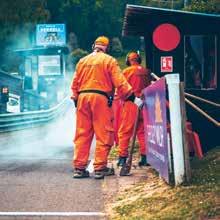
the mix of drivers, from young vloggers to older couples, made for a really vibrant day. It seems I wasn’t alone in thinking this: Scott Pattenden said: “I’ve attended a lot of car tours over the past decade; none has had such an eclectic mix of cars and characters as the Hagerty Drivers Club. We are all united by the same passion – driving.”
Friday I Trip: 537.0 miles
The following morning, having stayed in a pub near Richmond, I headed back along the A66. My aim was to drop into Penrith before driving south, my destination another hotel near Worcester. Tempted to head south on the A1, I almost cancelled my Penrith stop – but I decided to stick with the original plan. It was a decision I’ve rued. An hour later, static in a contraflow on the A66, I felt the impact as another car hit me from behind. It fortunately wasn’t a big shunt – the Volvo concerned had been travelling at walking speed – but the rear panel of my 944 was dented. Luckily, the nose of the offending car hit just below the rear screen, which was undamaged, but it was enough to make me ultra-wary of other drivers for the rest of the drive south. Typical Friday-night traffic on the M6 didn’t help, combined with the irritation of my sunroof that wouldn’t stay fixed down and had to be removed; the Targa effect was lovely for the Lakes, but not so good for a busy motorway. Eventually, bored of the buffeting, I pulled into a services; I started unscrewing trim panels and was instantly offered help by a pair of men on their way to another car show. Finally at 8:30pm, very tired, I pulled up at the hotel and joined the rest of the Hagerty crew for dinner.
Saturday I Trip: 800.9 miles
Shelsley Walsh Hill Climb isn’t just the world’s oldest motor sport venue – it’s also one of the most beautiful. This is partly due to its simplicity: 1000 yards in a sweeping left-hand curve up a very steep hill, with an S-bend in the middle. Get it wrong, and there’s either a wall to clip or a big drop down into the ferns that line the valley to the left. It’s one of my favourite places – and I am not alone, as the packed entry list for the 2025 Hagerty Hill Climb demonstrated. The mix of cars was superb, too, from a Frazer Nash Le Mans Replica to a Vauxhall Firenza, an ex-Per Eklund Lancia Delta
Integrale rally car to a pair of thundering GT40 replicas. My little 944 was in the final batch, and I was joined again by Charlotte Vowden, whose previous drive up the hill had been at the wheel of her beloved MGA in which she has toured around Scandinavia.
I decided not to push it; the Porsche had performed so well, I just wanted to complete the course and finish on a high. We put on a Wham! CD, channelled our RADwood vibes and went at a fair but safe pace to the top. Later, Charlie and I chatted on stage in the HDC enclosure, talking about the cars and our experiences over the past few days.
Saturday evening I Trip: 979.9 miles That evening, I was smiling all the way back down the M4, A34 and M27. At Southampton Airport 944 miles registered, and half an hour later I pulled onto my drive. This little car had been absolutely superb, despite the knocks it had received. It drew attention wherever it went, with small boys asking to video the pop-up headlights and people coming over to start conversations. It performed faultlessly,
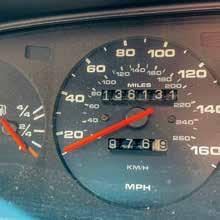
THIS
SPREAD The popular Hagerty Hill Climb at Shelsley Walsh is always an opportunity for HDC members to challenge their car as well as their driving skills.
was an absolute blast to drive and carried ridiculous amounts of junk around with ease. Most importantly, it’s affordable: the Hagerty Price Guide values the 944 Lux between £3800 (Good) and £15,000 (Concours). With its relatively high mileage, mine is worth around £10,500.
As you can probably tell, though, I have absolutely no intention of selling. Instead, I have a snagging list of little issues that will keep me occupied until the autumn, when I am planning a road trip around Europe with some friends. In the meantime, Hagerty is already sorting the damage claim so I can swiftly get back behind the wheel.
I’ve also come back refreshed from those three Hagerty gatherings, really proud of the effort that the events and Hagerty Drivers Club teams have put into creating truly special opportunities for our members.
Most importantly, these aren’t about having the ‘right’ car – just a shared love of driving and maybe a little infectious eccentricity. It’s a very, very inclusive place, and it bodes extremely well for the future. Will I do this again next year? Try to stop me.
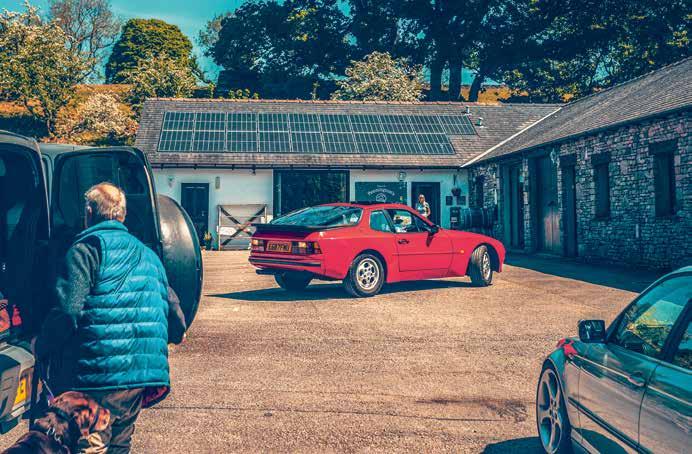

NORTHERN EXPOSURE
Experiencing the delights of top-down motoring on the HDC Goes North tour
Words Charlotte Vowden Photography Will Aron
HAGERTY
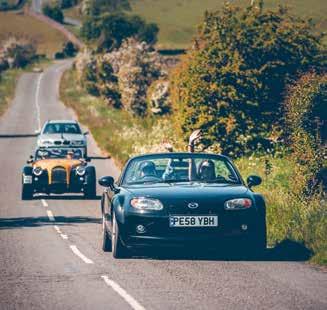

ROLLING BACK THE MAZDA’S FABRIC roof, I basked in the Mediterranean weather; there’s nothing more liberating than heading out for a top-down cruise. Any objective assessment will tell you that convertibles are silly – their tin-top sisters are more practical, much cheaper and less likely to go wrong – but on days when the mercury rises, owning a car that lets the sunshine in makes sense. Roadsters such as my MX-5 were built for the optimistic, for the posers and for those who want to get out there as soon as there’s a hint of blue sky.
Providing ample opportunity to feel the wind in my locks, the HDC Goes North tour was blessed with a sensational forecast. It began on a morning that was typical of Cumbria in the late spring – soothingly cool, not overly dewy and invigoratingly fresh – so I was grateful for the MX-5’s heater; giver of rosy cheeks and a toasty derrière. Assembling within the grounds of Hutton-in-the-Forest, HDC members made journeys from near and far to take part. We were a group of kindred spirits who, until that moment, had never met.
Getting to know new people can be a double-edged endeavour. The eagerness to make a good impression can make you nervous, and remembering names can be a daunting and often impossible task. Yet this group of strangers gelled easily, and we formed a fun and personable group. A good balance of age, automotive persuasion and gender made for a compelling convoy and
THIS SPREAD Wind in the hair for Charlotte on the HDC Goes North tour. Studying the gin offerings ready for a tipple after the driving was over.
talkative crew. There was YouTuber Brad Eldershaw in his Hummer H2, and racing driver Will Bibb in his Morgan ARV6, as well as veteran tour-goers and drivers who were new to the concept of travelling between pitstops en masse.
Riding out into the Lake District, then pushing on to the Yorkshire Dales, we found a rhythm that allowed for some to thunder, and others to bimble, along. The scenery was endlessly dramatic, and being in a drop-top meant I felt fully immersed in the surroundings. The itinerary included opportunities to pull over and soak up the views. A great sense of camaraderie was built up during those moments of shared awe. All of us were committed to the hereand-now nature of being on a HDC tour.
‘Being in a drop-top meant I felt fully immersed in the surroundings’
Free from the responsibility of logistics, I could settle back and enjoy the day. The gin I bought at Pennington’s Distillery would come later. Arriving at the Tan Hill Inn was, in a literal sense, the high point, but it marked what felt like a low. Saying goodbye in the bloom of a remarkable sunset, this was where we all parted ways.
Glowing as he made haste towards the horizon, Louis Hendrickx wore the results of the rookie error he made touring in his BMW Z4; he forgot to apply sunscreen. The burn that followed the shape of his shades was not, he said, a desired look – but rest assured my friend, we’ve all been there. Oh woe is us, the lucky ones, who have a car that’s built for cruising on heady sunny days.
TINKER MAN THE
From a Raleigh Runabout he built aged 12 to a ferocious 500bhp V10-powered monster, engineer and star of TV’s The Motorbike Show Allen Millyard is the ultimate man in a shed
Words Jim Moore Photography HCA Entertainment
TINKER MAN

BRITAIN IS A NATION OF TINKERERS.
People across the land in garages and sheds restoring, improving, rebuilding and even reinventing cars, motorcycles and pretty much anything with an engine. No individual typifies this obsession more than Allen Millyard, a qualified engineer whose passion for reimagining the mechanical is more ambitious than anyone’s in the UK. Maybe even the world.
Over the decades Allen has built more than 60 specials, the variety of which boggles the mind just as much as the engineering involved. His creations range from a home-made 180cc V-twin, built when aged just 15 using two Honda C90 motors, and various multi-cylinder Kawasakis both two and four-stroke, to an outrageous 2600cc V12 that mates two inline-six Z1300 motors in the bike’s original chassis. And then there’s the from-scratch 5000cc V-twin using cylinders from a Pratt & Whitney aero engine, dubbed the Flying Millyard.
“I got into bikes at a very young age,” Allen tells HDC. “When I was a lad in the 1970s we didn’t have much money, so my friends and I would venture out to the local tip to look for anything that we could fix up and use or sell on. It didn’t really matter what it was, as long as it was mechanical or electrical. Old TVs, lawnmowers, bikes... we’d see if it could be fixed.
“Sometimes we would find old mopeds or motorbikes,” he continues. “I remember finding a Honda CB72 and a Yamaha RD250, both discarded in hedges. We’d take them home and fix them up.”
In fact, Allen’s journey to specials builder extraordinaire may well have started with his very first bike: “I was about 12. I asked my dad if I could have a bike: he said no. But that didn’t stop me. I found a Raleigh Runabout at the tip. It didn’t have an engine, so I took one out of a lawnmower I’d ‘rescued’, and fitted that. My dad didn’t know about the bike for a month; when he found out, he let me keep it because I think he was impressed that I’d built it myself.”
That was just the start. Soon after, Allen shoehorned an Austin 850 motor into a BSA Bantam by cutting the frame in half, then fabricating it all back together again. His metalwork teacher was suitably impressed.
Allen’s incredible mechanical nous is
THIS SPREAD
What’s most impressive about this incredible engineer is his refreshing modesty. The V10 Viper bike is just one of his many creations.
largely self-taught – the fruit of an inquisitive mind and a desire to understand how things work. Training as an instrument maker, and later in mechanical engineering, honed those skills to a level most of us shed tinkerers can only dream of.
Rather than being ‘trial and error’, his builds usually result in ‘trial and success’ due to an acute awareness of what’s required. “I understand metals, their tensile strengths, and where they can and should be applied. I can also see in my mind’s eye how I want things to turn out,” he says modestly. “It’s just common sense, really.”
What’s remarkable about Allen’s many and varied projects is not only the sheer mechanical brilliance required to, for example, turn an already complicated 1300cc inline-six into a V12, then mounting it back into the chassis intended for the smaller engine. It’s also the fact that his completed work looks as if it’s been carried out by the bike’s original manufacturer. That level of specials building takes real skill. So much so, his work’s been recognised
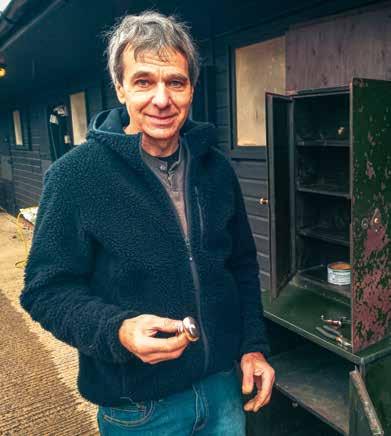
HAGERTY DRIVERS CLUB

by the strictest of automotive judges, at the Salon Privé concours. “The car people seem to love what I do,” he says with deserved pride. “I’ve won awards for my Kawasakis, the Flying Millyard and many other builds.”
Don’t get the impression that Allen does this for the glory, though. Oh no. He builds his bikes to ride, and they all get outings whenever possible. In fact, one of his Kawasakis – a 415cc five-cylinder twostroke based around what was a KH250 triple – has covered 25,000-plus miles. “As my daily commuter, it never missed a beat.”
His most extraordinary build, however, became metal after a trip to the Goodwood Festival of Speed in 2004. “I was looking forward to seeing the Dodge Tomahawk V10 bike. It was a true one-off, with a 500bhp Viper engine,” he recalls. “But it was such a let-down. It just wobbled up the hill at 45mph. My son said: ‘You should build one, dad – it’d be much better.’ So I did…”
That Goodwood encounter inspired an eBay search for an engine. “I found a Viper V10 for £5500, but that was big chunk of money so it sat in the garage for five years until I could finance the rest of the build.”
It was worth the wait, though. What Allen created is simply staggering. As with the Tomahawk, his Viper produces 500bhp and a tyre-shredding 525lb ft. But unlike its show-machine inspiration, Allen’s bike
‘Allen has built 60-plus specials, the variety of which boggles the mind’
is road registered and sailed through SVA (Single Vehicle Approval).
Its power and torque figures massively exceed those of any other production bike – or short-circuit race machine, including in MotoGP, for that matter – so in building the Viper Allen has created the world’s most powerful production bike by a considerable margin. And its performance is ferocious.
“We speed tested it at Bruntingthorpe Proving Ground,” he says. “It topped 207mph, and it would have gone faster if we’d had more space or better aerodynamics. It’s unfaired, and at that speed there is so much windblast it becomes hard to control. The guy riding it, Bruce Dunn from MCN, couldn’t roll the throttle shut because of the force of the wind – it’s pulling 2G at 200mph – so he
had to physically remove his hand from the grip before grabbing the front brake.”
And mighty stoppers they are, too. “It’s got two six-pot Pretech billet calipers up front, and a Metro 6R4 disc at the rear. I needed the calipers to be sizable enough to work with a big disc – the front unit is a 400mm ventilated AP component.”
The suspension is equally ‘belt and braces’. No motorcycle on the market had forks strong enough, so he built his own using 75mm JCB hydraulic rams, converted Vauxhall Carlton dampers and springs from specialist Hagon. The rear is held in check by two Yamaha YZF-R1 shocks, resprung by racing expert K-Tec. Indeed, Allen’s Viper is BIG in every respect. And as you might expect, it too met the approval of discerning eyes at Salon Privé, winning its category.
High praise, incredible engineering and bonkers performance aside, what’s most refreshing about Allen Millyard is his modesty. You might expect a man who has built the world’s most outrageous motorcycle to be as bombastic and in-yaface as the bike itself, yet he’s anything but.
“For me, the greatest challenge is building the best bikes I can in my garage with only basic tools. That’s it, really.”
No one else even comes close…
Follow Allen on YouTube or catch him on ITV4’s The Motorbike Show with Henry Cole.



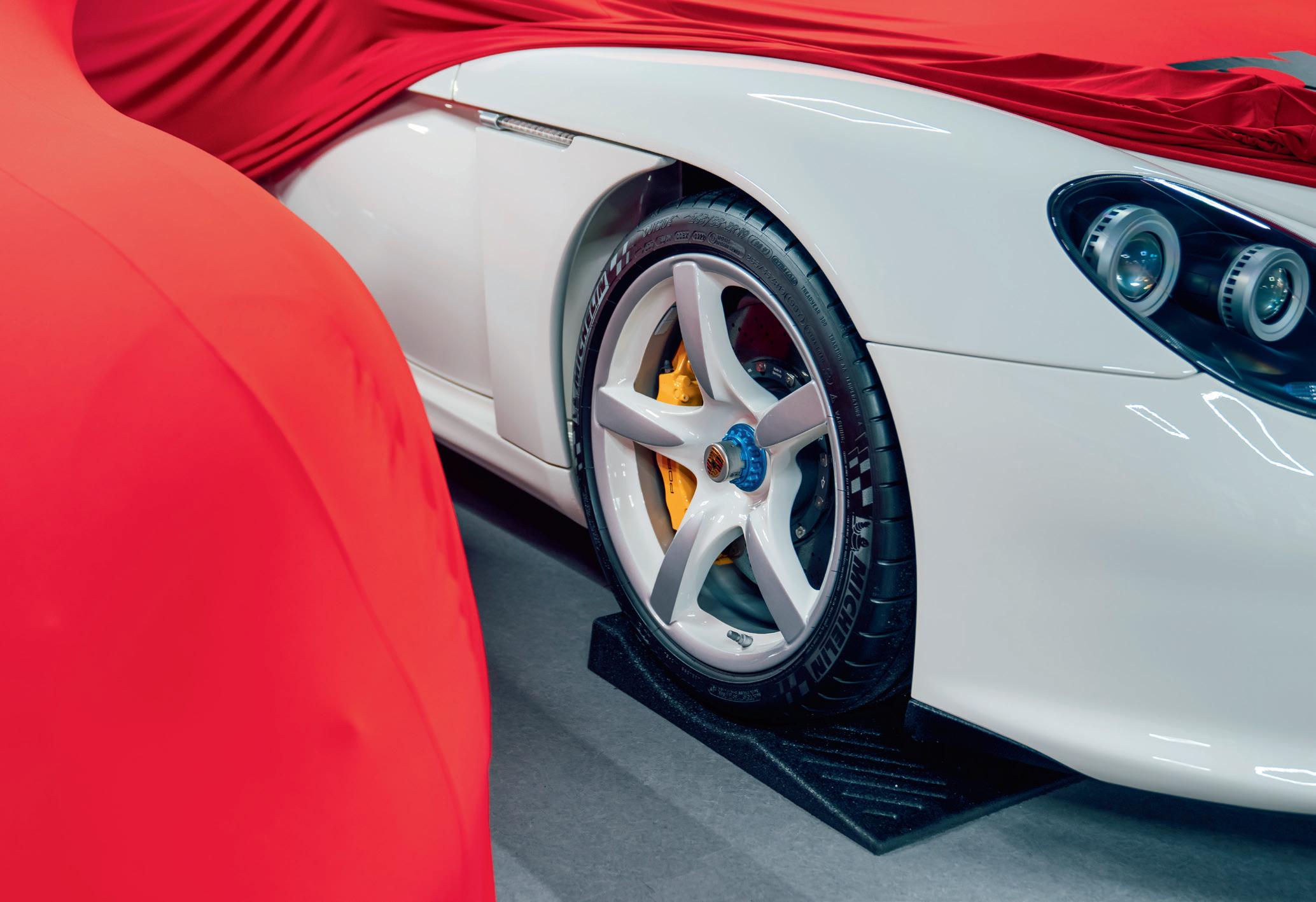

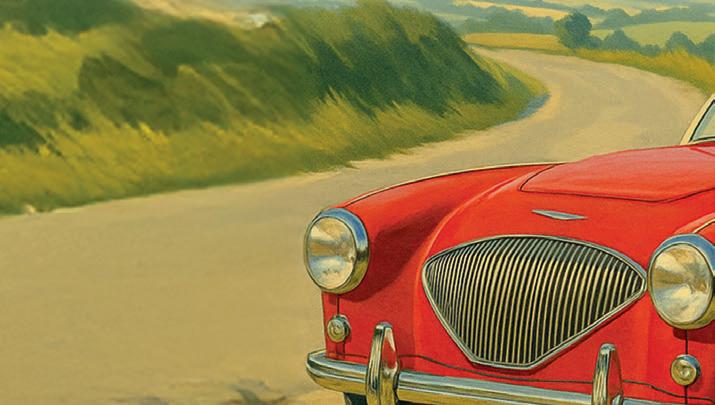










EVENTS 2025
Places to go, things to do!
We’ve got a great season of Hagerty events in store this summer. Grab your car keys, and come and join us
Hagerty Festival of the Unexceptional
Saturday July 26, 7:30am-5:00pm, Grimsthorpe Castle, Bourne, PE10 0LY
A classic show like no other. Are you ready to celebrate automotive quirks from the 1970s to the 2000s? This year sees the cars eligible for the Concours de L’Ordinaire cross into the 21st century, because models from 1970 to 2000 can now apply.
Now’s the perfect time to find that lowmileage Daewoo Tacuma or Fiat Multipla. Or what about a slice of Unexceptional Americana? Chrysler’s retro PT Cruiser also landed in 2000. There’s a huge variety of cars to choose from that 30-year period, as FOTU has welcomed everything from Austins to Yugos over the past 11 years.
On the live stage, Jonny Smith and Richard Porter – Smith & Sniff – return with their unique brand of motoring humour. And if you’re looking to sell an
unexceptional car, book a space in the FOTU Cars for Sale area for £35 (car and driver).
General tickets start at £25 per person, and HDC members get 25 percent off; you can find the discount code in the members’ portal. Kids under 15 go free.
RADwood UK ’25
Saturday August 23, from 11:00am, Bicester Motion, OX26 5HA
RADwood blends the best of 1980s and ’90s pop culture with the iconic cars and bikes of two totally awesome decades – from the Lamborghini Countach and Honda NSX through to beloved modern classics such as the Mazda MX-5 and Toyota MR2.
The criteria encouraged for the vehicles is simple. They should have been registered in the ’80s or ’90s, and loosely fit with the ‘greed is good’ theme that permeated those decades, when drivers aspired to own hot hatches, sports saloons, sports and luxury cars, supercars, 4x4s and superbikes. Authenticity and originality count for much, but period-correct mods are welcomed, too. RADwood 2025 will also have a Rally

Paddock, featuring some of the era’s bestloved rally cars. They’ll be strutting their stuff with demonstration runs on track.
Don’t forget, RADwood is as much about culture as it is the cars – from shoulder pads to shell suits, grunge to Britpop, it’s celebrated. You’re more than welcome to cosplay, and you might even find yourself walking away with the Best Dressed award. Gates open at 11am. General tickets start at £25, or £30 for a Show and Shine ticket to display your car or bike. Under-15s go free of charge. HDC members get 25 percent off; see the members’ portal for the discount code. You also get entry to the exclusive members’ area at the Hagerty Clubhouse, with exciting food and drink options, a fully licensed bar, classic and retro video games, and much, much more.
Hagerty Hangouts
Second Tuesday of the month JulySeptember, 6:00pm-10:00pm, Hagerty Clubhouse, Bicester Motion, OX27 8FZ Limited to just a small number of vehicles, these evenings offer the perfect opportunity to chat with fellow petrolheads – with a Coke in one hand and loaded fries in the other. HDC members can get entry into the Hangouts for £15 per car; one ticket covers the vehicle and all passengers, and the driver gets a complimentary drink and burger. Inside the Clubhouse you will find a fully licensed bar (boasting some great 0% beers) alongside the free-to-play pool table and racing simulator. Hungry? Our friends from Feast will be back, serving up delicious burgers and loaded fries. Look out for special events on stage at some of our meets. We’ll also pick a car of the night at each Hangout, with special prizes for the winners.



Bespoke vehicle transport for Veteran, Vintage, Classic and Super Cars
Bespoke vehicle transport for Veteran, Vintage, Classic and Super Cars
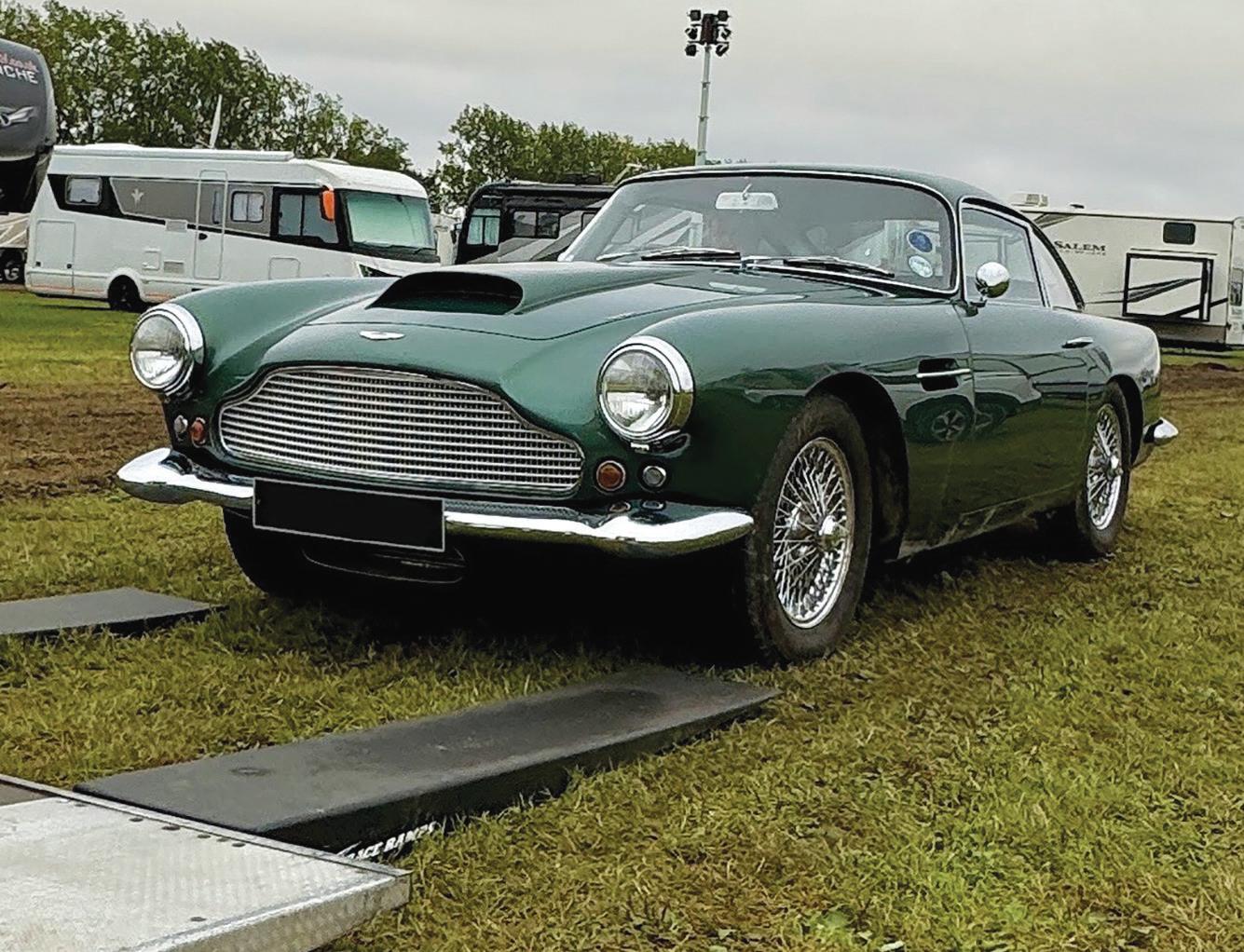

Single or multi vehicle transport
Single or multi vehicle transport
Race and rally support
Race and rally support
UK, European and Worldwide deliveries
UK, European and Worldwide deliveries
Vehicle hire for filming
Vehicle hire for filming
Concours car transport
Concours car transport
Customs clearance
Customs clearance
Vehicle storage
Vehicle storage
Call us now to see how we can help you
Call us now to see how we can help you
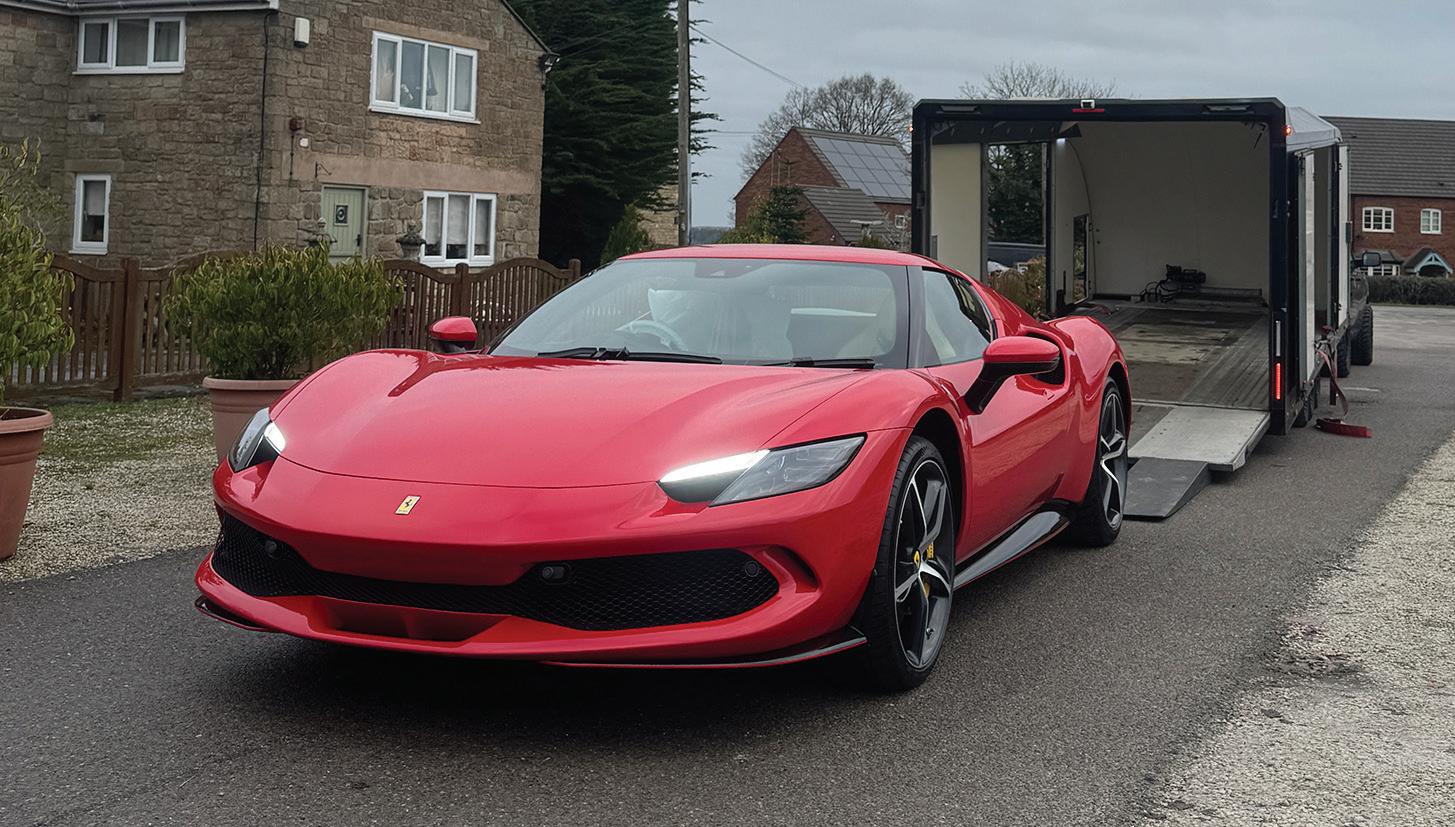
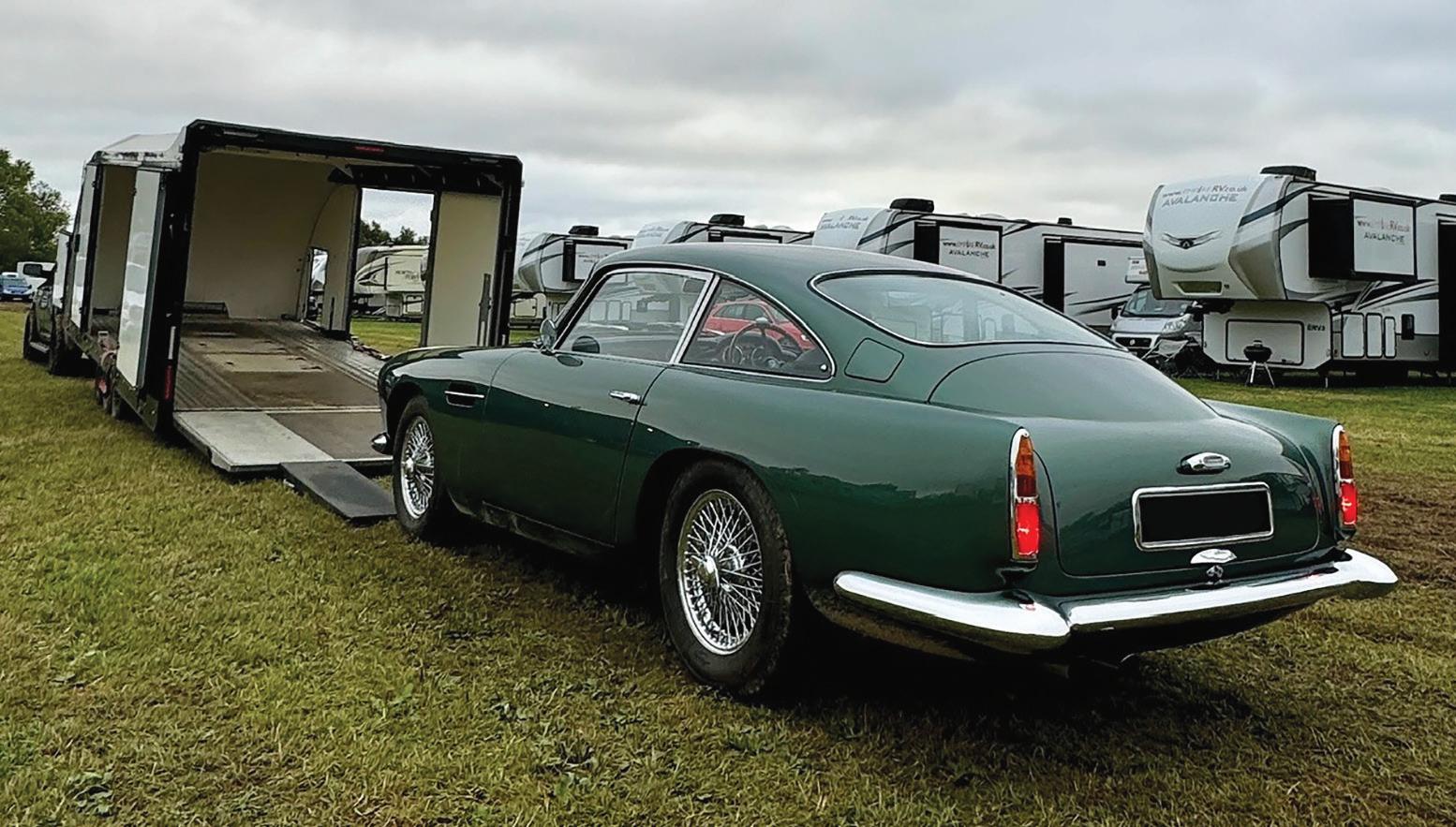
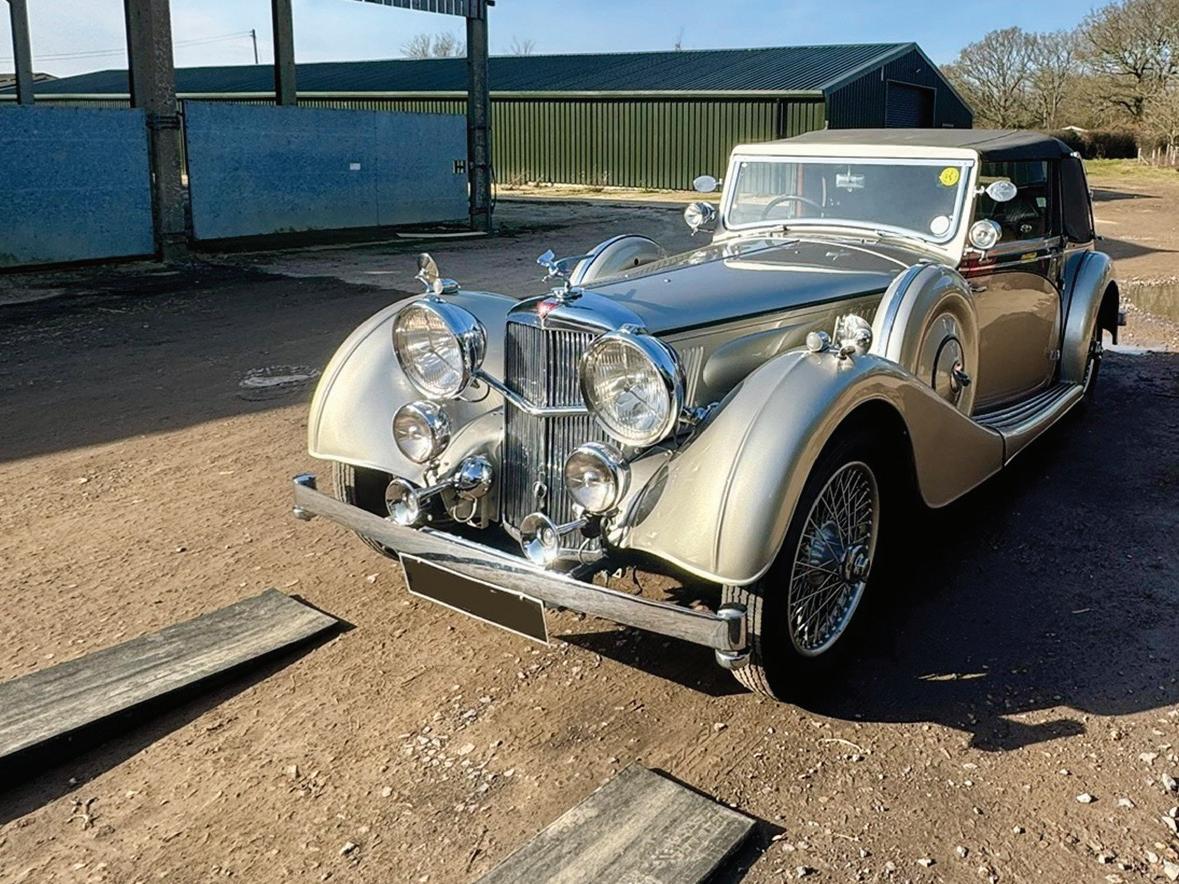
EVENTS DIARY
Just get in your car and drive...
Classic vehicles are meant to be used. As if you need an excuse, here are some great destinations...
JULY
Goodwood Festival of Speed
July 10-13
Goodwood, West Sussex
The world’s greatest automotive garden party, with manufacturer stands, rally stage, hillclimb, classic auction and much more. goodwood.com
Legends of Brands Hatch Super Prix
July 12-13
Brands Hatch, Kent
Sports cars, single-seaters and tin-tops from the 1960s, ’70s and ’80s, courtesy of the HSCC. hscc.org.uk/event/brandshatch-gp-3
BMF Connected
July 12-13
Mallory Park, Leicestershire
New event to celebrate British Motorcyclists Federation at 65. Displays, talks, demos, trails ’n’ trials, competitions, workshops, films, clubs, traders and more. britishmotorcyclists.co.uk/ events/bmf-connected
BMC & Leyland Show
July 13, British Motor Museum
Gaydon, Warwickshire
Hundreds of vehicles from BMC, British Leyland and Rover Group at the must-see museum. britishmotormuseum.co.uk/ whats-on/bmc-leyland-show
Scottish Festival of Motoring
July 20
Royal Highland Centre, Edinburgh Car, truck and motorcycle indoor displays plus live stunt shows, music, demos, drifting and clubs. festivalofmotoring.co.uk
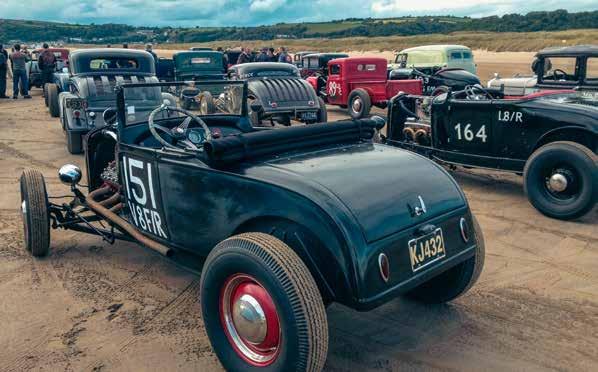
Yorkshire Elegance
July 22-24
Grantley Hall, North Yorkshire
Prestigious car event spans 140 years of motoring. New-for2025 concours categories for Edwardian cars and restomods. yorkshireelegance.com
Hagerty Festival of the Unexceptional
July 26
Grimsthorpe Castle, Lincs
See previous page for details. HDC discounted rates. hagerty.co.uk
Bromley Pageant of Motoring
July 27
South of England Showground, West Sussex
Long-running grassroots event is back after a short absence, at a new venue. Expect classic cars, commercial vehicles, steam engines and bikes. bromleypageant.com
AUGUST
Oldtimer-Grand Prix
August 1-3
Nürburgring, Germany
Old-school racing with Historic Formula 1, Group C, GP cars of the 1930s-60s plus DRM and DTM of the 1990s and 2000s. oldtimergrandprix.com
Monterey Car Week
August 8-17
Monterey, California, US
Includes racing at Laguna Seca, hypercars on Broadway, The Quail and Pebble Beach. seemonterey.com/events/ sporting/concours
’Normous Newark Autojumble
August 10
Newark Showgrounds, Notts
Hundreds of stalls selling old car and bike bits. One of UK’s biggest. newarkautojumble.co.uk
Silverstone Festival
August 22-24
Silverstone, Northants
Huge grids of Historic cars, open paddocks and 75 years of F1. silverstone.co.uk/events/ silverstone-festival
RADwood
August 23
Bicester Motion, Oxfordshire See previous page for details. HDC discounted rates. hagerty.co.uk
Salon Privé
August 27-30
Blenheim Palace, Oxfordshire Classy concours followed by a weekend of supercars. salonpriveconcours.com
SEPTEMBER
Scottish Malts
September 1-5
Gleneagles, Perthshire HERO’s famous Historic rally. hero-era.com
‘Vintage Hot Rod Association’s pre-1949 races at the original home of speed records’
Concours of Elegance
September 5-7
Hampton Court Palace, Middx High-class concours and club displays at Henry VIII’s palace. concoursofelegance.co.uk
Beaulieu International Autojumble
September 6-7
National Motor Museum, Hants Biggest outdoor sale of car and bike parts outside of the US. beaulieu.co.uk/events/ international-autojumble
The John Haynes Classic
September 7
Haynes Motor Museum, Sparkford, Somerset
New car and bike event marking revamped museum’s 40th year. johnhaynesclassic.co.uk
Goodwood Revival
September 12-14
Goodwood, West Sussex
World’s greatest Historic motor sport festival, with racing, stands, period displays and much more. goodwood.com
Pendine Sands Hot Rod Races
September 20-21
Pendine, Carmarthenshire
Vintage Hot Rod Association’s pre-1949 races at original home of speed records. Free to watch. vhra.co.uk
HAGERTY HANGOUTS
July 8, August 12, September 9
Hagerty Clubhouse, Bicester Motion, Oxfordshire
See previous page for details. hagerty.co.uk

PRODUCTS AND BOOKS
Cool stuff
Round-up of the latest automotive-inspired products and books
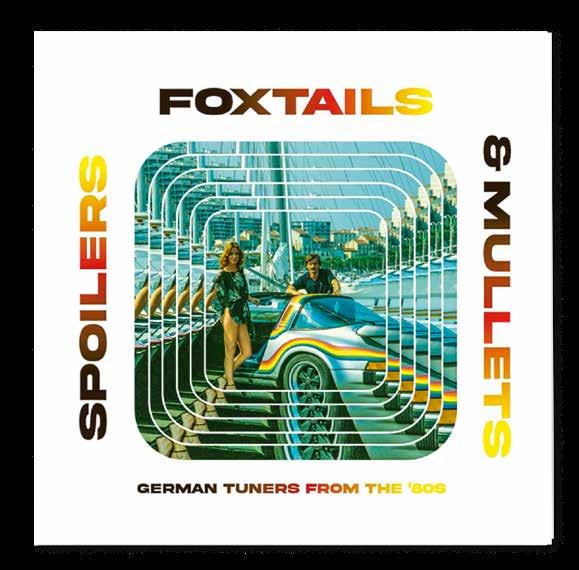
Spoilers, Foxtails & Mullets
If you’re a RADwood fan, and a lover of 1980s excess, this book is for you. Christopher Butt’s beautifully presented 336-page love letter to German tuning firms of the ’70s, ’80s and ’90s is a must for those of the Max Power persuasion. It’s not just about the ever-increasingly mad creations from Koenig, AMG, Ruf, Alpina et al, but the human stories behind them. Almost makes us want to grow a mullet. It costs €120. https://waft.be
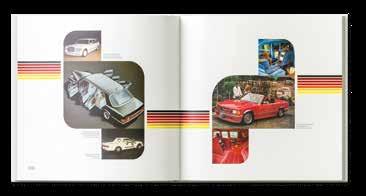

OttOmobile Toyota Sprinter Trueno AE86
The AE86 excelled in racing and rallying, but its hero status was confirmed by its presence in anime series Initial D. This 1:18-scale model pays tribute, and costs €69.90. https://otto-models.com/en

Porsche Martini Racing psychedelic barrel seat
Perfect for your Porsche-themed car cave, this funky barrel seat pays tribute to the Martini ‘hippie’ livery used on the 1970s Porsche 917 endurance car. It costs £360. https://shop.porsche.com
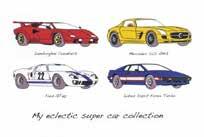
Carvolution Your Life In Cars artwork
These hand-made artworks can chart your life in cars as a tribute to the memories made on four wheels. They start from £165 for one car, although you can have up to 80. www.yourlifeincars.com


Scalextric Ken Miles Triple Pack
This three-car pack pays tribute to the Brummie who blasted the Ford GT40 to victory at the 1966 Le Mans 24 Hours – well, he should have done, were it not for pesky politics... It features three cars that chart the narrative of the talented driver’s racing life, with a Ford GT40 MkII, Shelby GT350 and Shelby Cobra. Limited to 1500 units, it’s available to pre-order at £159.99. https://uk.scalextric.com
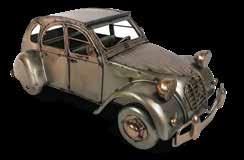
Citroën Retro 2CV
With Citroën anticipated to be bringing out a new EV version of the 2CV, this hand-crafted model pays tribute to the icon’s mechanical honesty. Measuring 32cm long, it costs €52. https://lifestyle.citroen.com
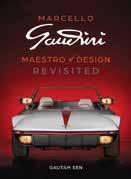
Marcello Gandini: Maestro of Design
Recently revised, this $165, 624-page tribute to possibly the most influential car designer ever covers everything from the Miura and Countach to Gandini’s much wider work. www.daltonwatson.com
SUSTAINABLE FUELS
Greener future for classics
British fuel specialist Coryton’s Suresh Nahar on new sustainable plantbased petrol for old cars
Words Charlotte Vowden
Photography Coryton
Why do you care about classic cars?
I’ve always been a car nut. They make you feel something, they are more than just machines. For a lot of people, it’s about the theatre and the drama. I love hearing the engine scream, and that presents a dynamic to preserve. Once you realise the impact sustainable fuels could have on the environment, and how quickly they could be integrated into our existing infrastructure, it’s hard not to support the push.
So, what is a sustainable fuel?
Sustainable fuel is an umbrella term used to describe any liquid fuel that’s made from renewable materials instead of fossil fuels. There are different types. Synthetic and e-fuels are created from recycled hydrogen and carbon dioxide. Coryton’s SUSTAIN Classic is a biofuel that’s manufactured from agricultural waste and by-products, such as straw, as well as crops that would not have made it into the food chain.
Is it actually better for the planet?
It’s a common myth that sustainable fuel is no better for the environment than fossil fuel because it still releases CO2 at the tailpipe. In reality, sustainable fuels are sustainable because they recycle carbon that is already in the atmosphere, by
capturing or absorbing it during the production process. For example, plants absorb CO2 when they grow. When they are turned into fuel and burnt, the same carbon is released back into the atmosphere for plants to reabsorb. Burning fossil fuel, which has held its carbon underground for millions of years, releases additional CO2 into the atmosphere. When compared to fossil fuels, the Government’s own statistics show sustainable fuel could reduce emissions by more than 80 percent.
Why isn’t the Government backing it?
SUSTAIN asked over 2000 motorists whose responsibility it is to bring sustainable solutions to the public’s attention, and 52 percent felt it lay with elected officials. When asked to define what a sustainable fuel was, only 44 percent were able to answer correctly. Almost a third said they felt they lacked knowledge on the subject, 16 percent were sceptical about it and 13 percent were confused. Clearly there is a lack of knowledge and understanding – and the same likely goes for many MPs. We’d like to see more Government support, as there has been for other green initiatives, but there cannot be a sustainable future unless all options are put on the table.
There is no such thing as a silver-bullet solution. Sustainable liquid fuels aren’t the answer to everything, hydrogen isn’t the answer to everything, electrification isn’t the answer to everything. We need to accept that we have to use all the available technologies to help achieve our goals.
Can we trust that a fuel is sustainable?
To be classed as such, a sustainable fuel must comply with criteria around land use, water footprint, biodiversity and economics. As a relatively new sector, the legislation is evolving. The Historic & Classic Vehicles Alliance (HCVA) is crafting its own rating system for sustainable fuels, to offer reassurance to customers on the products they buy.
How much does it cost?
Currently, you can expect to pay around three times more than regular fuel – a similar price to race fuel. If demand increases, costs will reduce, but scalability requires support from policy. We can’t predict if and when price parity will be achievable, but it’s something we’re working towards.

ABOVE SUSTAIN Classic has been specially formulated for classic cars, says Coryton brand manager Suresh.

Where can I get it?
SUSTAIN already has a fuel pump at Bicester Motion – it’s the UK’s first, and we would love to get sustainable fuel onto every garage forecourt in the country. For SUSTAIN, the next phase is to get our retail network up and running, so that drivers across the country can purchase fuel at the pump, pick it up at a collection point or order it for home delivery.
Motor sport, Historic racing and classic cars are the early adoption markets, but we’d like to see everyone using the fuel. We’ve had people with 2005 Ford Fiestas turning up because they share our vision.
I love the smell of a petrol station…
We definitely don’t advocate smelling SUSTAIN, but depending on the grade it can have a slightly sweeter fragrance, which some have described as pleasant.
Is sustainable fuel available overseas?
Technically, fuels such as E10 – a blend of regular unleaded gasoline that uses up to ten percent renewable ethanol – include a small percentage of sustainable fuel. So, if you are talking in those terms, many countries are using it.
If we are looking at solutions containing a higher content of sustainable fuels, there are a few examples. Repsol offers a bio-based gasoline at some garage pumps in Spain, while HVO (Hydrotreated Vegetable Oil) is quite widespread in countries such as Germany. The latter is made using 100 percent renewable raw material – in this case, used cooking oil – and it can reduce CO2 emissions from diesel vehicles by up to 90 percent compared to standard diesel fuel. However, it should be noted that HVO is not suitable for all vehicles.
‘If your passion is keeping pistons going up and down, then get on board’
Does SUSTAIN Classic work in all historic vehicles?
If the car has traditionally run on standard unleaded petrol – EN 228 – then the simple answer is yes. We also have special fuels for vintage vehicles. If you are racing, you should always re-map/tune your vehicle accordingly.
Does it have a shelf life?
SUSTAIN Classic fuels are formulated with additives that stabilise and extend the life of the fuel, as well as help protect the engines and fuel systems. It also contains very little ethanol, which is a major cause of corrosion.
What kind of mpg can I expect?
We need to gather more data. Anecdotally, we’ve had positive feedback from a variety of classic owners who reported comparable, and in some cases better, results.
Are EVs a greener solution?
These two solutions can work together to help reduce emissions. It will take time to transfer the entire fleet to electric vehicles and to create the infrastructure needed, so it makes sense to tackle the greenhouse gases emitted from the existing fleet of cars on our roads in the meantime. We also need to remember that by focusing on zero tailpipe emissions as the goal, we are ignoring any greenhouse gases created at any part of the process other than the driving. For example, the UK’s electricity isn’t yet made from fully renewable energy. Although the grid does currently have a reasonable proportion of renewable energy (roughly 40 percent), we still rely heavily on gas-fired power stations, so typical electricity generation is not CO2 free.
How do you feel about the future?
It’s easy to become despondent, but we have to see this as the next stage in the journey of motoring. Ultimately, if we don’t want the internal-combustion engine to die, then we need to make efforts in order to prevent that. If your passion is keeping pistons going up and down, then get on board.
What does that mean?
Try the fuel, then talk about the fuel with your friends, peers or local MP. Everything we can do to raise the profile of this solution, and question the current singlesolution focus on EVs, will help. For more info, visit https://sustain-fuels.com.

Smoke signals
Don’t ignore the warning signs coming from your classic vehicle’s tailpipe
AS THE DAUGHTER OF A MECHANIC
I have long learned to raise the alarm when I suspect something isn’t quite right with my car. It’s canny to be cautious; catch a problem early and you’re more likely to avoid a costly repair. A little knowledge and observation can point you in the right direction before calling in an expert in overalls, so to help you diagnose the warning signs coming from your classic’s tailpipe, award-winning mechanic Katie Bushell offers her advice.
WHITE SMOKE
Not to be confused with condensation, which occurs when moisture collects in the exhaust pipe, white smoke is a sign of burning coolant. If it disappears quickly, it’s likely to be steam – but if it lingers, you may have bigger problems.
Diagnosis and what to do
Check your coolant level. If it’s dropping, it’s likely being burnt off. Try not to drive the car too much – but if you need to, keep checking that level. The last thing you need is an overheated engine. Also do a ‘sniff test’ using a combustion-leak detector kit; this contains dyed fluid that changes colour should there be any exhaust gases in your coolant.
The biggest cause for burning coolant is a failed head gasket. This allows coolant to leak into the combustion chamber and burn with the air-fuel mixture, producing white smoke. A cracked engine block or cylinder head can cause similar issues. If air becomes trapped in the cooling system, it can disrupt the flow, cause localised overheating and force coolant into places it shouldn’t be, such as the combustion chamber.
If you don’t address the leak, you risk the engine overheating and potentially seizing. Overheating can also warp the cylinder head, giving you even more problems when you come to change the head gasket.
BLACK SMOKE
This means your engine is unhappy – and because it’s a sign of unburnt fuel, your fuel economy will be dreadful, too. To run efficiently, engines need a specific air-fuel ratio. If the mix is too rich, the excess fuel
in the combustion chamber will manifest as black tailpipe smoke.
Diagnosis and what to do
The most common cause for black smoke is a fuel-system fault. It could be something simple such as a clogged air filter, a carb in need of a service or stuck injectors.
Ignoring the problem could cause other issues, such as spark plugs fouling with fuel, resulting in poor performance. Really bad over-fuelling can even burn out a valve.
My Audi 100 suffered from this problem when I got it. A faulty coolant-temperature sensor had caused the car to think it was cold all the time, so it was over-fuelling to compensate in an attempt to warm itself up. It damaged the catalytic converter, which has since been (legally) taken off, and a new sensor only cost a couple of quid.
BLUE SMOKE
A worn engine will burn oil, giving a bluish tinge and acrid smell to the smoke. High oil consumption is confirmation of this.
Diagnosis and what to do
Act fast: stop driving and check your oil level. You might risk running out completely and seizing the engine. In diesels, you could even see ‘diesel runaway’ – the engine using the oil as its fuel rather than actual diesel. Simply turning the ignition off won’t stop this; you must stall the engine or cut off its air supply instead.
Burning oil is most often caused by worn piston rings or valve seals. At worst, you’ll run out of oil and seize your engine, but a low lubricant level could also cause early wear to other components. A cat in a post1990 car could be damaged internally. As these are made up of precious metals such as platinum, they aren’t cheap to replace.
Words of encouragement
The great thing about most classic cars is that they’re usually pretty simple to work on. So many women have come up to me and told me they love seeing what I get up to, and they would love to try it themselves but they lack confidence. It’s all just nuts and bolts, which is why I always encourage people to have a go. Anyone can do it – and once you get familiar with the ins and outs of your car, you will gain the confidence that it will make it anywhere.
EXHAUST SMOKE
Words Charlotte Vowden
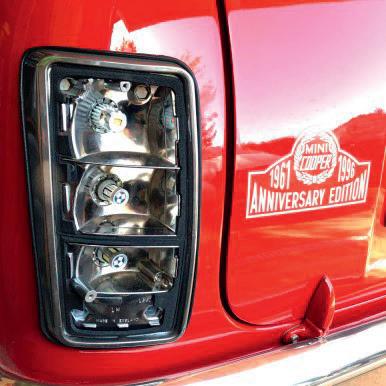
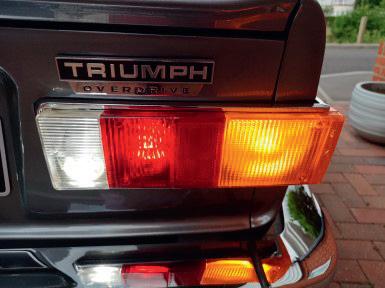
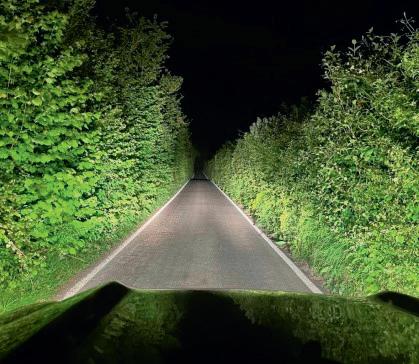
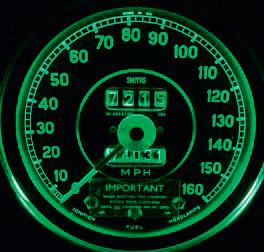

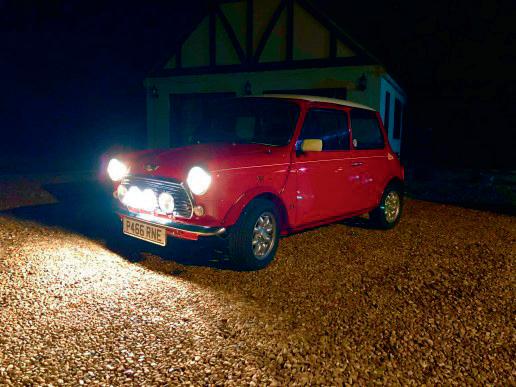
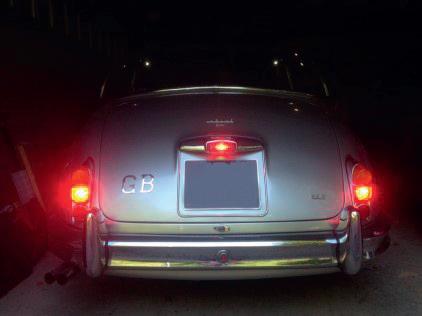
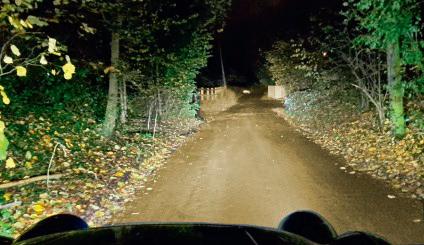
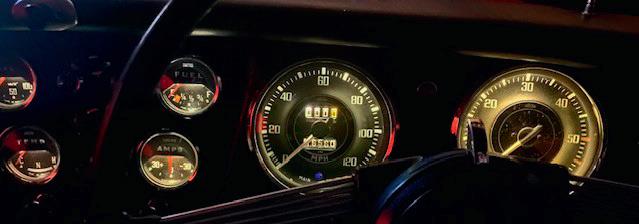
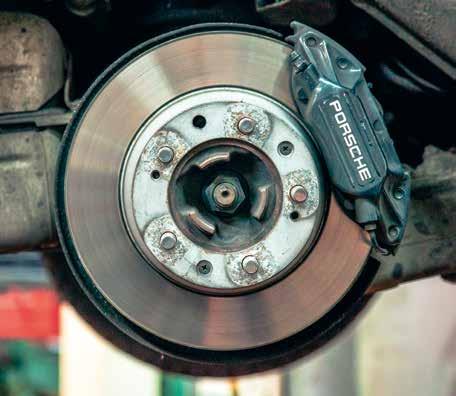
DRIVING TIPS
How to take control of braking in a classic car
No ABS? No problem! You just need to master the cadence technique
HISTORIC VEHICLES FIT INTO MANY categories: the good, the bad and the downright unusual. But I find older cars have a huge fascination that is difficult to ignore, and their timeless appeal and design presence are things to be treasured. Many have their cult followings, and its these owners who keep the classic car flame alight and shining bright.
Yet as we know, driving classics is often a very different proposition from driving
our usual daily transport. Often, older cars require an alternative approach to getting the best out of them and enjoying the thrill of using their performance potential in a fun and engaging way. However, drivers should be aware that some machinery has certain safety drawbacks when making serious progress. Especially so if you are suddenly faced with an unexpected situation that demands excess speed be wiped off immediately. An emergency stop, if you will.
One safety area where technology has marched on is the braking efficiency of modern cars against older counterparts. By this, I mean the ABS that features on all new models but is sadly missing on many classics. Basically, anti-lock prevents the road wheels from ‘locking up’ under maximum braking, and thereby retains directional and steering control (because the wheels must revolve before they can steer a car). To get the best out of using ABS, all a driver has to do is ‘smash’ the brake pedal down as hard as possible, and not reduce the pressure until you need to.
However, it is a whole new ball game when drivers don’t have the incredible safety features of ABS to fall back on, and are suddenly faced with a life-threatening situation on the road that requires emergency braking. What is one to do in
such hazardous circumstances? Is there a way of braking that simulates the effectiveness of ABS?
In bygone days when the system wasn’t commonly used, on older, pre-1966 classics for example, there was a technique used by advanced police drivers and those who raced cars, called cadence braking. While it isn’t a perfect response, with practiced brain/foot co-ordination it can enhance straight-line stopping performance and will provide the best way to achieve at least some measure of control in a ‘brake and turn’ emergency manoeuvre. It will also improve control and safety should you ever lock your wheels through heavy braking on dry or wet roads.
Cadence braking is best described as a rapid, continuous and rhythmic pumpand-release action on the pedal – a sort of do-it-yourself anti-lock system. In the same way that ABS automatically releases your brakes many times a second in order to let your wheels turn enough to preserve steering control, the cadence technique allows you to steer to some degree (although not much) while simultaneously losing speed. The method is not as effective or as easy to use as ABS, but the violent on-off pumping action, if it is performed properly, can work surprisingly well. Ultimately, cadence braking maintains retardation and some steering control.
Yes, it is an antiquated way of dealing with a braking emergency – but if you need to steer as well, it is all you have when driving older classics. If, for example, you just smash the pedal hard and lock the road wheels, you will simply slide into the very thing you were braking hard to avoid.
When covering serious ground, balance your speed to match your visual scanning expertise and the prevailing conditions, and risk manage your progress, at all times. Be safe. Happy classic motoring.

PAUL RIPLEY Award-winning drivingsafety expert shares his knowledge from the high-performance training industry. ALAMY
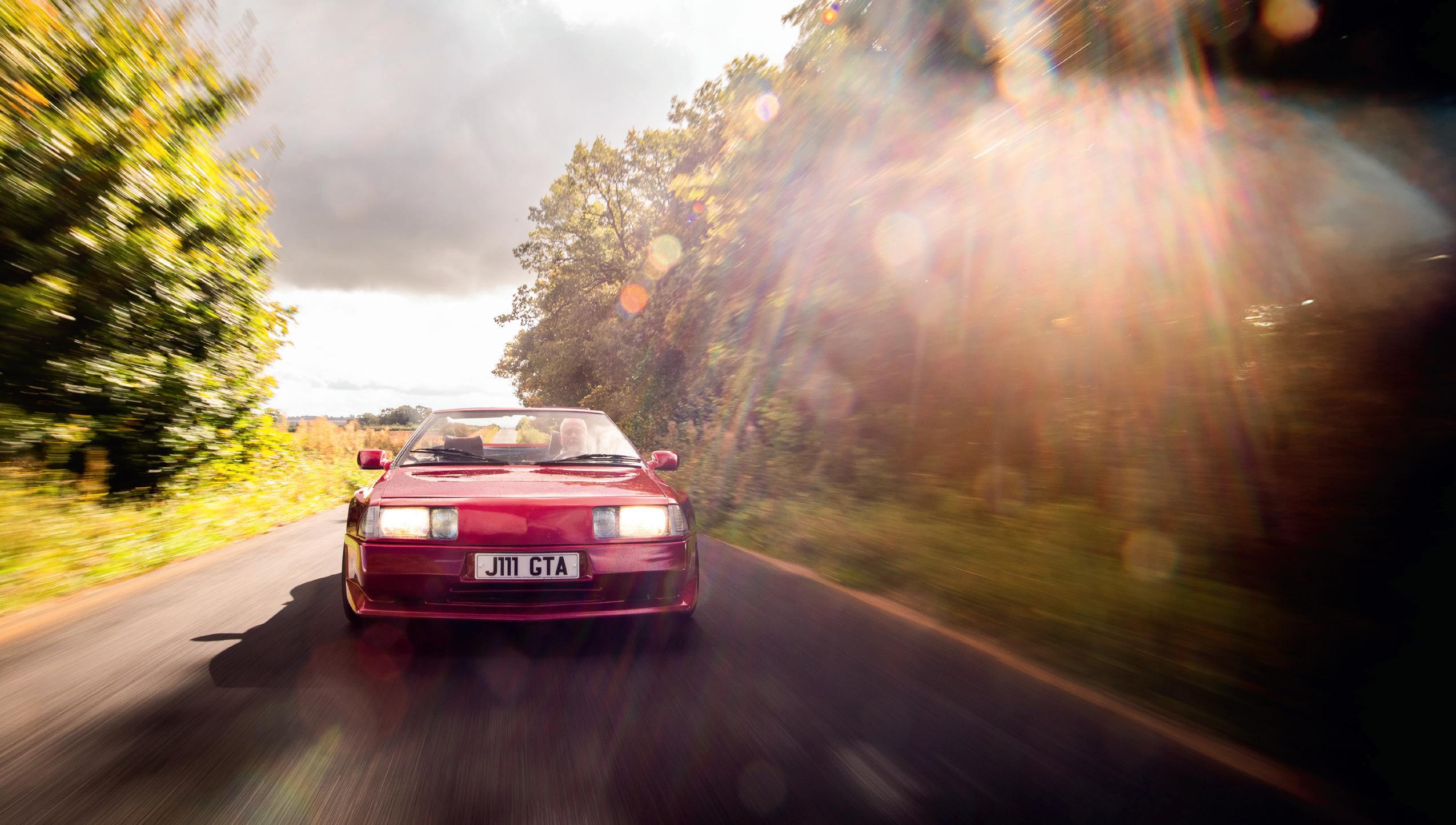
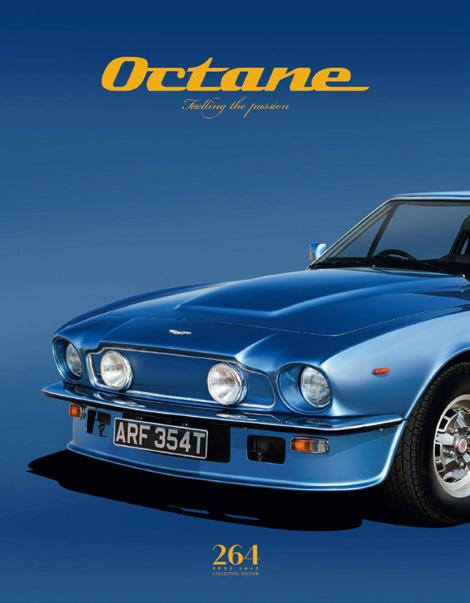
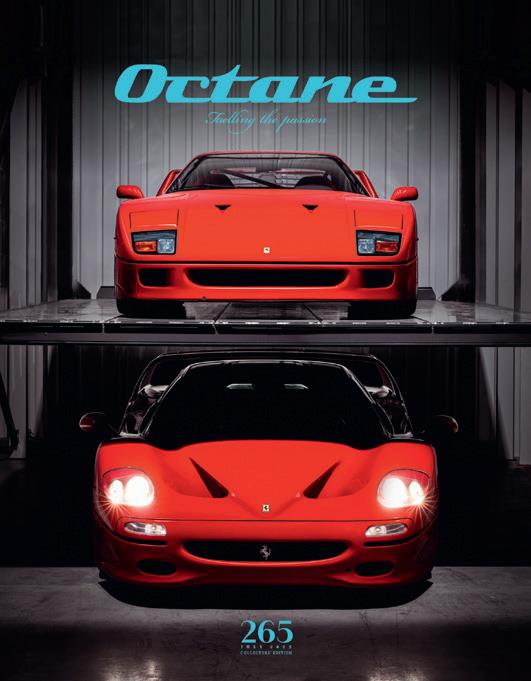

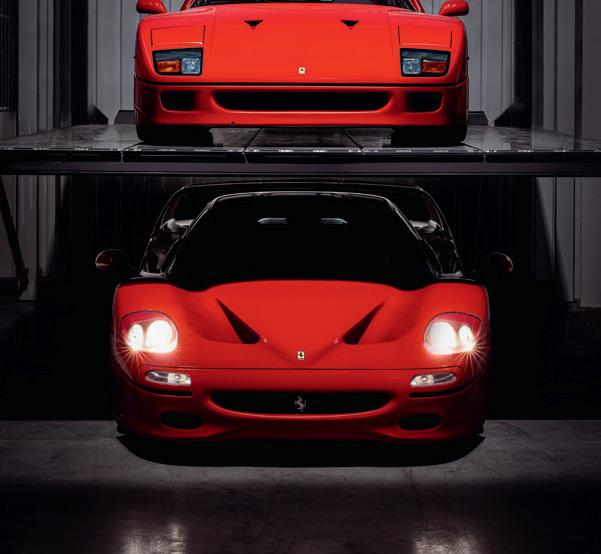

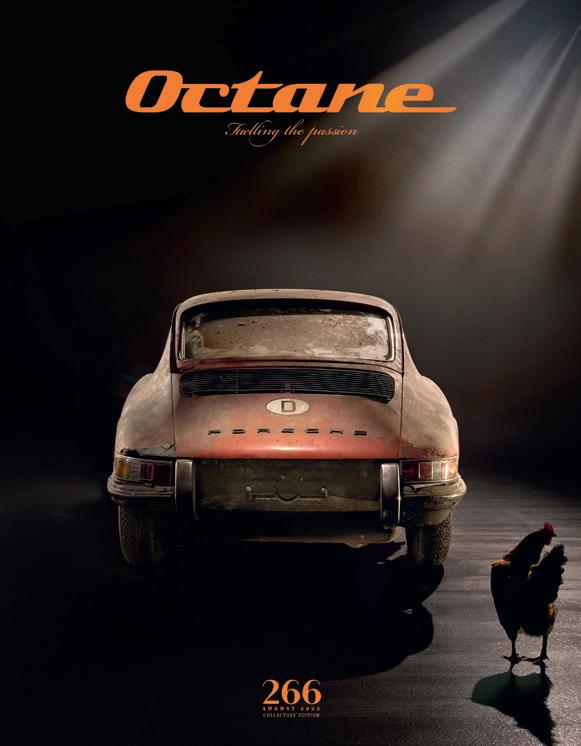
THE MARKET
The poignant pull of a VE Day veteran
Legendary all-wheel-drive military stalwart remains an evergreen classic thanks to a dedicated following
TO MARK THE 80TH ANNIVERSARY of VE Day, there can be only one vehicle to track in this issue: the Willys-Overland MB, also built by Ford as the GPW, but better known as the ‘Jeep’.
My first experience with this vehicle was in the late 1990s. As a young officer in the British Army, I was posted to Jamaica for a few weeks to run a jungle exercise with the Jamaica Defence Force. Stationed in Port Antonio, I was issued with a driver and a Jeep. The vehicle was noisy, rattly and really basic, even compared with the Land Rover Defenders I was used to – but it did its job, coping with some extraordinary terrain. Plus, if it became stuck, it was so light that eight people could pick it up.
The Jeep’s story started 50-something years before my experience when, in June 1940, the US Government sent out a request to 135 manufacturers for designs for a light, all-purpose military vehicle. The specifications were fairly demanding: a “rectangular-shaped” four-wheel-drive vehicle, with a maximum weight of 1200lb and a payload of 600lb. It was to have a wheelbase no longer than 75 inches, and a maximum height, with windscreen folded, of 36 inches. Oh, and a prototype had to be provided within 49 days.
Only American Bantam and WillysOverland responded. The latter offered the lowest bid but couldn’t meet production deadlines, so Bantam was given the contract. The small firm, formed from the ashes of the American Austin Car Company in 1935, quickly realised it couldn’t keep pace with demand, and so the contract was expanded to Willys and Ford, each of which produced their own version. These ‘Military A’ models were mostly sent overseas before, in July
1941, the design was standardised, giving rise to the now-famous Ford GPW and Willys MB. The name Jeep, incidentally, predates the Ford designation, which was created a year after the Bantam example and widely reported using the catchy nickname.
One of the most instantly recognisable classics around, the Jeep still evokes strong emotions. Values have remained relatively flat for a while – the current Hagerty Price Guide UK Excellent figure of £23,300 is just where it was in 2015 after a peak of £27,900 in 2017 and a low of £20,900 in 2021. Higher prices are reserved for vehicles with originality and war history, and body tubs embossed with the Ford logo demand around a ten percent premium.
Buyers also pay more for those with famous links: an ex-Steve McQueen Jeep was sold by the then Silverstone Auctions (now Iconic) in 2018 for £84,375, and others reportedly used by Eisenhower and King George VI were offered for big values but failed to sell. The ultimate collector’s Jeep is the legendary crated example, the partially disassembled vehicle packed into a wooden box, but these are extremely rare.
Ownership demographics are interesting: 47 percent of Hagerty Jeep owners worldwide were born before 1965, compared with 35 percent of all cars insured. That’s no surprise really, given that these are people more likely to have a direct emotional link to World War Two.


JOHN MAYHEAD Hagerty Price Guide editor, author, market commentator and concours judge.

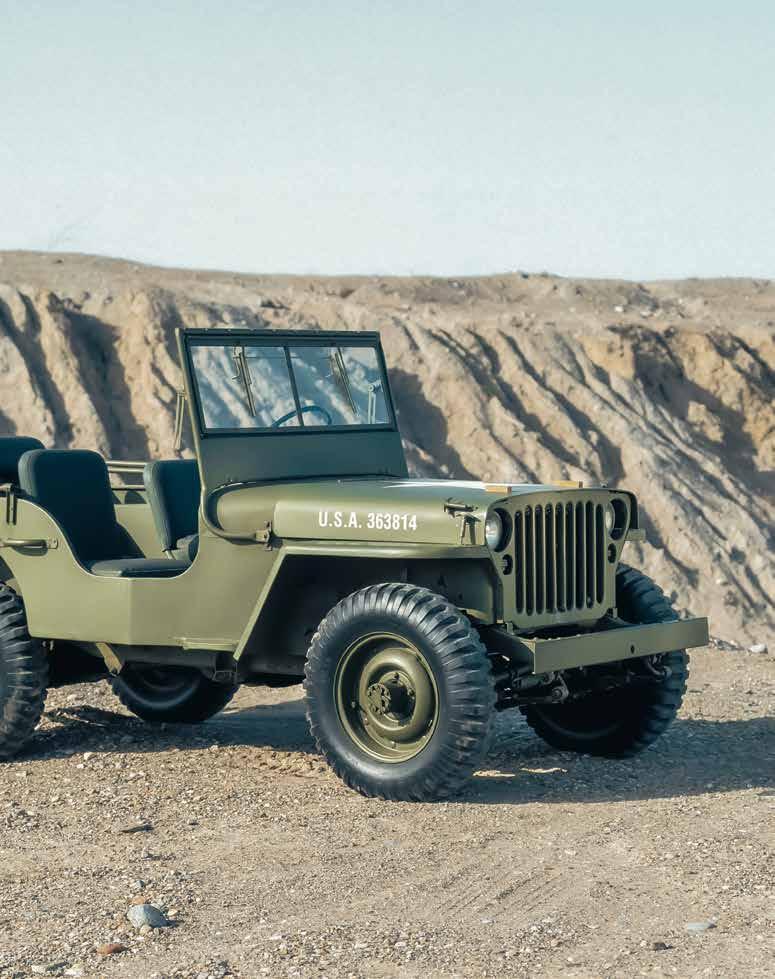
‘The instantly recognisable Jeep still evokes strong emotions’
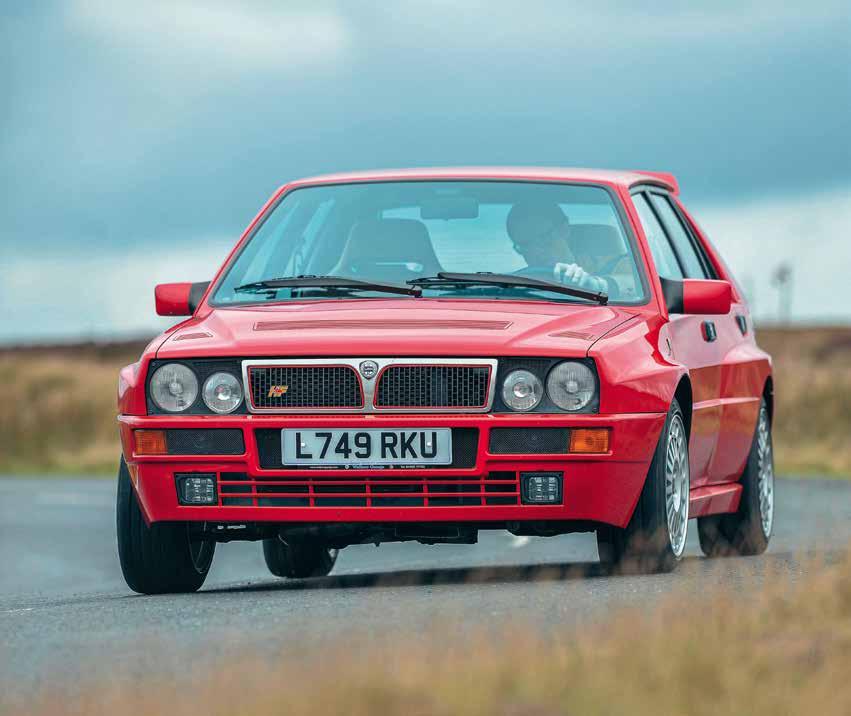
Lancia Delta Integrale
The homologated version of the most successful rally car ever gave mere mortals a hint of the magic
BORN FROM A NEED TO MEET MOTOR sport regulations, homologation specials are some of the most fascinating cars out there. They tend to feature race-bred components and unique features, which set them apart from their less exotic stablemates and transform them into engaging driving machines.
Lancia’s Delta Integrale undoubtedly falls into this category. Developed to satisfy the World Rally Championship homologation requirements, it was one of the first hot hatches to effectively utilise turbos and four-wheel drive. However, for a younger audience, the Integrale is also synonymous with gaming, in particular Sega Rally Values have rapidly escalated in more
recent times, and at the very top end of the market special-edition versions of the Evoluzione models are into six figures.
As with a lot of Group A homologation specials, the road car doesn’t quite live up to the flame-spitting 350bhp competition warriors – but it gets far closer than most of its period rivals thanks to its peaky turbo lag, feelsome controls and raspy twin-cam engine note. Although modern hot hatches will run rings around it, that’s not the point – the feeling of being dragged through corners in an Integrale on the limit is one of motoring’s finest experiences.
In its day the Lancia was one of the fastest point-to-point machines, shaming Ferraris and Porsches. Even now, its sub-6.0-second
Words John Tallodi / Nathan Chadwick
Photography Magic Car Pics


0-60mph time is damn quick – and all in a car that can trace its origins back to 1979. There are some negatives: the driving position is high, the fixtures and fittings are flimsy and the cabin stops rattling only when the ignition is switched off. However, the Integrale has so much charm that you will forgive it as soon as the road gets wiggly.
Despite doing most of the winning in the World Rally Championship, the 8v and 16v cars are currently the cheapest Integrales – and aficionados argue that they’re the best to drive. However, it is the Evoluzione models in all their wide-arch pomp that command the best prices, and represent the highest development of the Integrale icon. Whichever variant you choose, this

What to pay
8v
Fair £17,000
Good £23,600
Excellent £30,800
Concours £42,100
16v
Fair £18,700
Good £23,100
Excellent £32,200
Concours £44,700
Evoluzione I
Fair £33,400
Good £48,000
Excellent £62,100
Concours £81,700
Evoluzione II
Fair £45,200
Good £58,800
Excellent £75,000
Concours £101,000
* Prices from Hagerty Price Guide
THIS SPREAD This late-model 1994 HF Integrale is one of the ‘standard’, non-Evo models. It’s these that represent the best value at the moment, while still being a great drive.
Lancia is a sure-fire adrenaline-booster on the right road, and you will always draw a crowd at a petrol station. While the Subaru Impreza and Mitsubishi Evo have eclipsed it for empirical ultimate on-road ability, there’s just something about an Integrale. Let your inner Miki Biasion out on your nearest B-road, and you will swiftly understand…
Engine and gearbox
The basic Integrale block is solid, but many cars have been remapped and modified, which puts a lot of strain on the internals. Beware that a noisy idle can indicate worn cam lobes, leading to camshaft damage. Smoky exhausts and a drop in power can point to worn valve guides, tired turbos
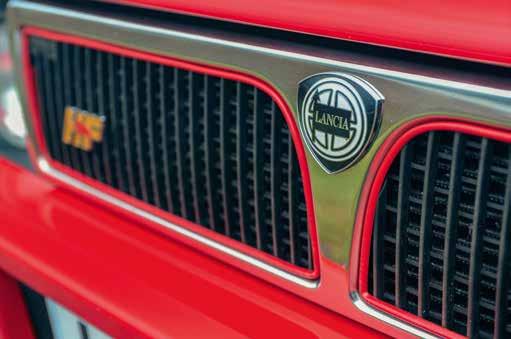
Specifications
2.0-litre turbocharged inline-four
Power 163-215bhp
Top speed 129-137mph
0-60mph 5.7-7.8 seconds
Economy 20mpg (est)
Model history
1986 Delta HF 4WD launched with 163bhp eight-valve 2.0-litre turbo, seven years after introduction of Delta hatch
1987 185bhp Delta HF Integrale 8v with larger turbo and wider bodykit arrives
THIS SPREAD As one of the firstever hot hatches to effectively utilise turbos and four-wheel drive, the Integrale’s rally-bred heritage was evident both inside and out.
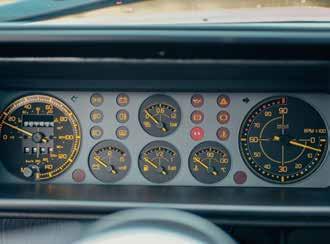
or both. The limited underbonnet space means that accessing certain components such as the turbo can be labour intensive, so rectifying a minor oil leak or changing a belt may cost more than you might assume.
Synchros take a beating, and crunching in any of the low gears may require a ’boxout repair. The differentials are strong and shouldn’t be an issue, although the front epicyclic diff doesn’t enjoy being launched. Be wary of this on hard-driven cars.
Suspension and brakes
The standard suspension system offers a good compromise between comfort and handling. Some owners uprate the springs and install strut braces, but this can negatively affect overall balance. The chassis can also develop cracks if a very stiff
suspension set-up is installed, so it is best to avoid heavily modified examples unless significant chassis bracing has been fitted.
A set of fresh suspension bushes and shocks on the standard system can make a big difference to the way a vehicle handles. Modified brakes are common, too. This is no bad thing, because the stock units are not entirely up to the task of regular hard use.
Integrale Evo models came with front strut braces, along with upgraded Brembo four-pot front brakes. However, the latter units were not up to much even when new, and many owners have upgraded them with aftermarket items over the years – we know of one man who fashioned a solution using Lamborghini Murciélago stoppers.
It’s also worth taking note of the wheel sizes fitted to the Integrale. They were
1989 HF Integrale 16v now produces 200bhp, and its suspension and transmission are updated
1991 Evoluzione arrives with 210bhp; changes include new exhaust and further suspension updates
1993 215bhp Evoluzione II is final iteration of platform. Watercooled turbo and 16-inch alloys among detail changes. Several special editions produced with varying trim and paint changes
1994 Last special edition, Edizione Finale, launched for Japanese market only, with livery inspired by Fulvia HF. Total of 250 are made, complete with special trim and rear strut bar
designed to run on 16in alloys, but many owners have fitted 17in rims, which fill out the huge arches better. However, unless there have been further suspension mods, this can severely affect the ride and handling.
Bodywork
The Integrale may look hardcore thanks to its aggressive bodykit (especially on later Evos), but beneath all the plastic bravado is the shell of a late-1970s hatchback that was at its limit dealing with 200bhp-plus and a grippy all-wheel-drive set-up. As a result, some cars have developed stress cracks around the A-pillars and screen surrounds. The aftermarket has begun to offer chassisbracing kits, which help enormously.
Rust can also manifest itself in the usual places such as the wheelarches, sills, rear
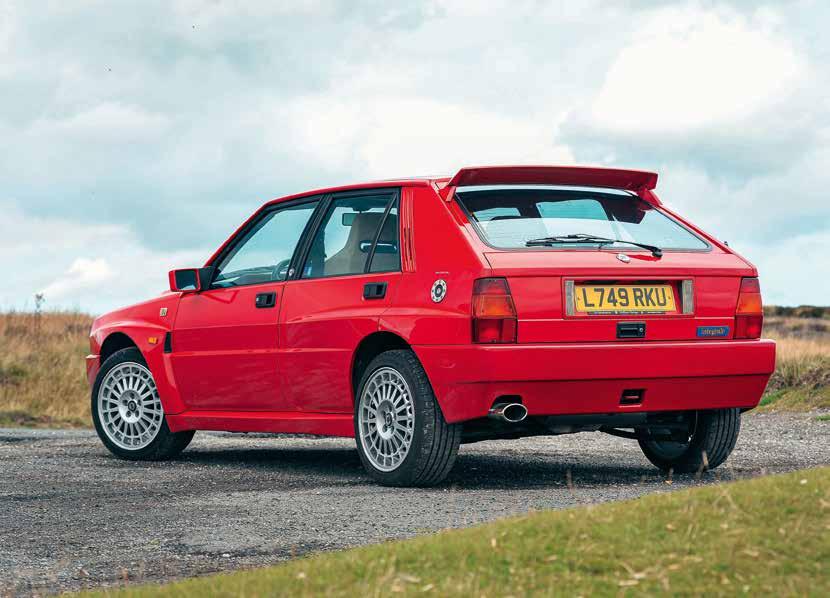
subframe and floorpan. Not all panels are easy to source, but specialists can rectify a corroded shell – for a price. FCA Heritage now offers Integrale parts, including front and rear bumpers made using the original moulding equipment.
Interior
The cabin shares much with the standard Delta, meaning hard plastics and budget switchgear. Still, most of the materials are robust, although the seat bolsters tend to wear out and door cards can look tired. Watch out for unique pieces in the special editions, such as carbonfibre trim – this will be challenging and costly to replace. Check the electrics; some issues are due to faulty fuses or earths, but certain electronic components can be very difficult to source.
‘In its day the Lancia was one of the fastest point-to-point machines’
Which to buy
With so many iterations and incremental updates carried out, it’s easy to get lost in the details. Values have not always been at these high levels, and many cars have been modified and crashed. Focus on finding a well kept model with a verifiable service
history, rather than a particular variant. Test more than one car, because condition can really impact the drive (as can the aforementioned wheel sizes). The later Evoluziones are the quickest and most capable, but few owners will be thrashing theirs on a regular basis – even less so now that values are so high for these final cars.
Certain special editions of the later Evos can command Ferrari-rivalling prices. However, other than the Edizione Finale (which has a rear strut brace), the changes over a normal Evo are restricted to trim details and paint: worth remembering given the – ahem! – price delta between the two. Find the best one you can afford, and drive it regularly – if only to remind other road users that Lancia used to produce some of the world’s most desirable cars.
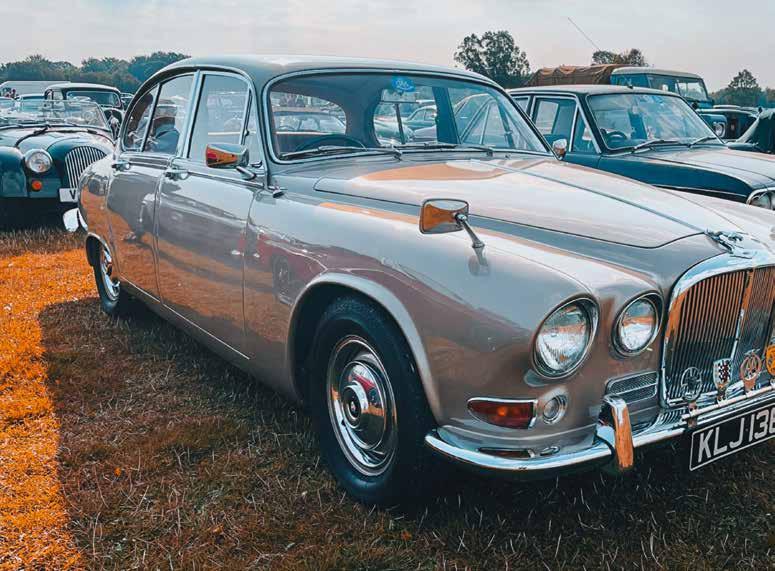
CLASSIC CHOICES
Revival wonders
The Goodwood Revival is a calendar highlight – and aside from the Historic racing, the jewel in the crown is the pre1966 car park. But if your usual taste is more modern, how do you get involved?
IF YOU HAVE NEVER BEEN, YOU WILL never understand. You might think the hype is unwarranted, the esteem in which the event is held overblown. Yet the thing is – the Goodwood Revival is just as brilliant as people say it is.
It’s not just about the motor racing, it’s the full-on immersion of everything around you, celebrating the 1948-66 era –when the Goodwood circuit hosted the world’s finest racing drivers – and the wider culture about it. Punters dress up in period-correct costume, and that extends to the cars they drive, too. Perhaps the greatest thing about the Revival is the pre1966 car park, where people come from across Europe in their pre-66 classics.
You really could lose an entire day strolling around the car park, marvelling at the sheer diversity on show, from the proud legions of MGs, Triumphs and Jaguars, to
Words Nathan Chadwick
Photography Magic Car Pix / Nathan Chadwick
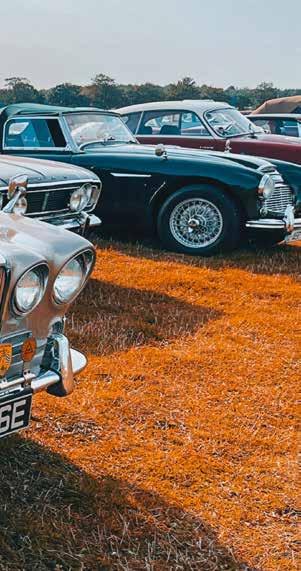
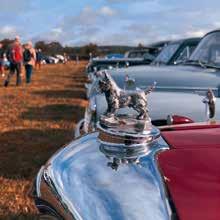
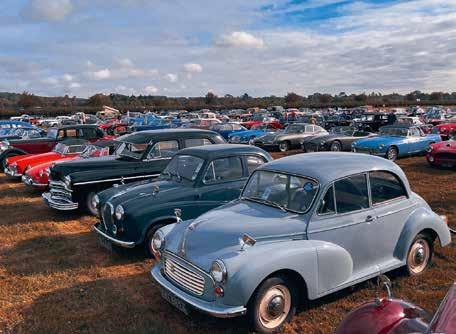
the delightfully obscure glassfibre oddities produced in single figures. You’ll stumble upon priceless, immaculate Ferraris sat next to rat-look American metal, and Willys Jeeps perched next to European haute couture such as a Citroën DS Décapotable, and everything in between. It really is a treat for the eyes.
It’s hard not to feel inspired – and now’s the time to get involved. The wider classic market currently seems to be shifting focus away from 1950s and ’60s cars, so models from this era are now much more accessible than they have been in a long time.
However, if your motoring tastes have been far more modern up to now, a 1950s60s car or motorcycle might seem daunting – after all, the technological advances of the late 1970s and ’80s make for an entirely different driving experience than you might be used to. The good news is that, for the
‘You really could lose an entire day strolling around the car park’
most part, it’s a challenge that rewards in a very different way to a more modern classic.
There’s a wealth of cars and bikes to choose from, and there’s an entry point for everyone. Whether your taste is for lightweight and pointy, leather-bound and luxurious, or rugged and weather-worn, there are options beyond the obvious –and they do not have to cost the earth to buy and, more importantly, to run.
Take the Jaguar Mark X/420G. It exudes classy confidence, and you can buy a good one from £15,300, with a concours example setting you back £30,200. While it might not have the full sporting prowess of a much more expensive E-type, it does share that car’s much-vaunted William Heynesdesigned independent rear suspension. It also boasts the XK straight-six in 3.8- and 4.2-litre forms, and four-wheel disc brakes. You even have a choice of manual
THIS SPREAD From the Jaguar Mark X/ 420G to family saloons from Morris and Austin – you’ll see it all at the Revival.
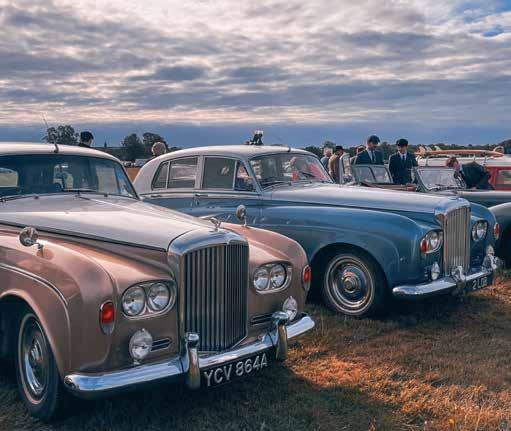
gearboxes, although the three-speed BorgWarner auto is the most common option – all the better for wafting across the South Downs to your Goodwood rendezvous, but with all the grace, space, pace and handling nous Jaguars of this era are imbued with. Most importantly, however, because of the parts commonality with the E-type, there are plenty of specialists and communities around to help you take the leap into 1950s-60s classic ownership.
Applying any specialist work to your car will cost you in labour, and with a model such as the Mark X/420G, a full restoration will cost far more than you’ll ever receive when you come to sell. The good news here is that it is possible to work on this era yourself – unlike more modern cars, there is little in the way of niggling sensors, misbehaving ECUs and a litany of other issues that make more modern classics a challenge to own. With a little time and research, and a big enough garage, you can perform much of the maintenance at home.
But what if a Jaguar is a bit too luxurious, and you fancy something truly sporty yet relatively simple to look after, yet slightly different to a Lotus? Again, there’s great news here – take marques such as TVR, Ginetta or Marcos. While the flamboyant glassfibre bodies are exciting, alluring and
‘One of the joys is seeing all facets of US culture, from fins to muscle cars’
THIS PAGE Bentley luxury proves a popular way to travel to the Revival in style, but workaday classics are just as prevalent in the pre-66 car park.
out of the ordinary, the mechanicals were taken from Ford, BMC and other more mainstream manufacturers, meaning that understanding how everything works is contained in a wide-ranging knowledge base. Of course, some parts will be difficult to get hold of and expensive when you do, but this is the challenge of daring to be different. Happily, even today, Ford or MG parts are out there, or being reproduced.
The Revival car park is about so much more than British marques, however – and in addition to European flavours from Italy, France, Germany and Sweden, there’s a big Revival following from US car enthusiasts. Ford’s Mustang is by far the most popular American car, but one of the joys is seeing all facets of US culture from flamboyantly finned machines to Coke-bottle muscle cars, as well as fascinating oddities such as the Nash Metropolitan. Owning and running a Yank has never been easier – the internet is your friend, with a lot of parts easily available and delivered in a matter of days.
Of course, there is safety in numbers –that’s part of the appeal for such legends as the MGB, Mini, Morris Minor, E-type, 911 and Mustang. However, if you wish for something different without the perils of going too far into niche territory, there’s plenty to tempt. See you in the car park…
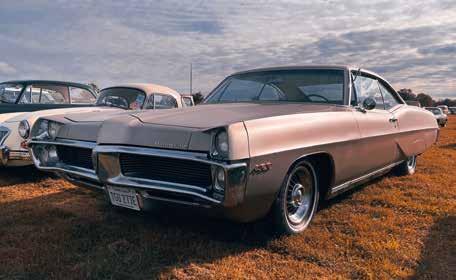
Seven ways to stand out in the Revival car park
From sporting elegance to American land yachts, and British luxury to homes on wheels, here are seven options, valued by Hagerty from £5000
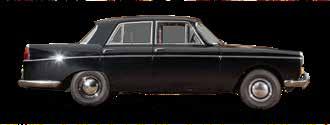
Austin Westminster
You don’t need to break the bank for a classy four-wheeled companion. The Westminster ran through various generations, all powered by a straight-six that’s more than capable of keeping up with modern traffic. With a starting valuation of just £6300 for a good one and £12,300 for a concours machine, these characterful executive cars provide a taste of luxury living without the bills.
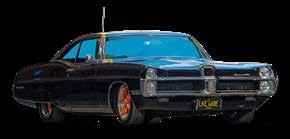
Pontiac Bonneville
American culture is all about bang for your buck, and the enormous Bonneville has plenty of bang from its V8. At 5.6m long, you get your money’s worth in sheet metal, too. The Pontiac spawned several generations, but the Bill Mitchell-penned fourth series combines muscle car looks and opulent luxury. In the US you can pick up a good one for £11k, rising to £25k for a minter (plus import costs).
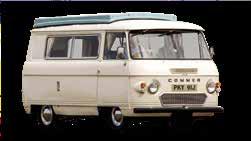
Commer FC camper
A sports car might not seem the ideal basis for a van-based camper, but that is exactly what the Commer FC is. Underneath the charmingly curvaceous exterior lies the engine and chassis of a Sunbeam Alpine. You won’t get sports car handling or performance, but you can expect far greater levels of road car sophistication than you might imagine. Expect to pay upwards of £5k, to a lot more for mint examples.
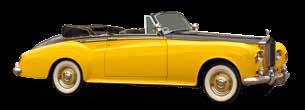
Rolls-Royce Silver Cloud/Bentley S
A major step forward in styling over Rolls-Royce and Bentley cars from the pre-war era, these models formed the basis that underpinned the wider range. As such, more than 7000 were built, keeping values in the realm of achievable aspiration rather than a lottery win. A good Silver Cloud I will set you back £28k-plus, while a concours contender will take you to Goodwood for around £55k.
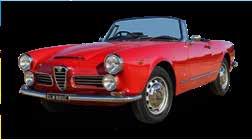
Alfa Romeo 2600 Spider
If you do fancy splashing out on something exotic, a classic Alfa is always an alluring option. However, you don’t have to do ‘the usual’ and buy a 105 series. The charming 2600 marries a usefully potent straight-six with a truly elegant 2+2 body courtesy of Carrozzeria Touring Superleggera, at a fraction of the cost of an Aston DB5 droptop. Good examples start at £67k, with concours cars twice that.

Willys-Overland MB Jeep
While a Land Rover Series I will always garner affection from the Goodwood crowd, why not be a little different and try a Willys Jeep? They’re not the easiest car to drive on modern British roads: they have a top speed of... not much... and few creature comforts. However, very little attracts so much attention for as little as £17k. The Jeep is discussed more in The Market elsewhere in this issue.
Harley-Davidson WL45

This robust, sidevalve V-twin-powered bike, which was developed into World War Two’s WLA military stalwart, soon gained a reputation in civvy street for its reliability and ability to be chopped around and customised. These are also popular with Goodwood’s own vintage ‘biker gang’, The Hornets. These days you can pick up a good WL45 for £15k, with concours examples changing hands for £20k-up.
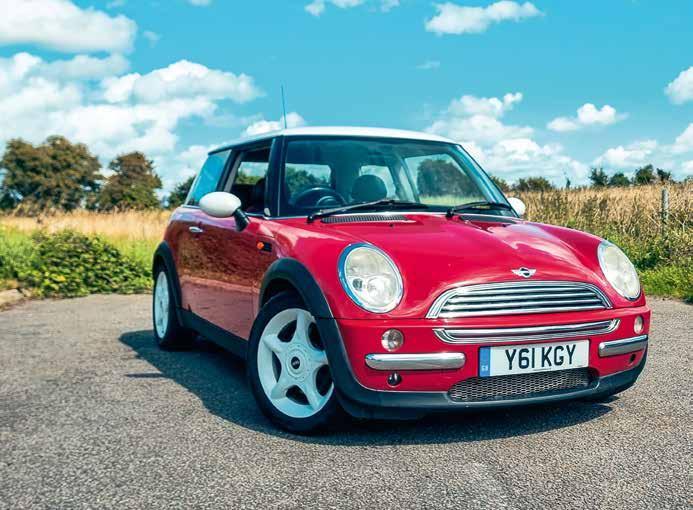
HAGERTY STAFF CARS
The Mini and me
Hagerty staff walk the walk as well as talk the talk –as its events manager’s own classic car tale proves
Adam Sloman
2001 MINI Cooper
Owned for: 12 months
Mileage: 98,000
Best driving road: B2116 Ditchling, East Sussex to Offham, Kent
Dream car: Rally-spec Lancia Delta HF Integrale (in Martini Racing livery) or 1959 Miller-Meteor Cadillac ambulance in Ecto 1 Ghostbusters trim…
First car: 1987 Mini City E
Favourite parents’ car: My Dad’s MGB GT. He bought it new and left it to me when he died
EVER
SINCE I WAS A KID, I’VE LOVED Minis. The ride, the handling, the cheeky looks, and the fact that even the most basic of models can still make you feel like the best driver in the world... few cars inspire quite as much confidence in a driver as a Mini. Perhaps unsurprisingly, my first car was a Mini. Twenty other classic Minis have followed it: saloons, estates... you name it, I’ve owned it. Almost all of them dated from the 1970s, ’80s and ’90s, my meagre budget never once getting close to the kind of money that an early car commands. As with a lot of the community, when the
Mini became the MINI in 2001 I was outraged – how dare they try and force this German imposter upon us. That didn’t stop me heading to my nearest BMW dealer in my well worn 1988 Mini Mayfair and blagging a test drive. It was cool, even if I wouldn’t admit it at the time. One person who was impressed was my dad, and in September 2001 he came home in a brandnew British Racing Green MINI Cooper. Fast forward to the 2020s, and my attitude towards MINI as a brand has softened. My daily driver is a 2016 Clubman Cooper S, which is kept company by a 1989
Mini 30 anniversary edition. We sold my Dad’s Cooper in 2013 when his health took a turn for the worse; we lost him in 2014 and didn’t really think about the MINI again. Until 2020, when a friend spotted the exact same car on a for-sale page on Facebook for £200. I messaged the seller, and explained my interest in the Cooper.
The guy said he had someone coming to view, but would tell them it had sold if I wanted it. I began hatching plans to go and get it, but it was my wife who offered me a dose of reality (as she often does when I have hare-brained schemes involving cars). The country was in Covid lockdown, the car was in Wales without a clutch, and I had nowhere to store it. Someone had to be realistic. While I made my peace with the knowledge I couldn’t get the car back, the appeal of an early ‘R50’ MINI stayed with me – and this was amplified when the model was selected for the 2022 Hagerty Bull Market.
The R50, to my mind, is probably the best iteration of the modern MINI, distilling a lot of the original car’s character. But within the R50 is a subset of even rarer MINIs, known in certain circles as ‘the Y-reg cars’.
These are pre-production cars, built both as a test of new manufacturing methods and also to create a fleet for press launches and dealer demos. The first customer cars were registered in September 2001, so these preprod models are easily discerned thanks to their Y-reg ’plates. You can also spot a ‘Y’ due to its cog-themed floor mats, red door cards and ‘MINI’-embossed pedals. Other, variations include different scuttle-panel vent grilles and a lack of bracing in the roof panel – an area that can be easily dented. Paint is also quite easily chipped, especially on the roof and tailgate aperture.
This particular Y-reg found its way to my door through a friend in Wrexham and my brother. It’s a long story, but for the sake of brevity I’ll just say my brother had a change of heart with the car and passed it to me, with the hope that I’d get it back to its best.
Cosmetically, it’s not too bad – a smell of damp and an excess of dog hair did it no favours, nor did the sagging headlining held in place with drawing pins. This was the first job I tackled: £50 on eBay bought new fabric and enough spray glue to give Spider-Man a run for his money. I’ve never attempted anything like this before, but the effort of proper preparation and the luxury of time

‘Even the most basic of Mini models can still make you feel like the best driver in the world’
paid dividends; over the course of two weekends I removed the board and stripped it of the old foam and glue, before recovering it and fitting it. The difference is huge, and it makes the car a much nicer place to be.
My next jobs are dealing with some hideously clonking top mounts (these are different on pre-production cars), a couple of annoying electrical gremlins that cause the radio to pop its fuse regularly, and an annoying issue with the Body Control Module that has affected the gauge cluster and some of the warning lights. If you happen to be an auto electrician, or someone with a deeper knowledge of these early MINIs than me, please get in touch.
Long term, I’ll loan the ‘Y’ to our friends at StarterMotor; it might seem like a ‘new’ car, but to the charity’s young ambassadors it’s already a classic and has huge appeal. Anything that helps more people realise ‘happiness is Mini shaped’ is just fine by me. You can find out more about StarterMotor here https://startermotor.co.
THIS SPREAD Adam is slowly bringing his rare Y-reg MINI back to its best; the sagging headlining was the first place he started.
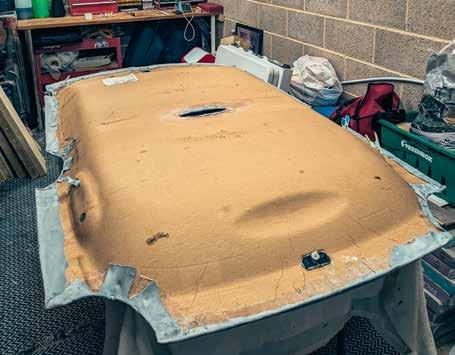

REARVIEW MIRROR
Solving the restoration problem
The industry is facing a serious skills and experience gap. What’s the answer?
THE RECENT HAGERTY HILL CLIMB
at Shelsley Walsh, the world’s oldest motor sport track with its original layout, was again a reminder of the special place classic cars have in our lives. Not only do they thrill us (witness the Ford Fiesta R5 that made it to the top in an amazing 36 seconds), they also bring us together as a community. And in this fractured age, that is very valuable.
At Hagerty we want the good times to keep on rolling – but there’s an issue. There are around 1.5 million historic vehicles in the UK, says the Federation of British Historic Vehicle Clubs (FBHVC), and about 683,000 owners. But while more and more people are ‘into’ vintage cars, motorcycles, buses, lorries, and military, agricultural and steam vehicles, ever fewer people know how to fix and restore them.
Our craftspeople – in both the UK and the US – are retiring, often without passing along their skills. Likewise, parts are increasingly harder to come by, especially for early 20th-century cars. What is the solution? Well, recently we spoke about this with Dominic Taylor-Lane, founder of the Association of Heritage Engineers.
How acute is the need to pass on skills?
We can teach people to use tools and work on cars – many youngsters are now entering the industry at apprentice levels. So, in part, a need is being addressed. The acute issue is that of experience, especially in older engineering and skills fields. This ‘experience gap’, because of two or three decades without significant recruitment, is what will catch up to us. The need to harness that experience before it leaves the industry is the real challenge.
Is the shortage felt at every level?
Absolutely: skills, tricks, information and tips are often kept close to people’s chests. That unique specialist skill set is where their value can be found, so it is no real surprise that some are often loathe to ‘share’. This is particularly acute for high net worth vehicles, with those who work on them often not ‘retiring’ in the conventional sense; the passion is literally lifelong.
What is the worst-case scenario?
From a business perspective it will mean a difficult future. Recruitment is already


MCKEEL HAGERTY CEO and chairman
challenging and is one of the major hindrances to growth and development. Without those businesses, I suspect only a handful of technicians would be comfortable setting up on their own, making the whole vehicle-ownership experience hard and expensive. It’s not a way forward with younger customers in a world that is so convenience driven.
How do we draw people to the field?
A change in attitude and respect to people who work with their hands across the board. The world can’t function without people actually doing ‘stuff’. The industry needs to ‘sell’ careers within it, offering the aspiration and progression people now expect. It is going to be very challenging. Work ethic and commitment are ever evolving, and we need an industry-wide strategy to adapt with that expectation accordingly.
Thank you to Dominic for his insights. Now I’d like to hear yours. Have an idea on how we pass along skills and draw more people into the collector car trade? Send it to me at mhagerty@hagerty.com.
Until next time, keep on driving.
BENTLEY MOTORS
